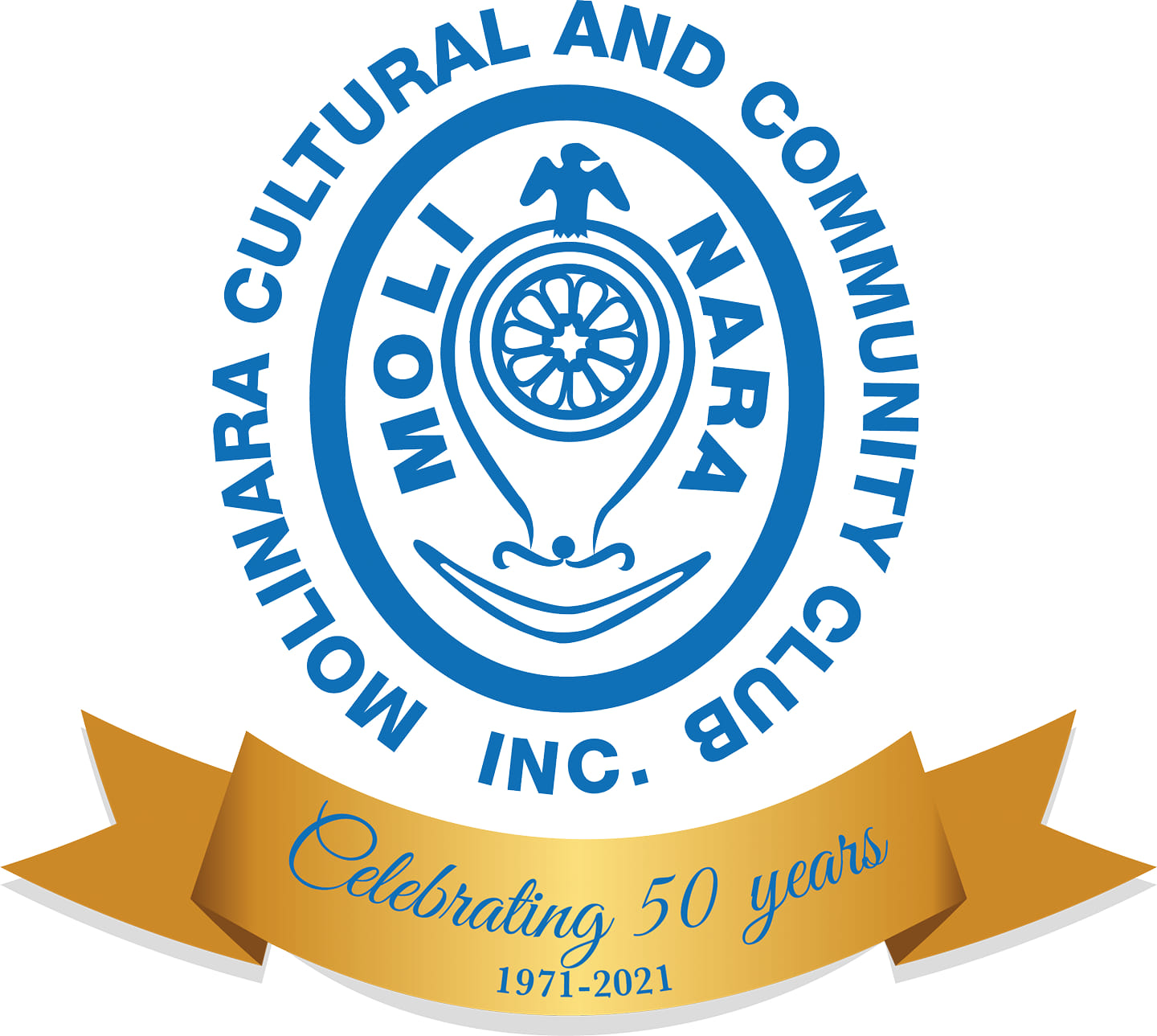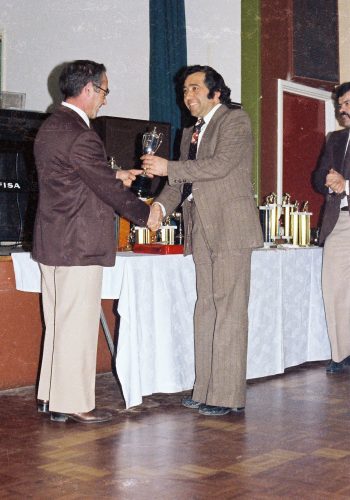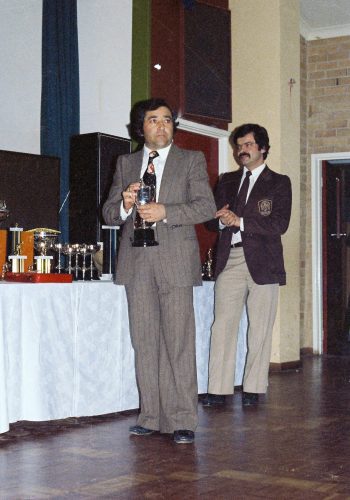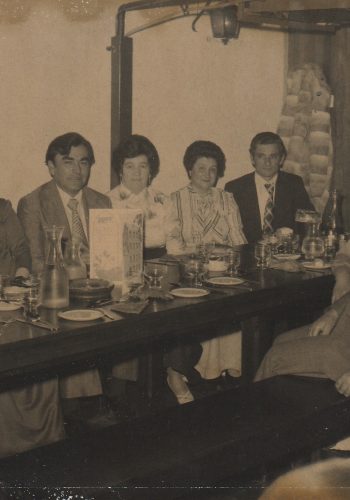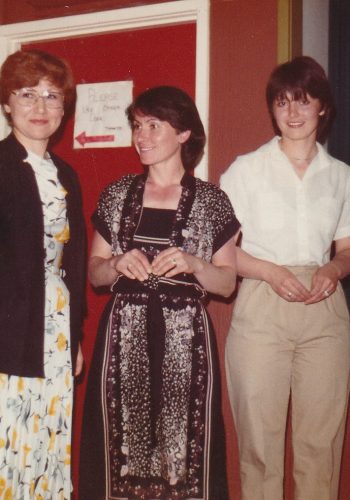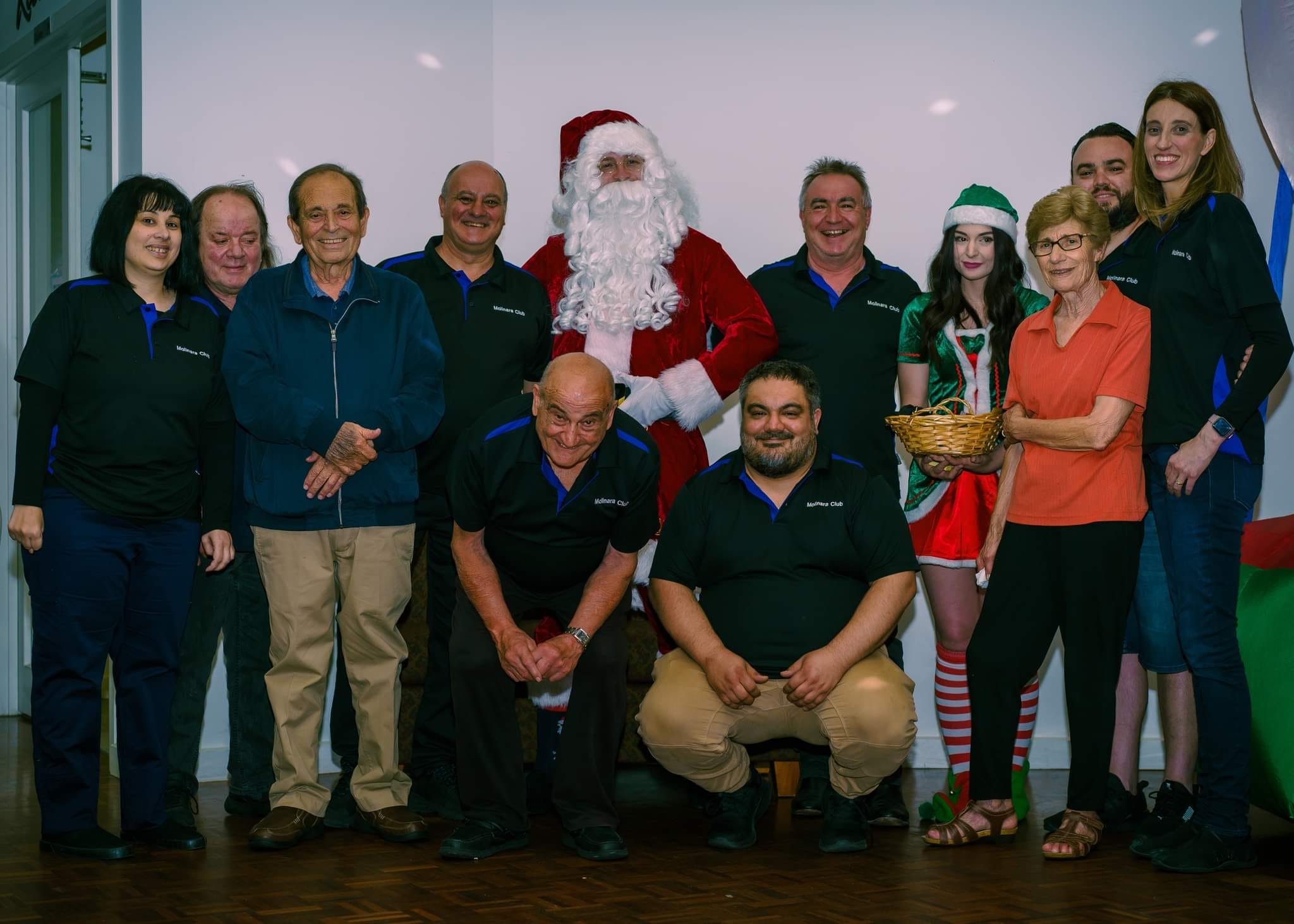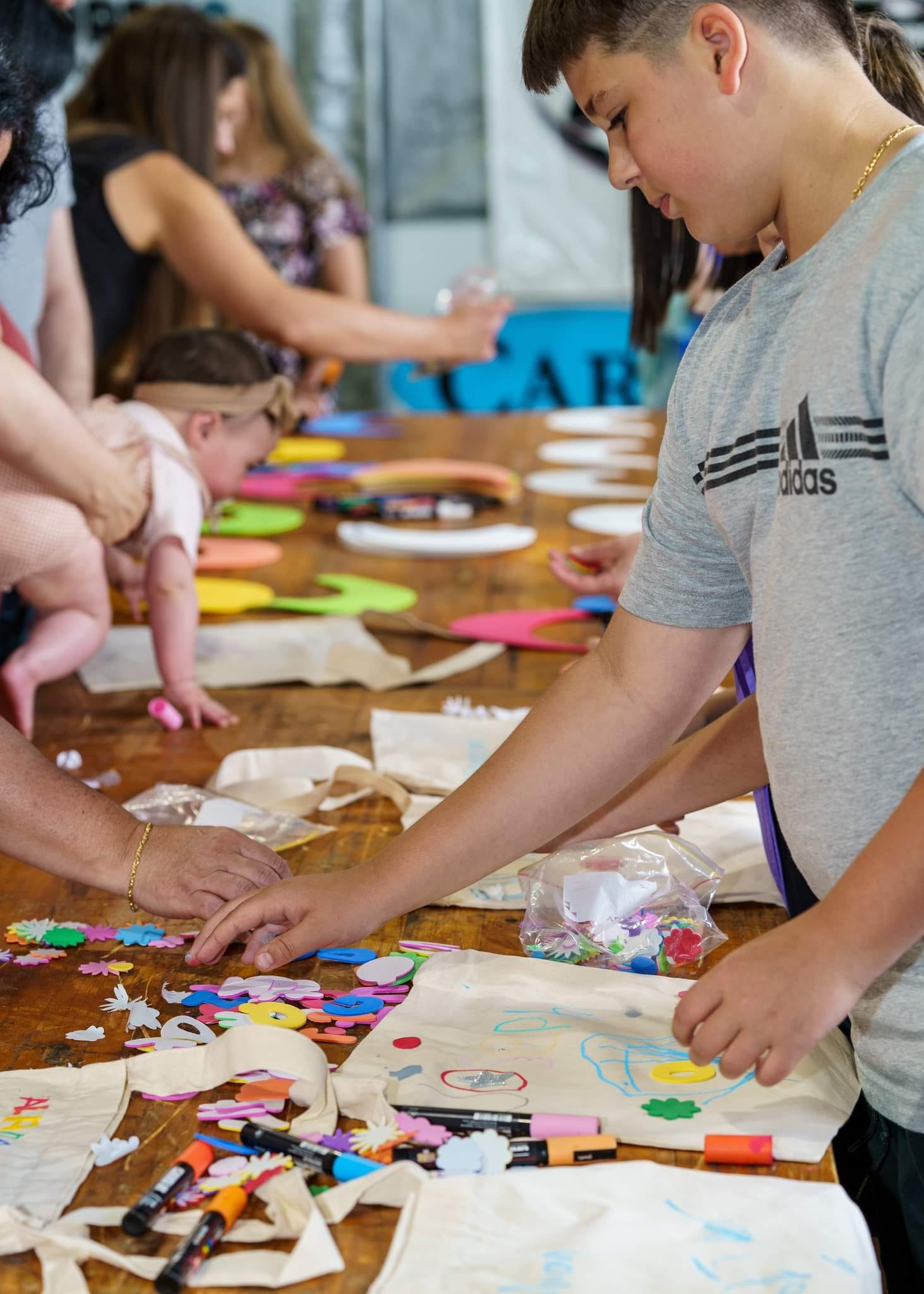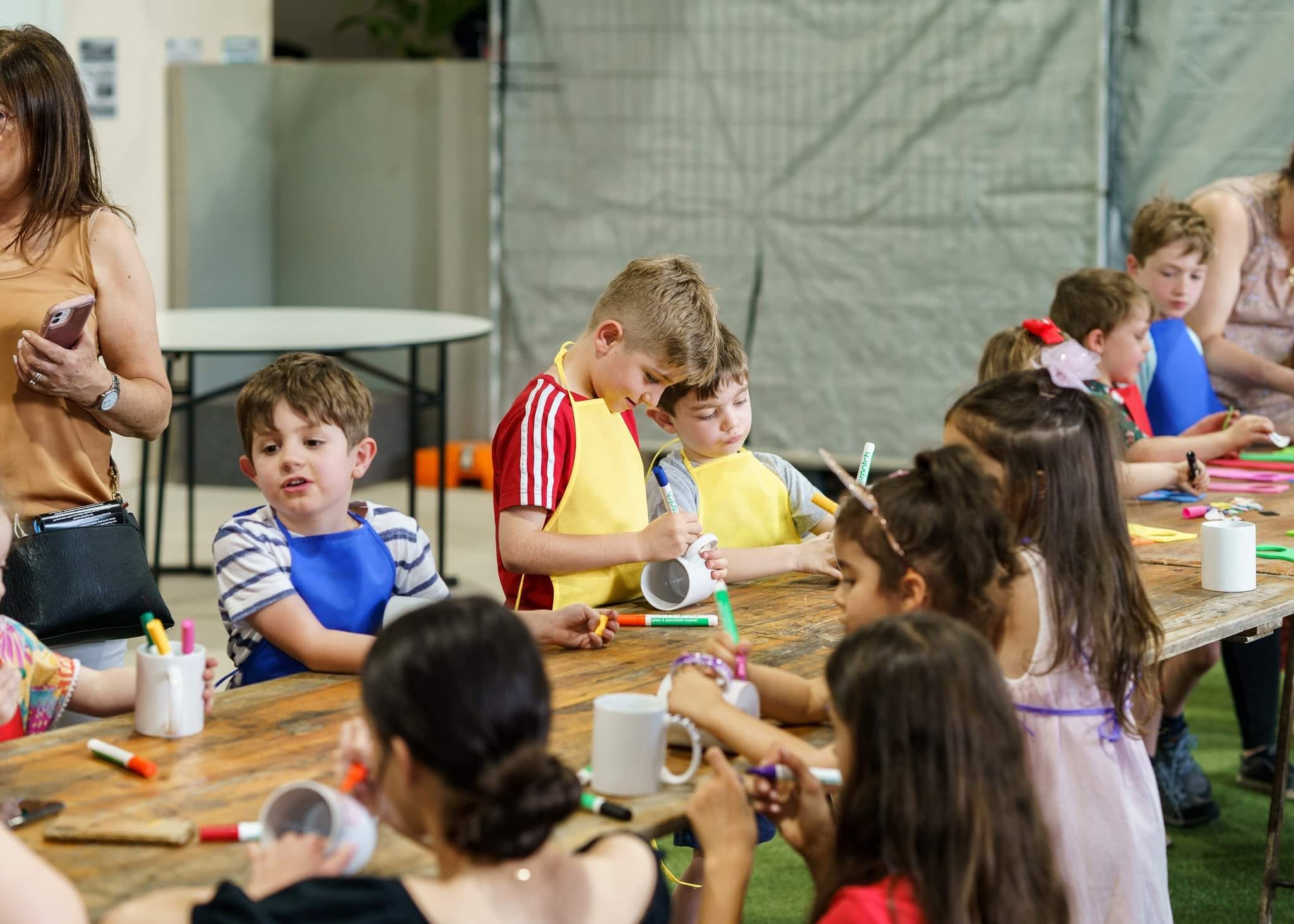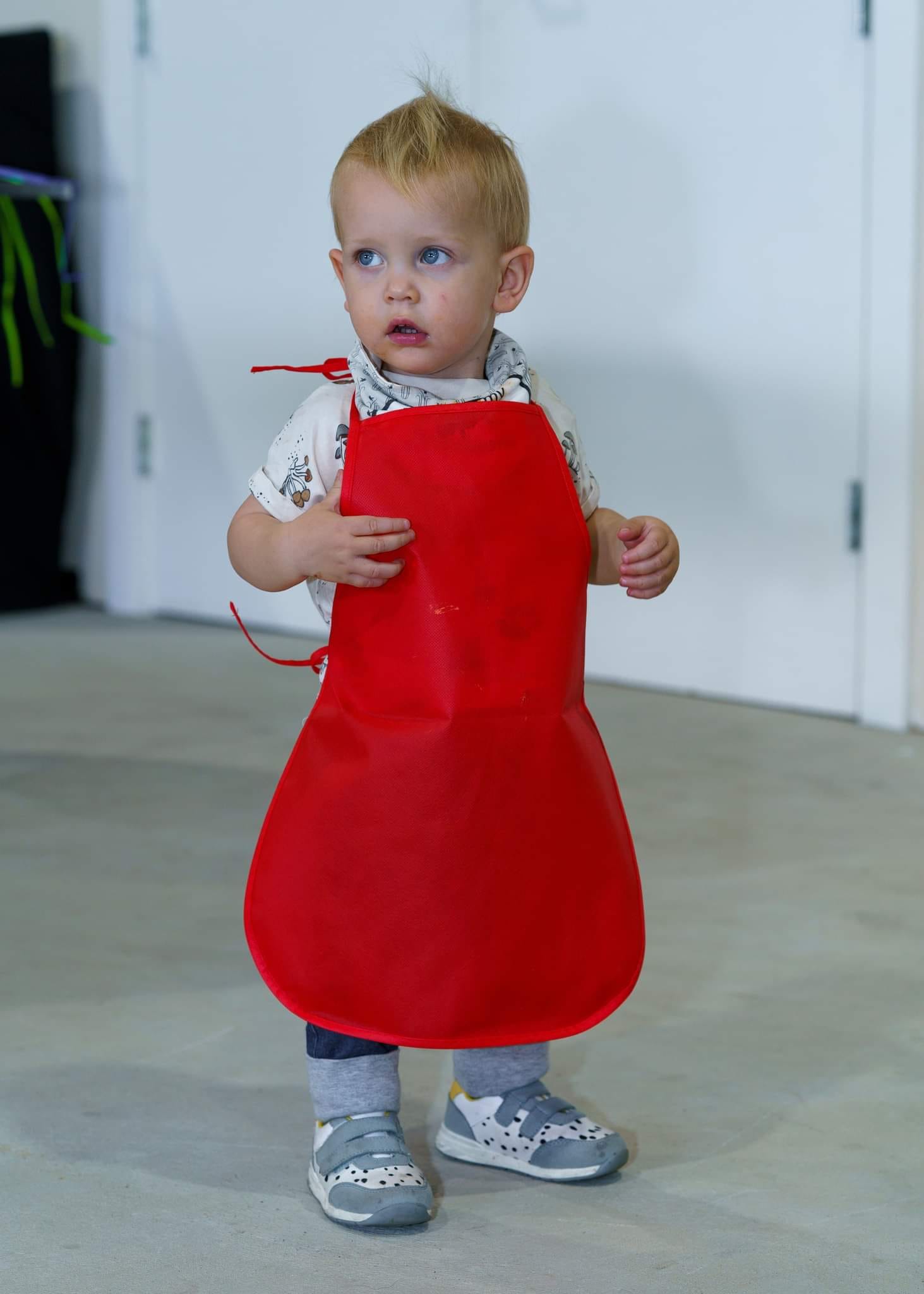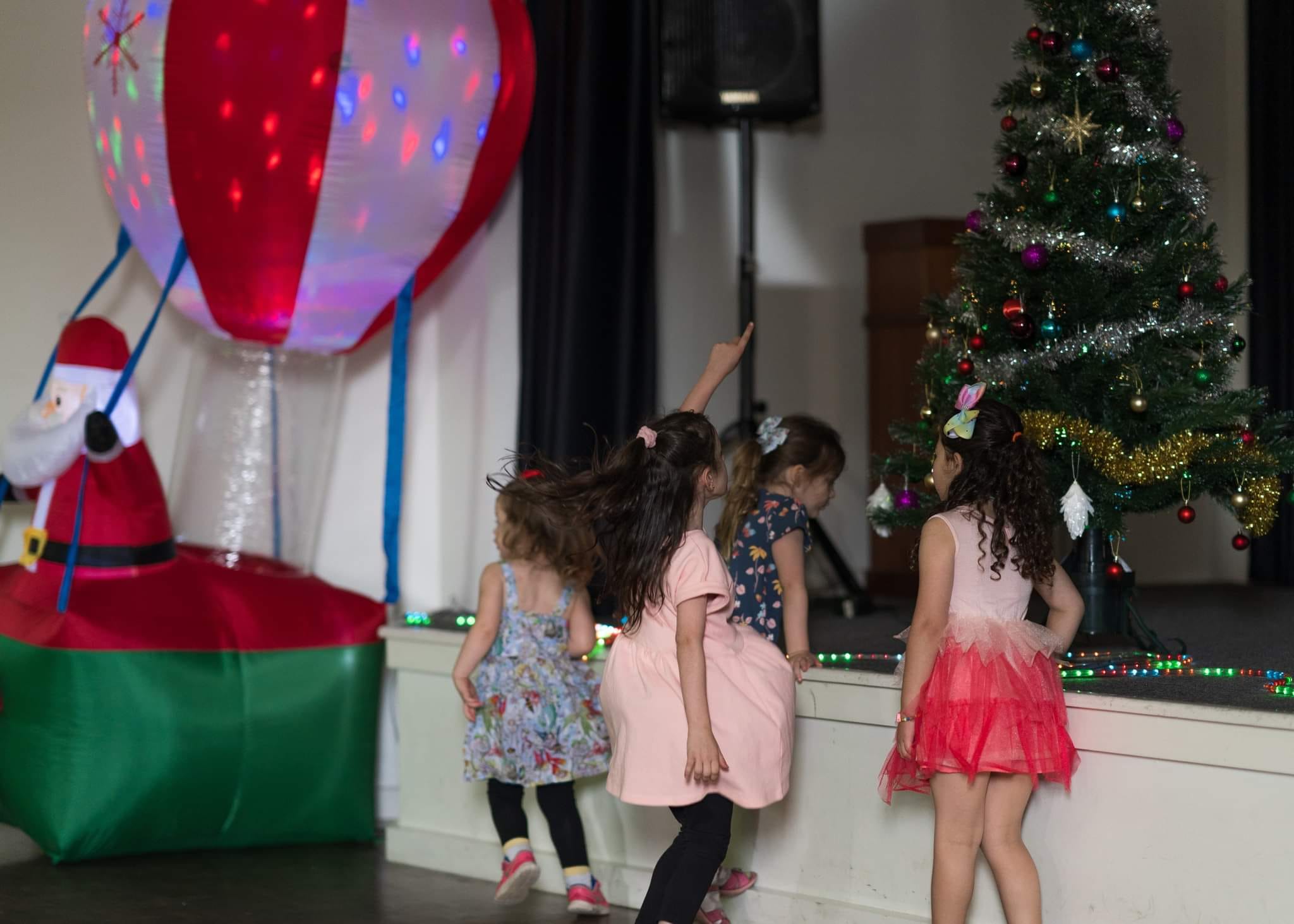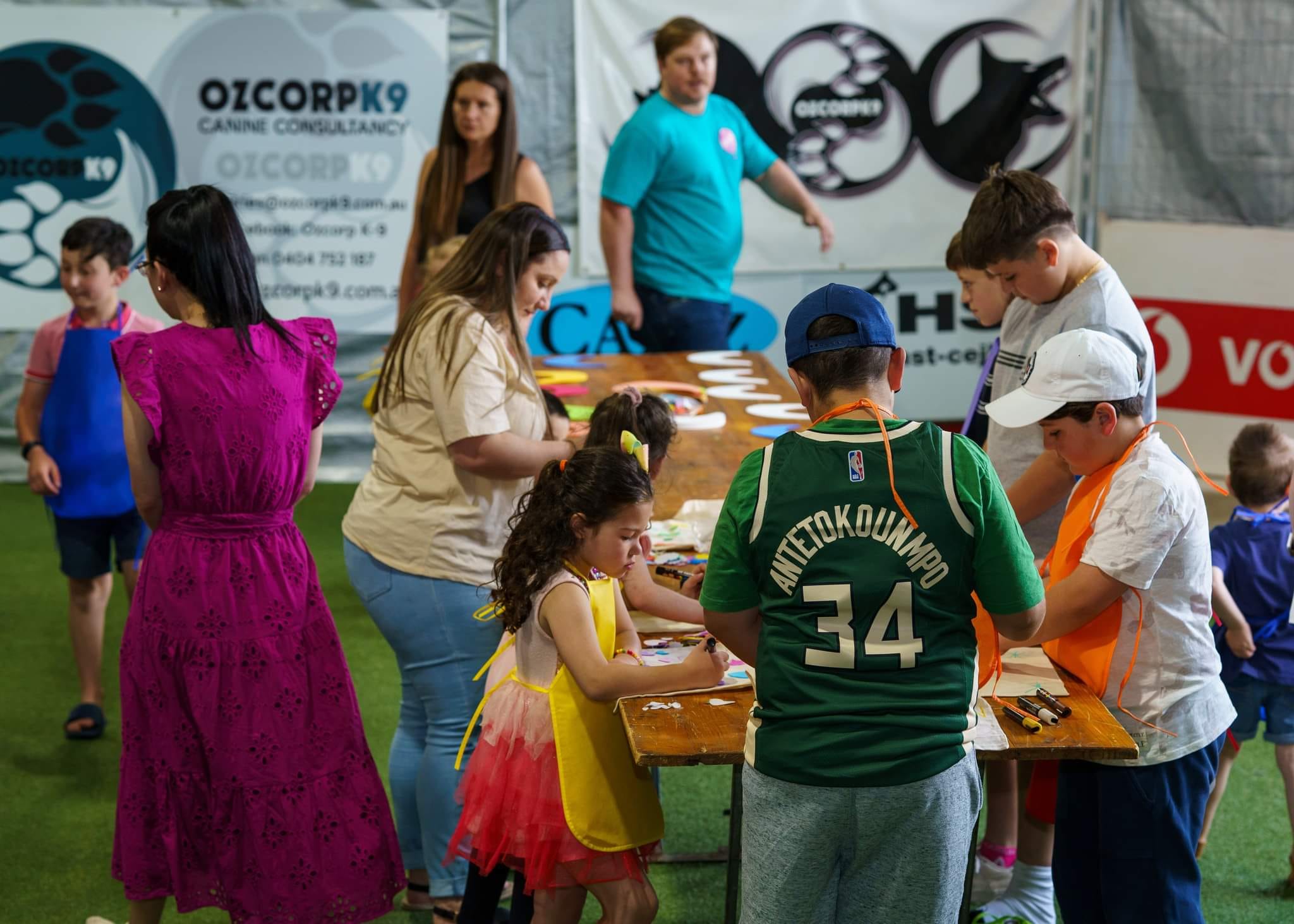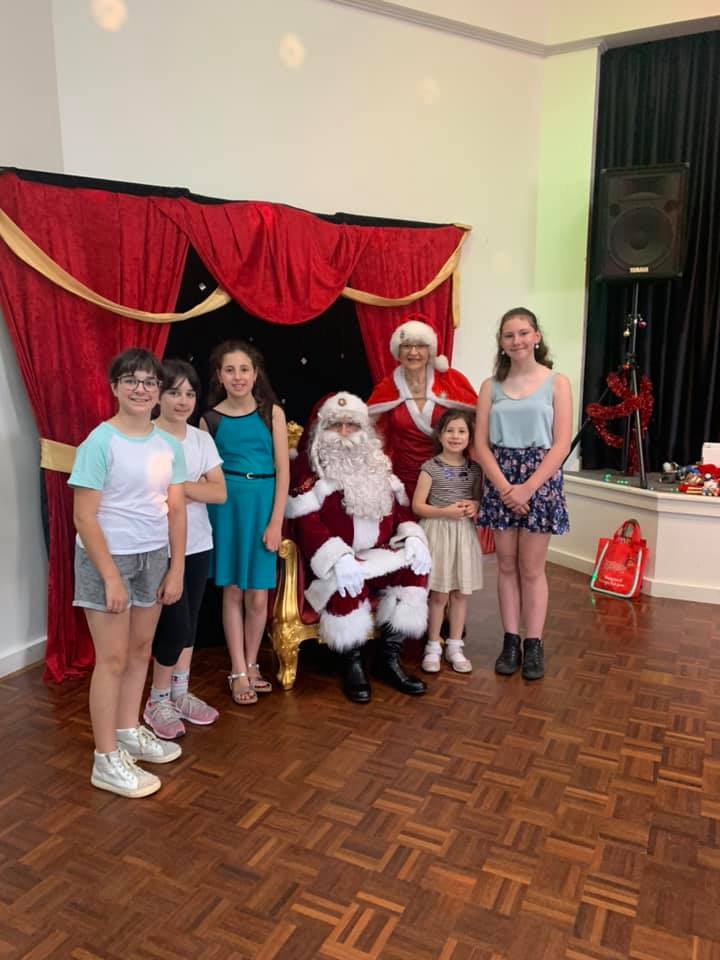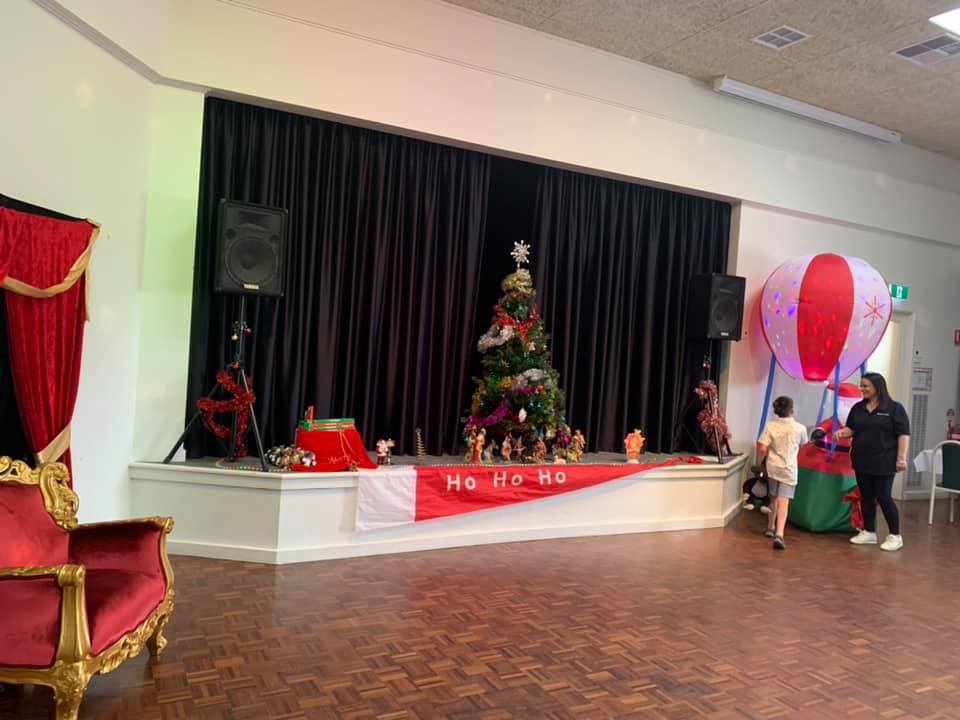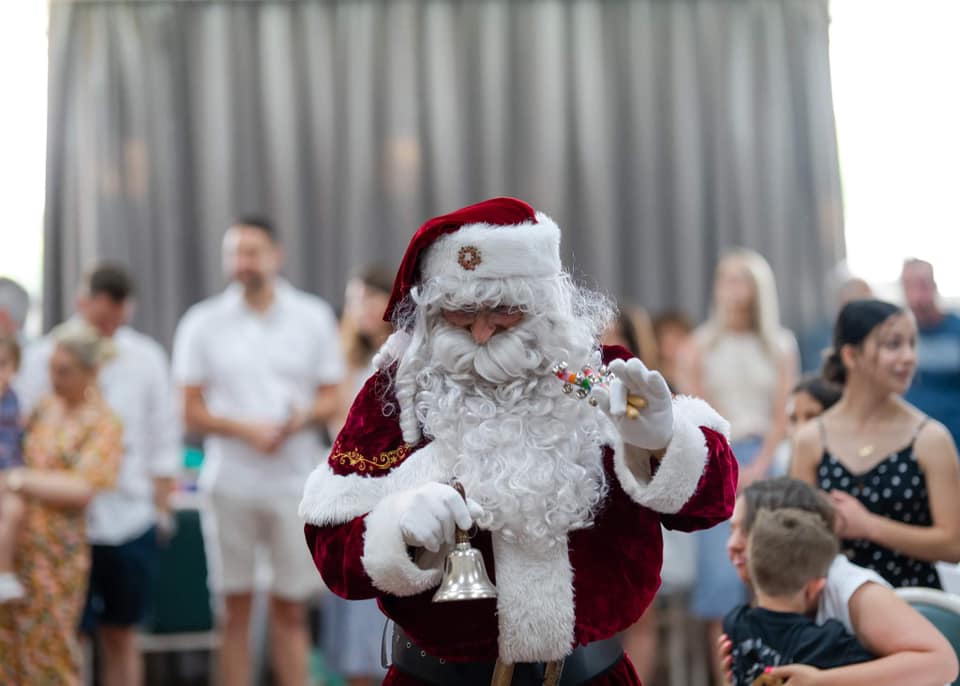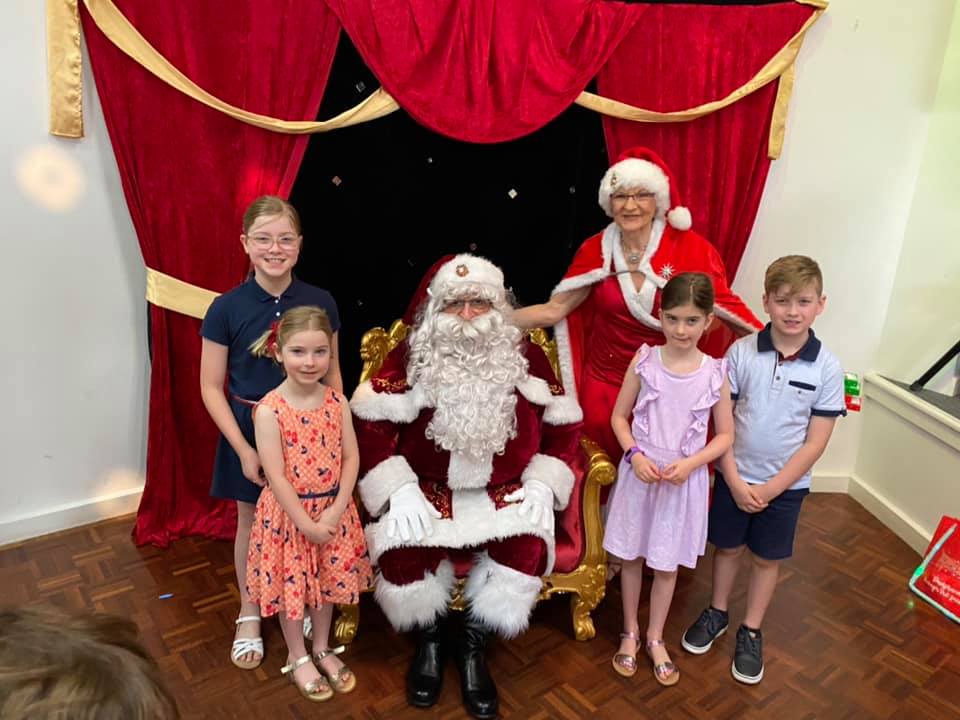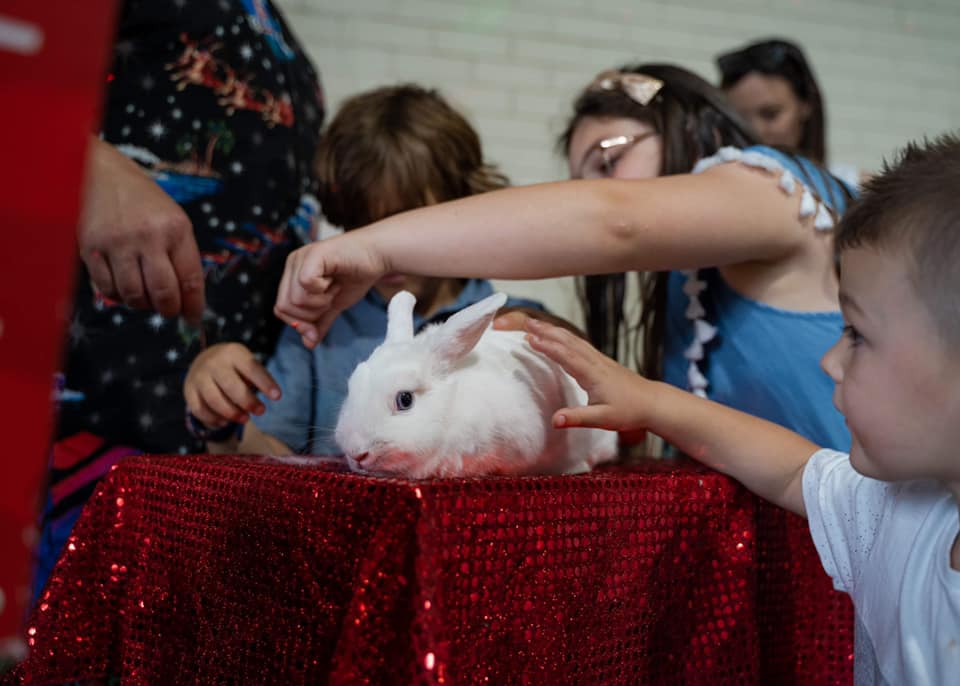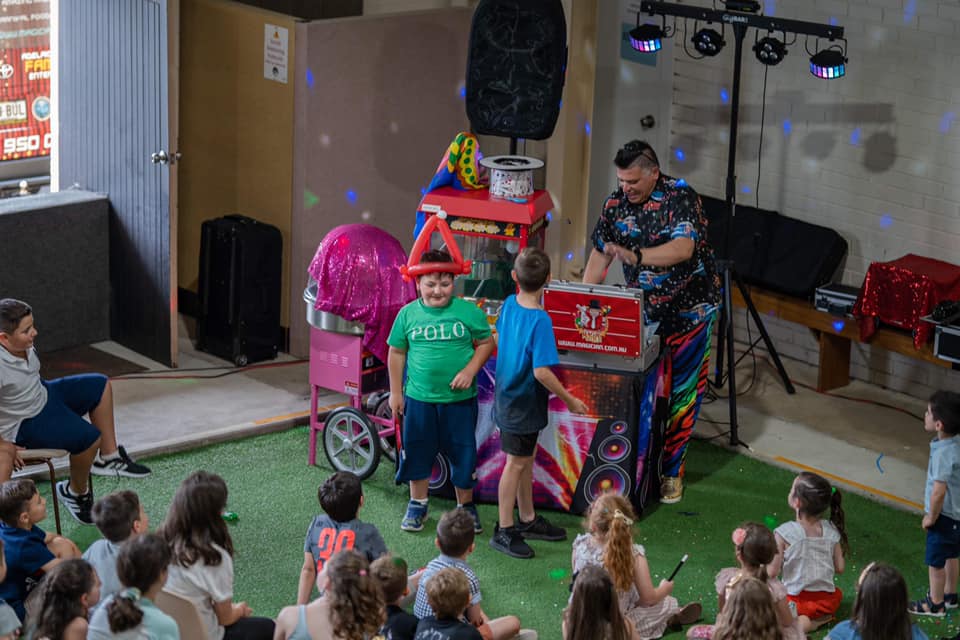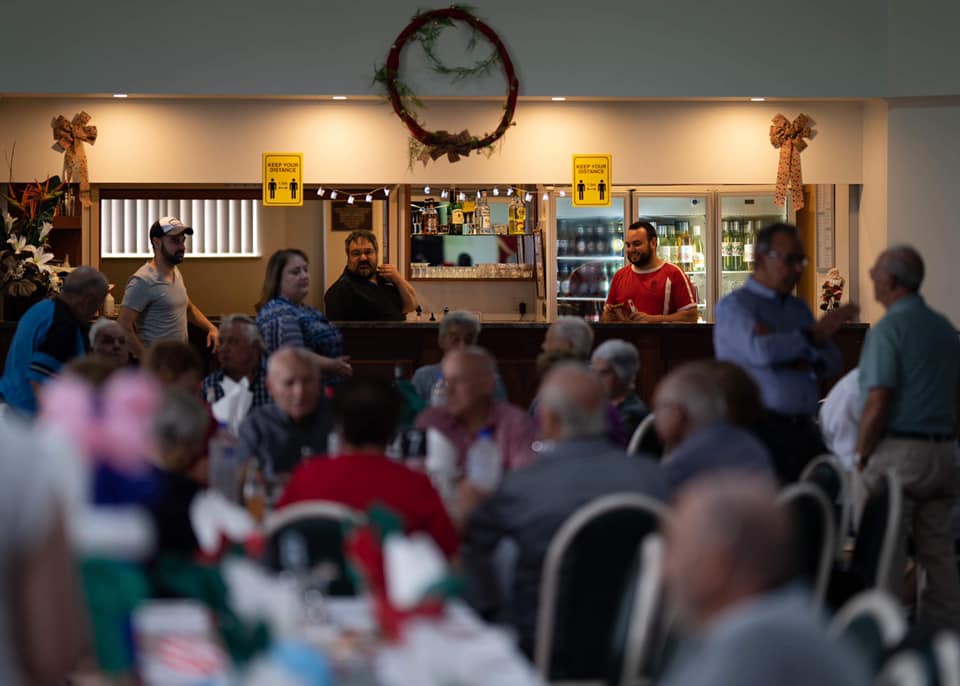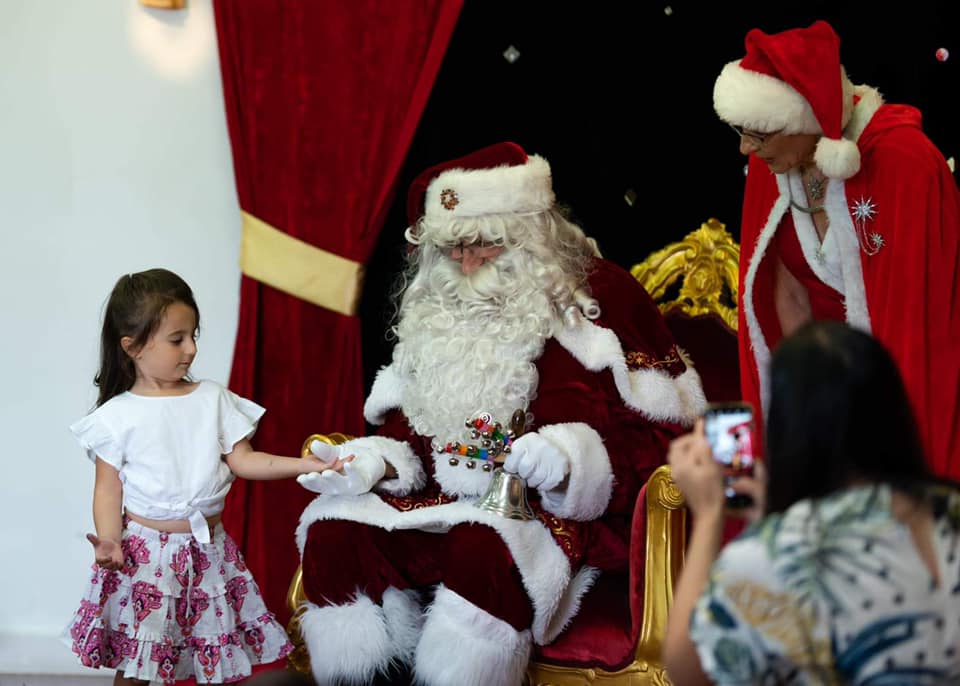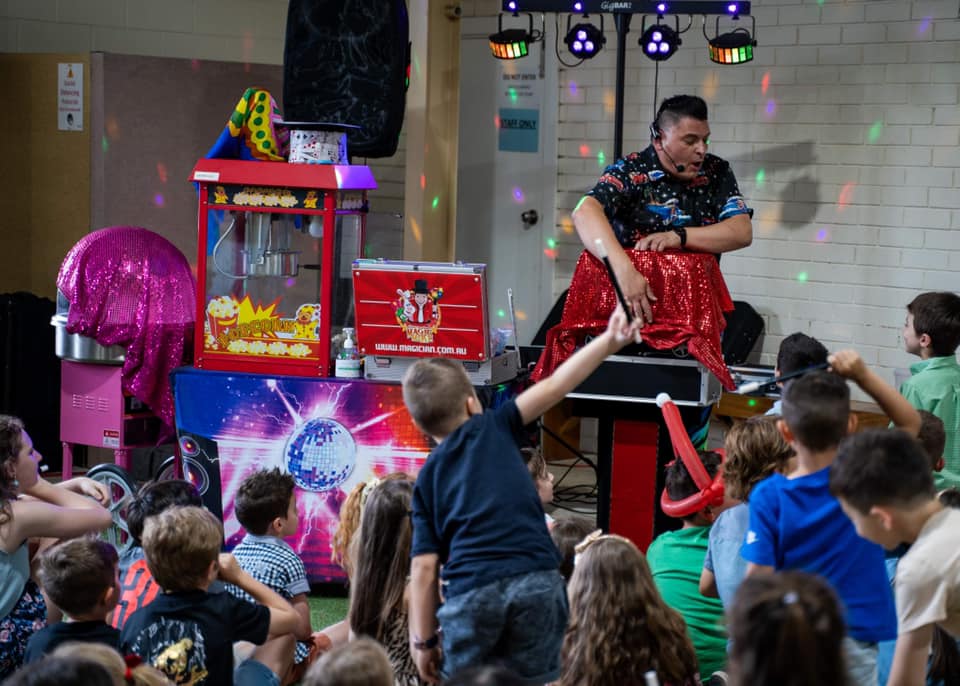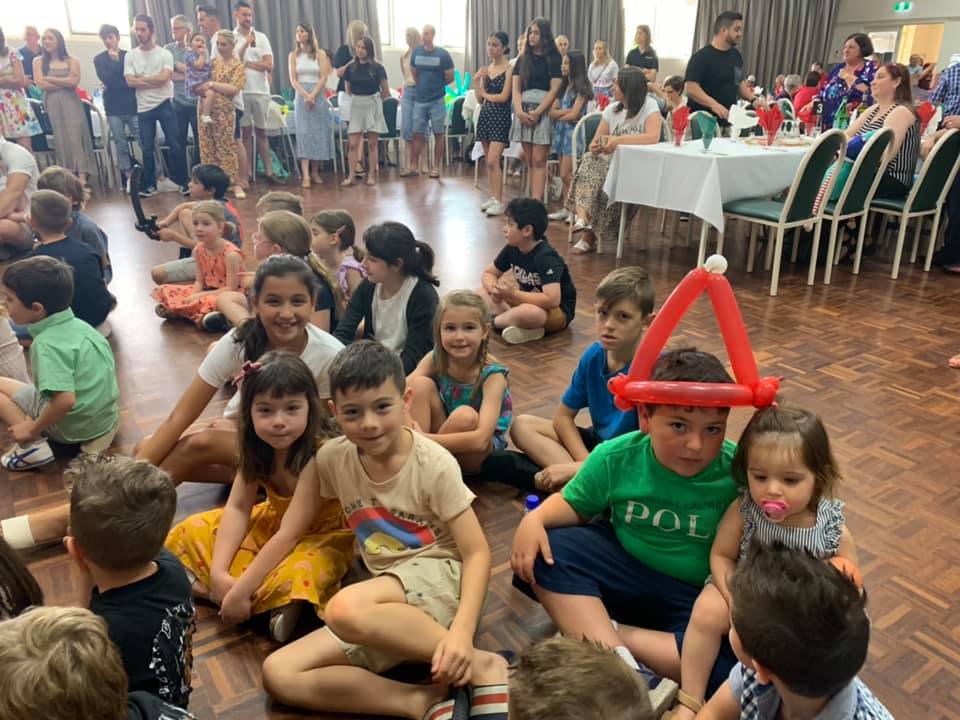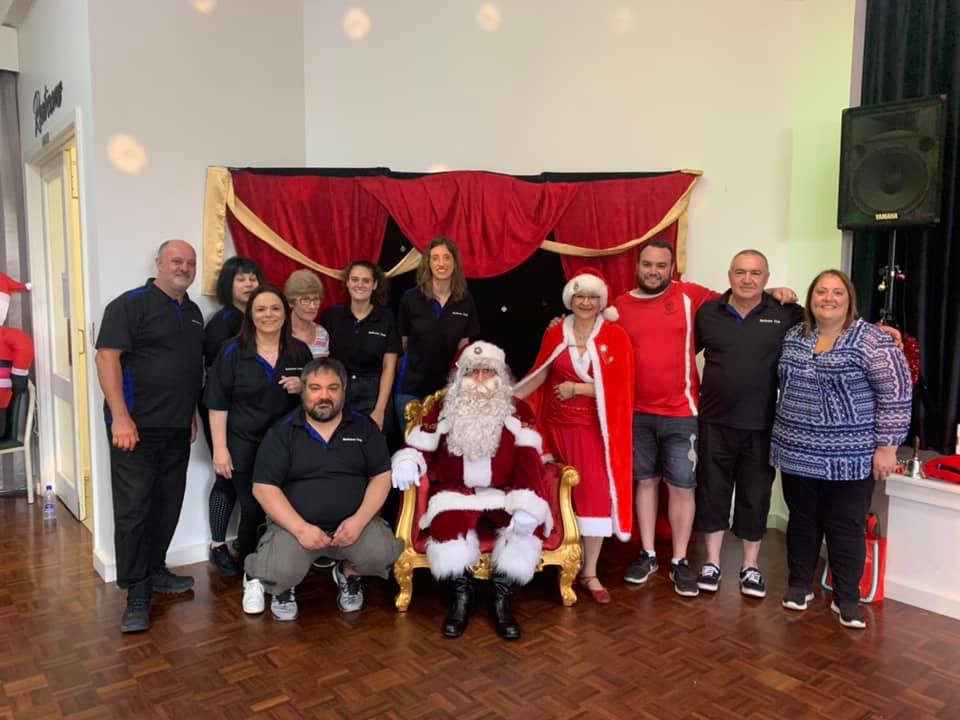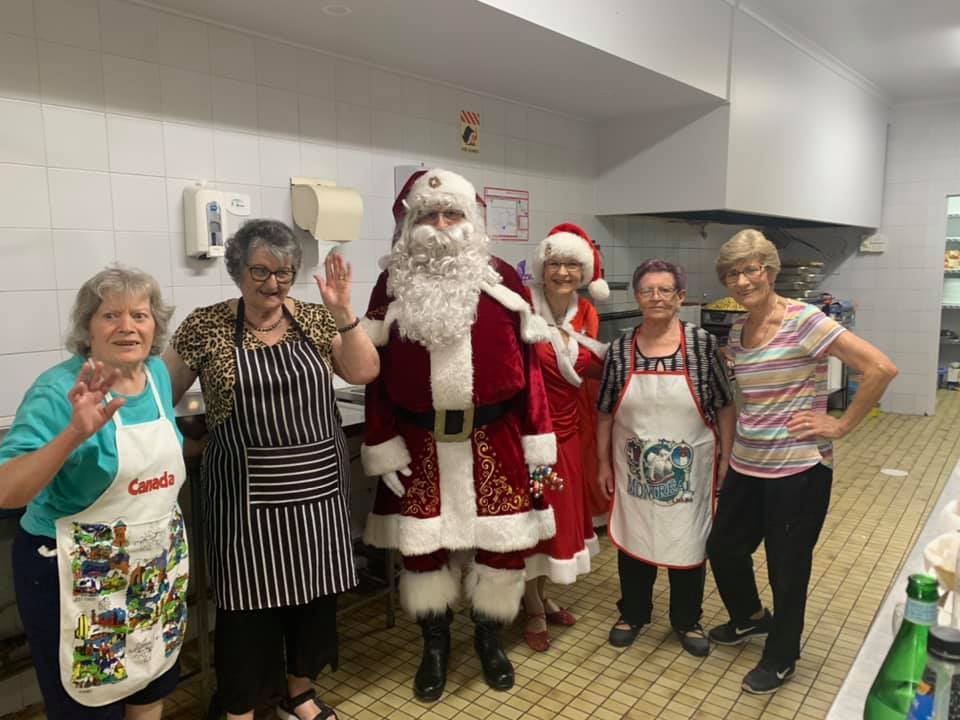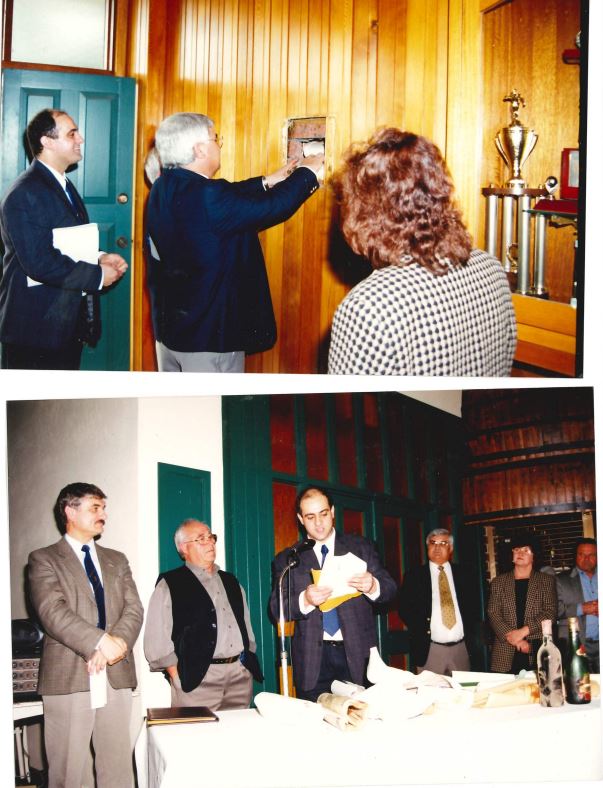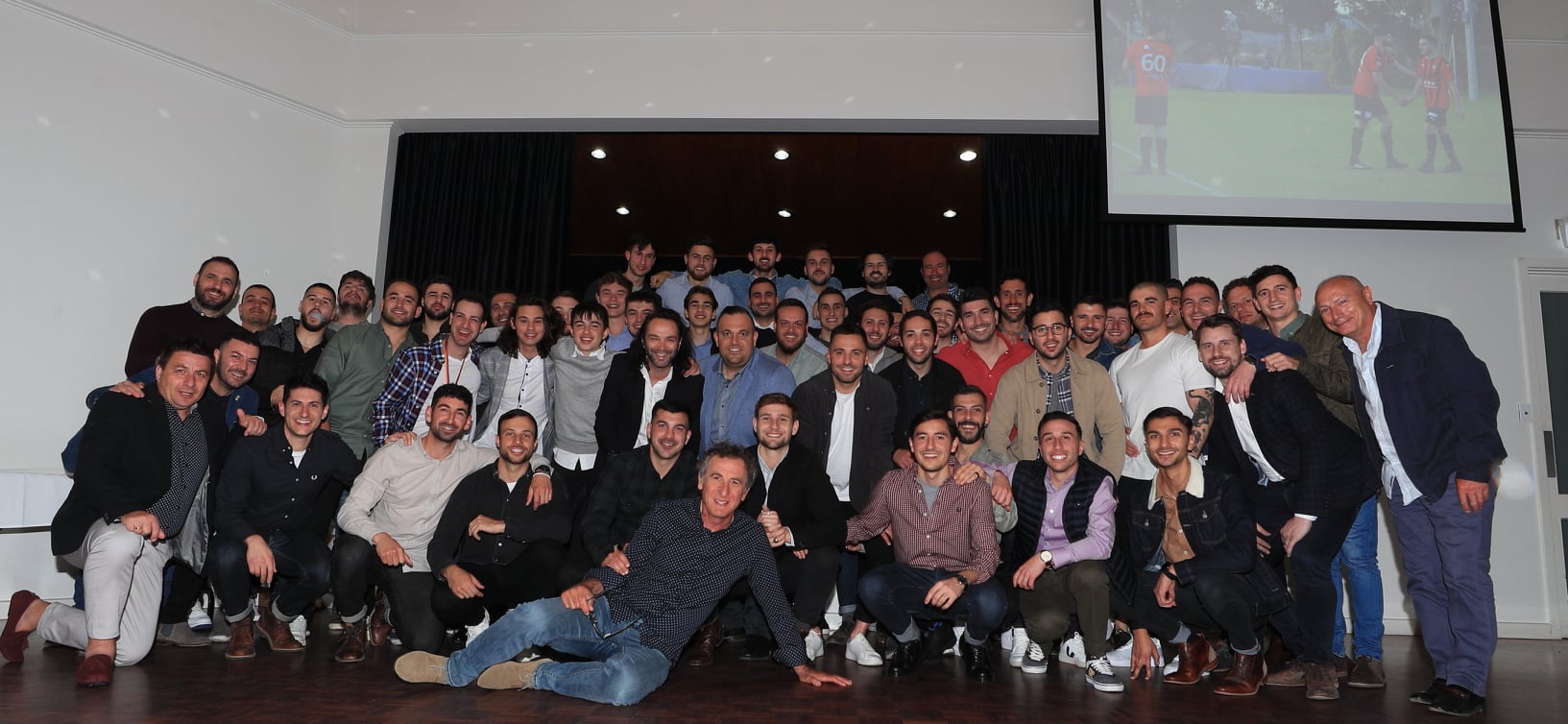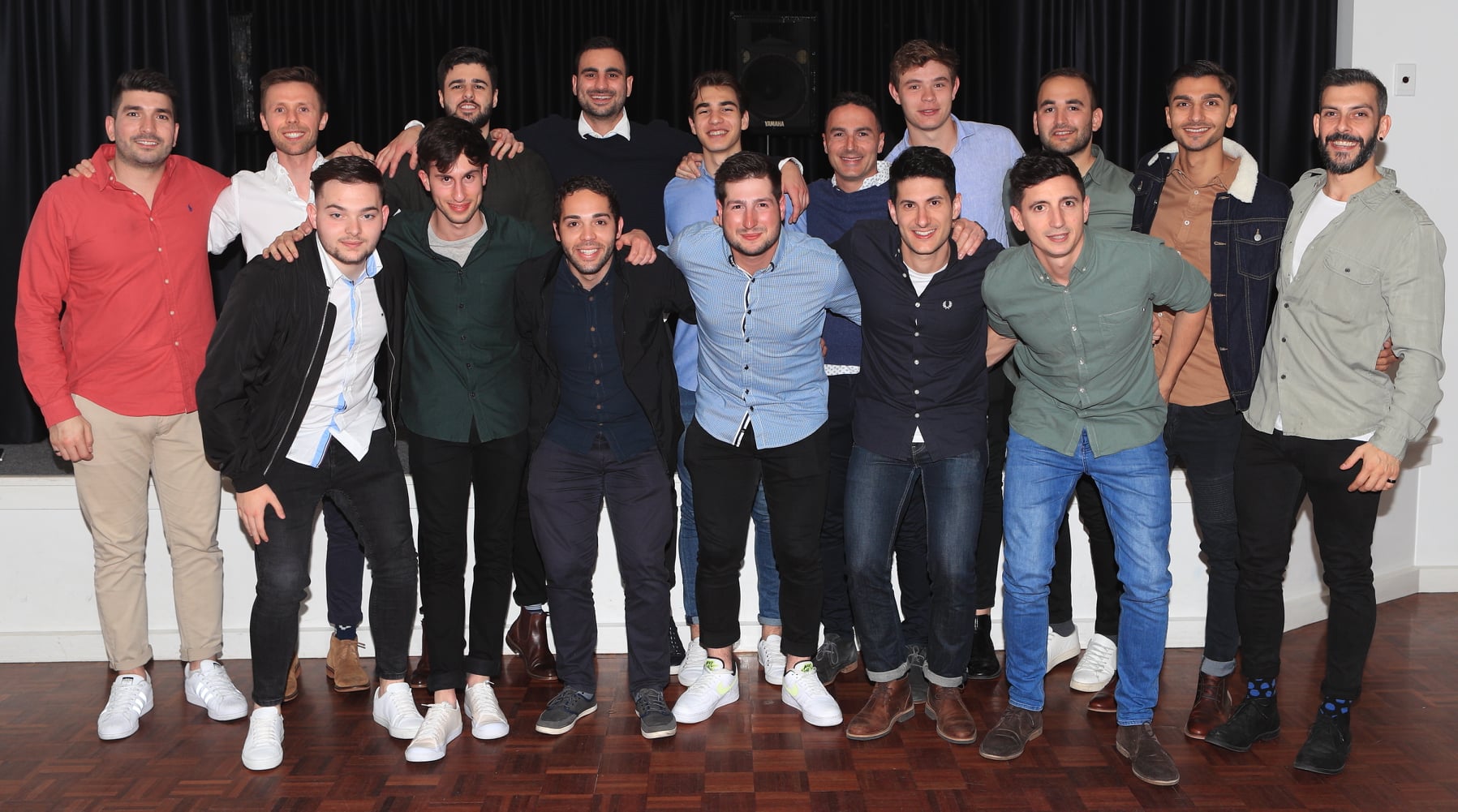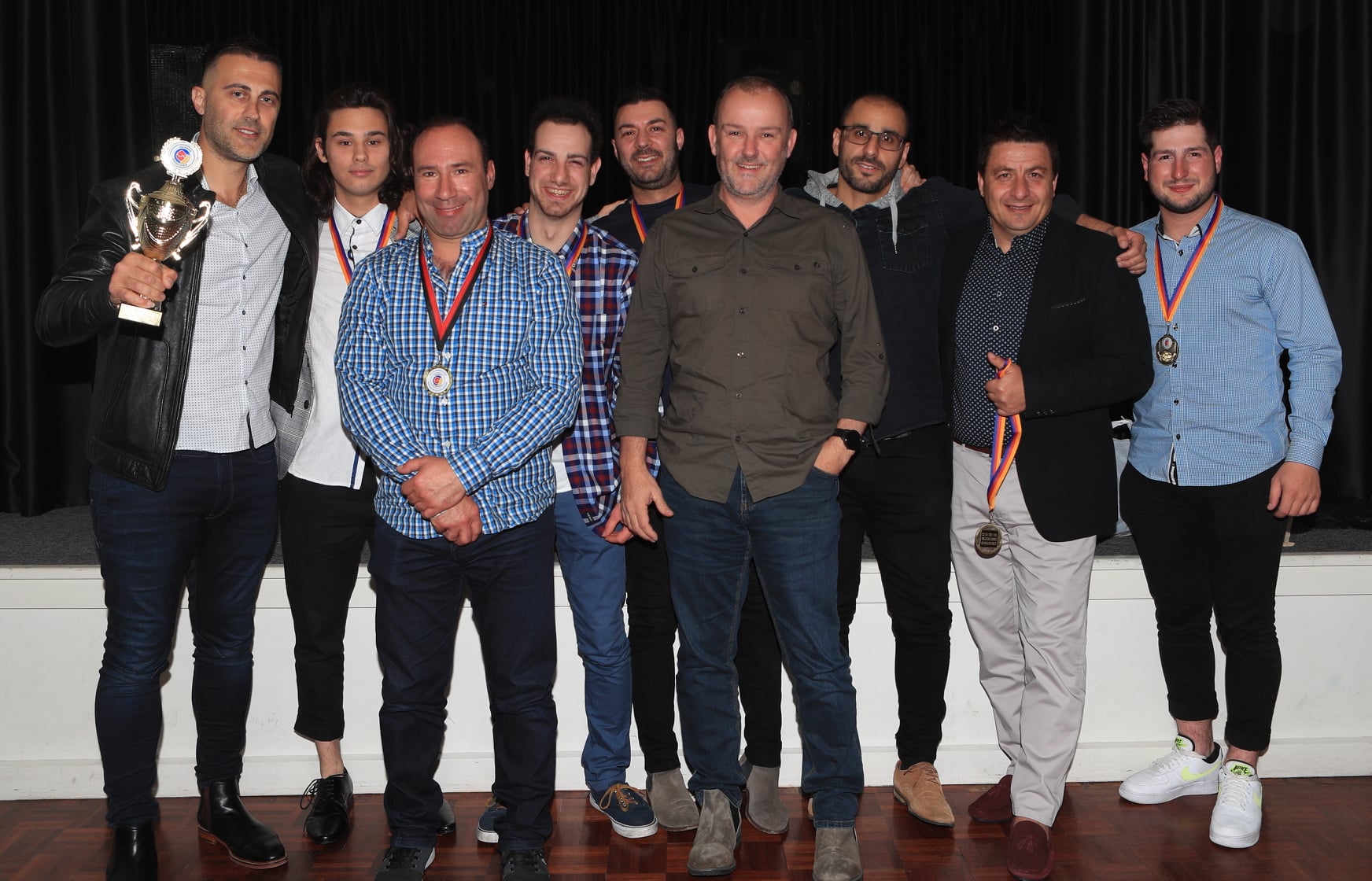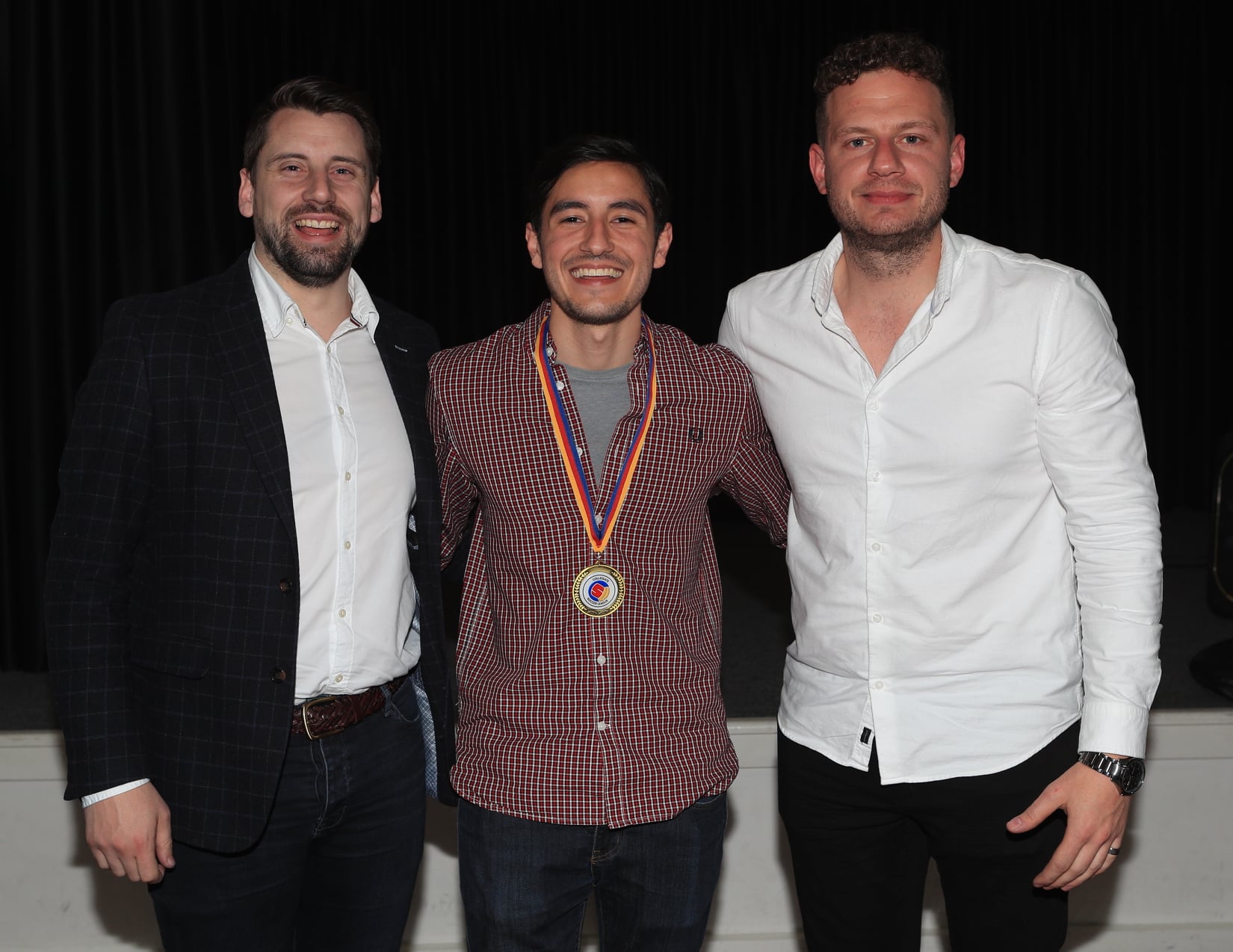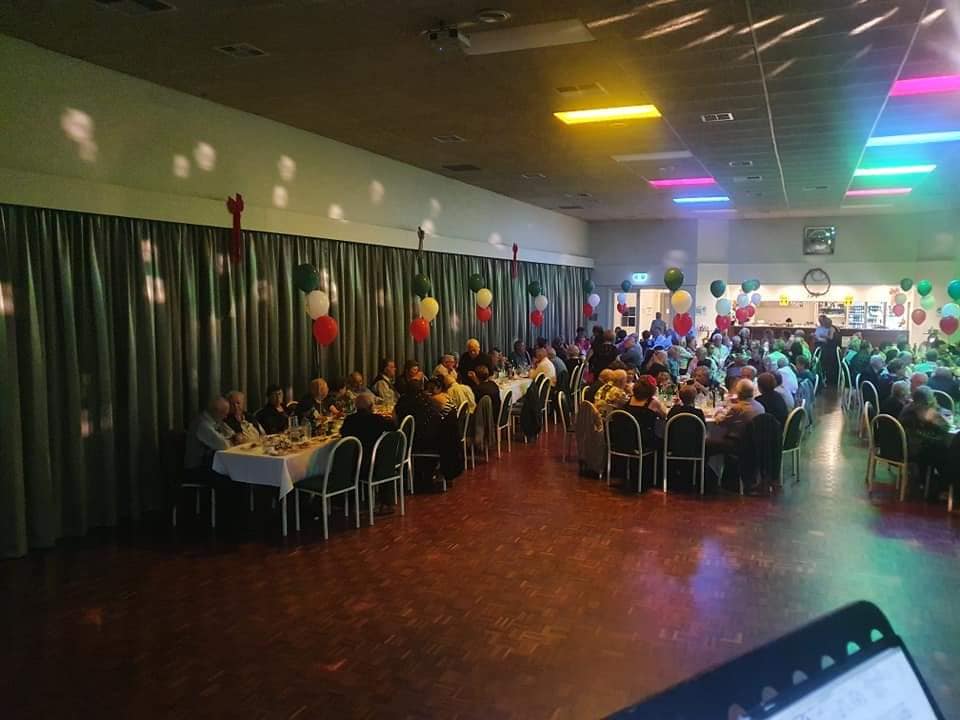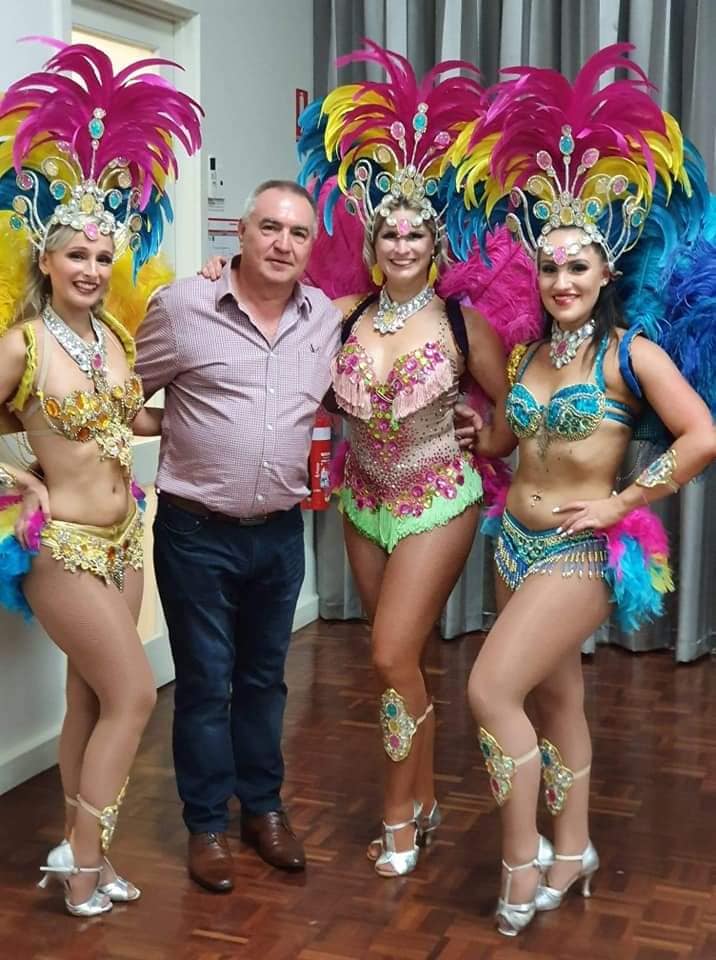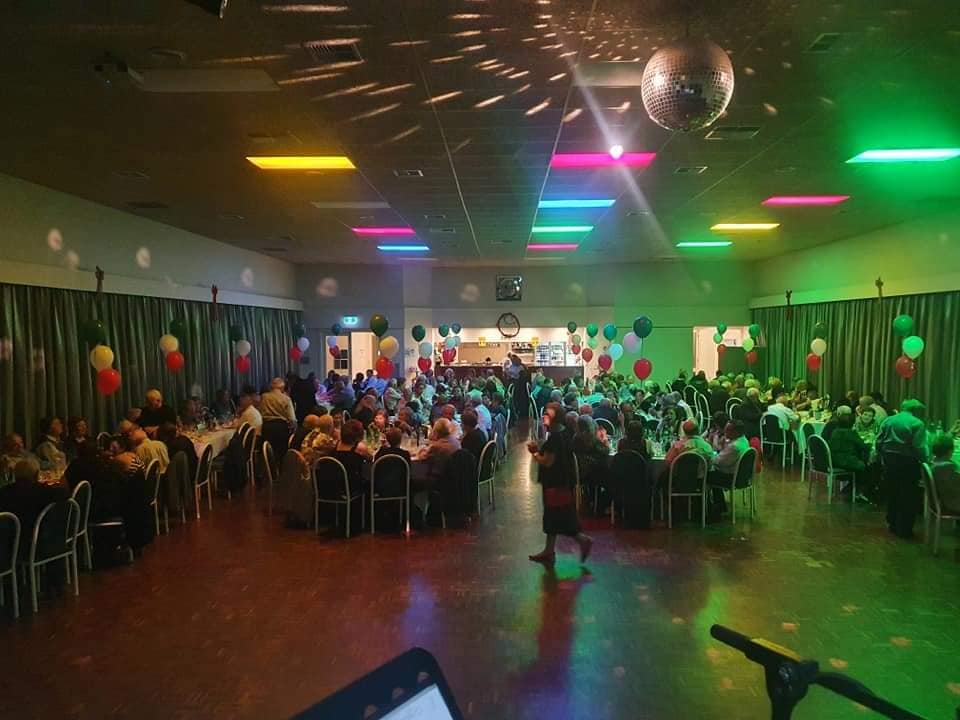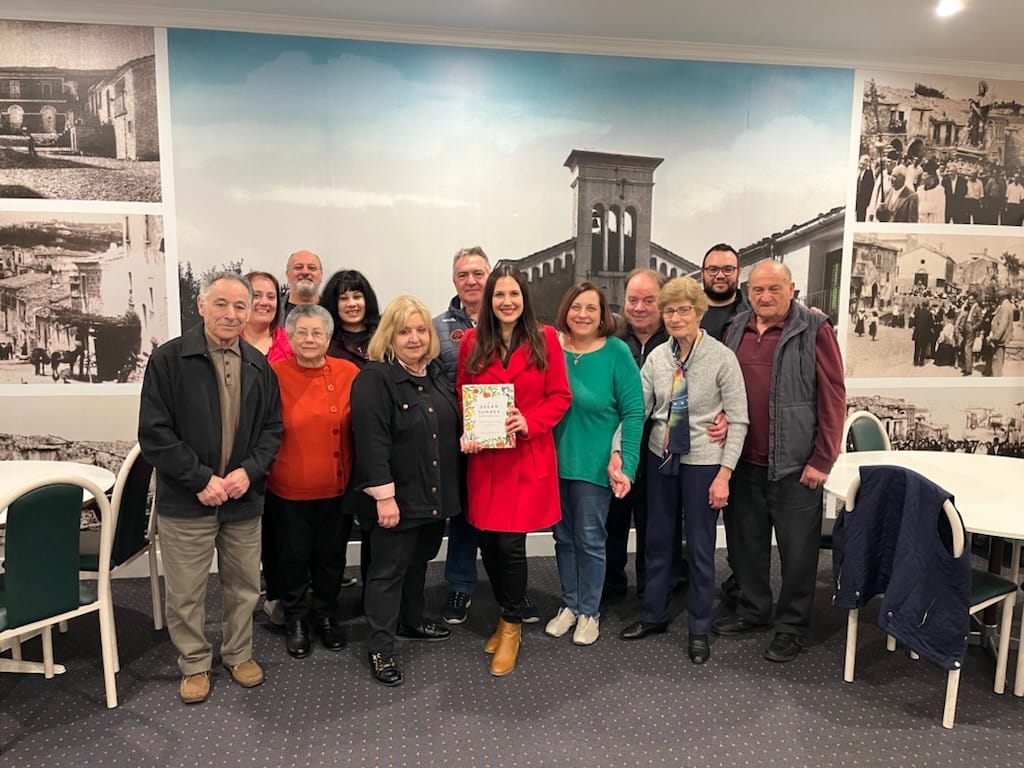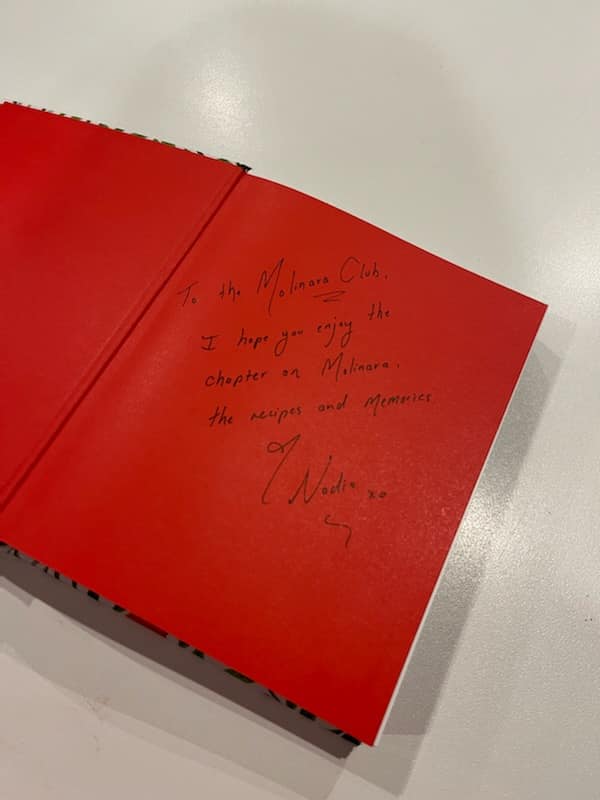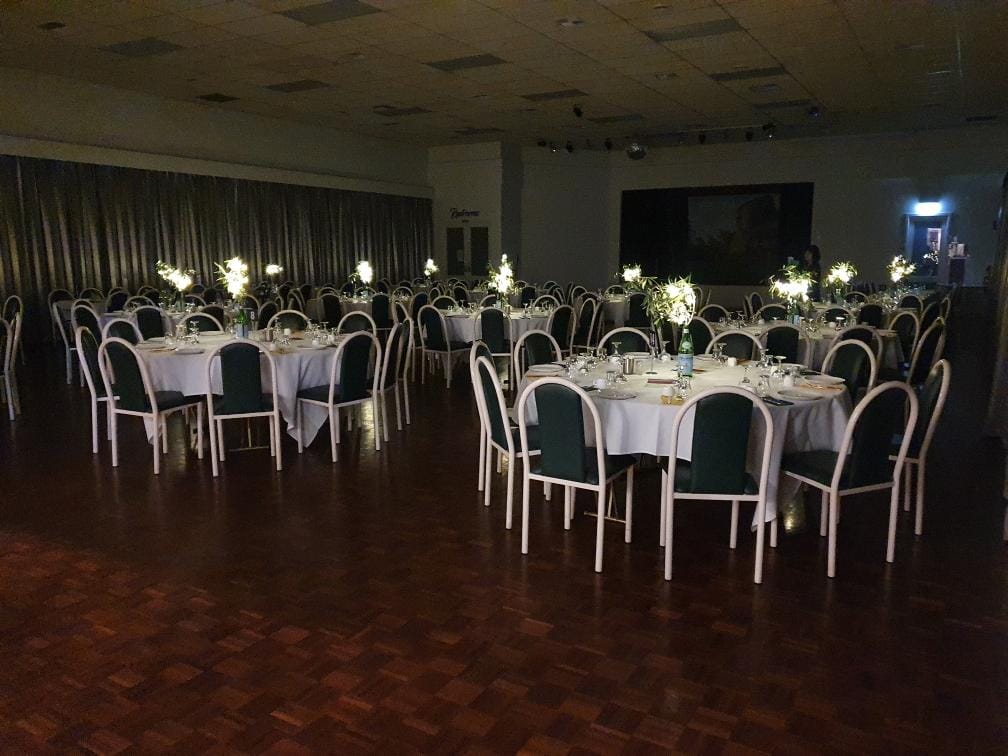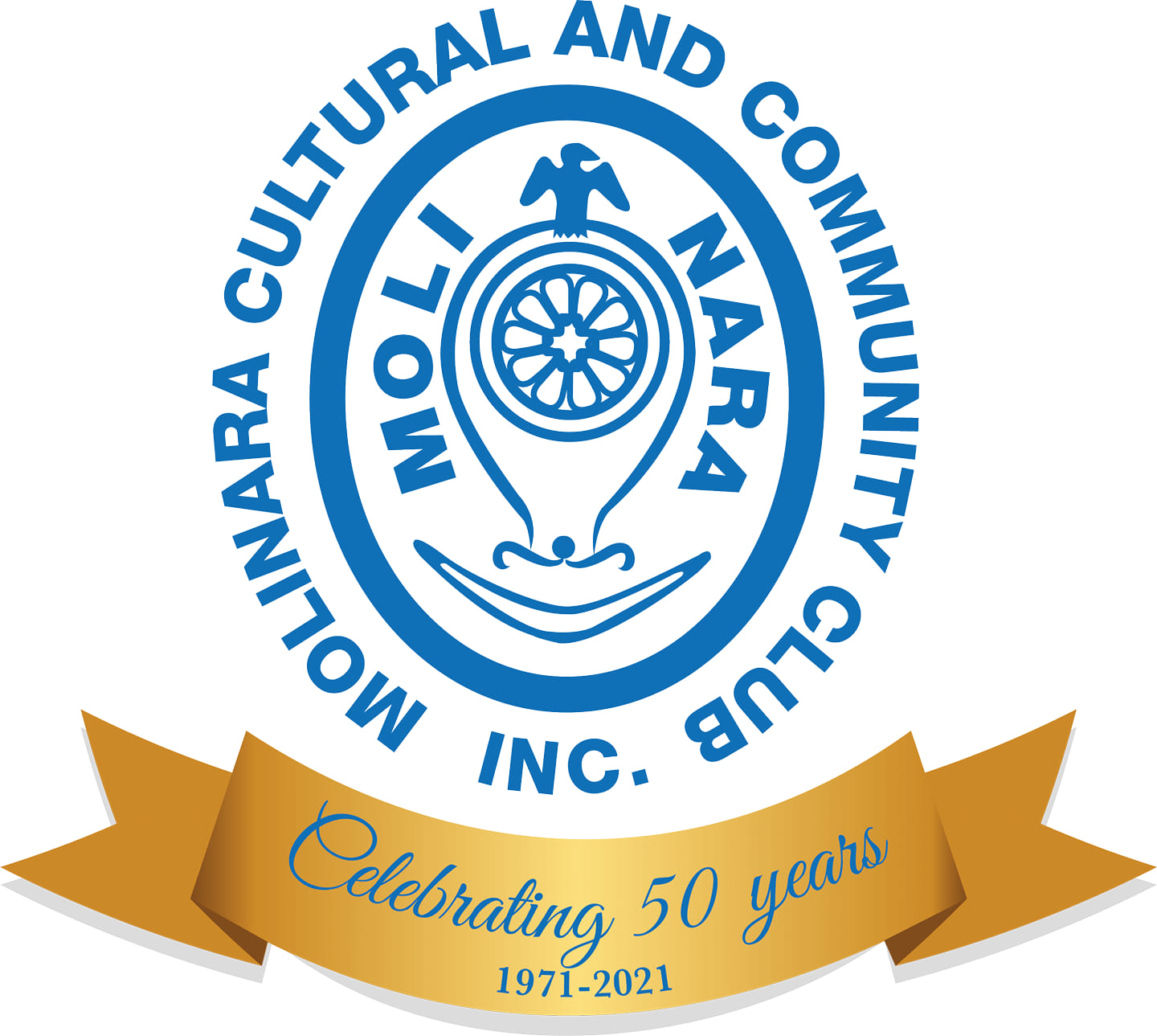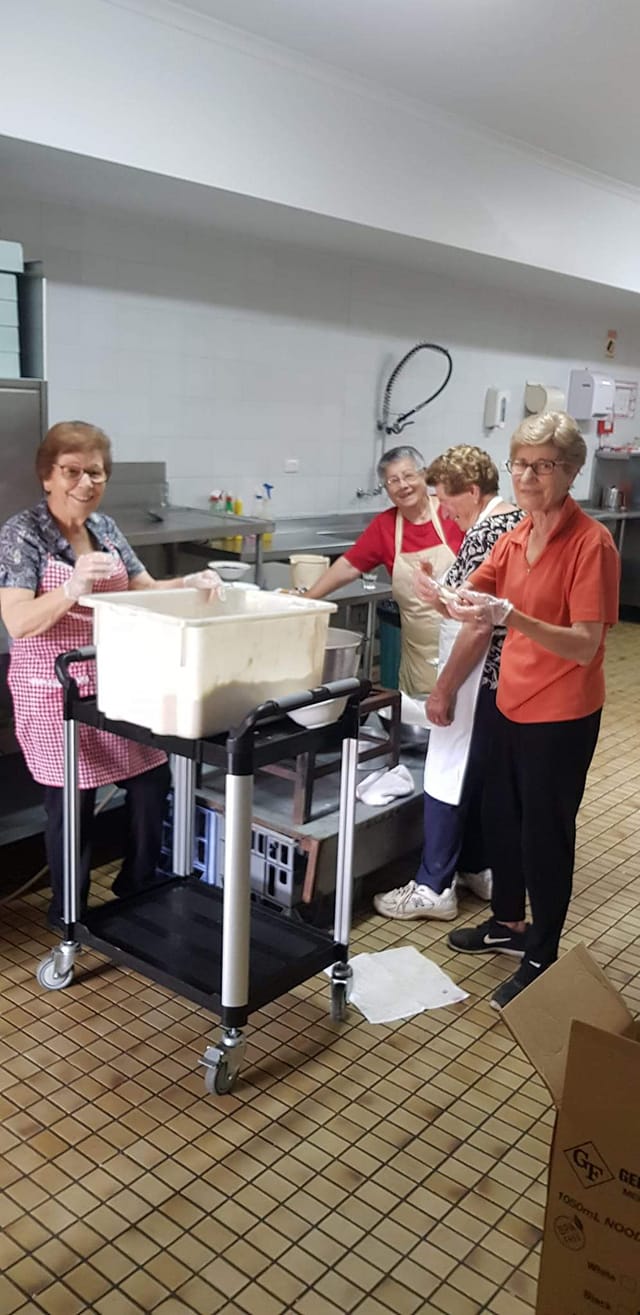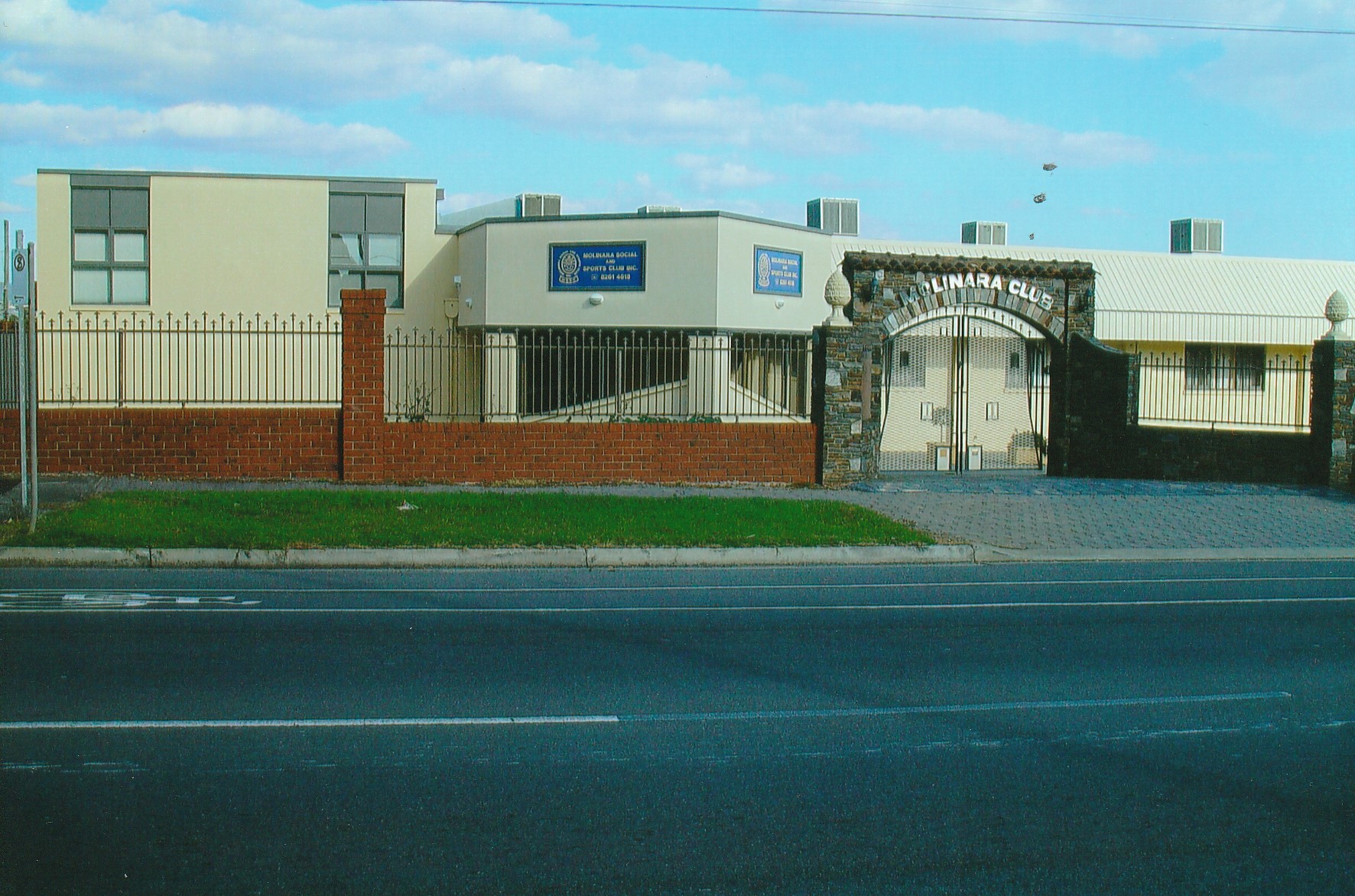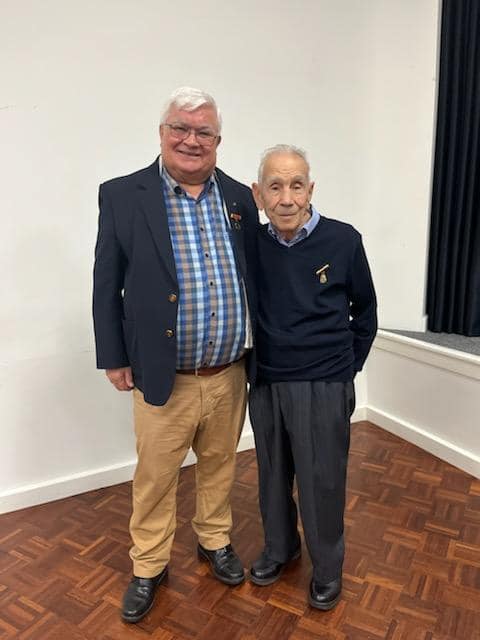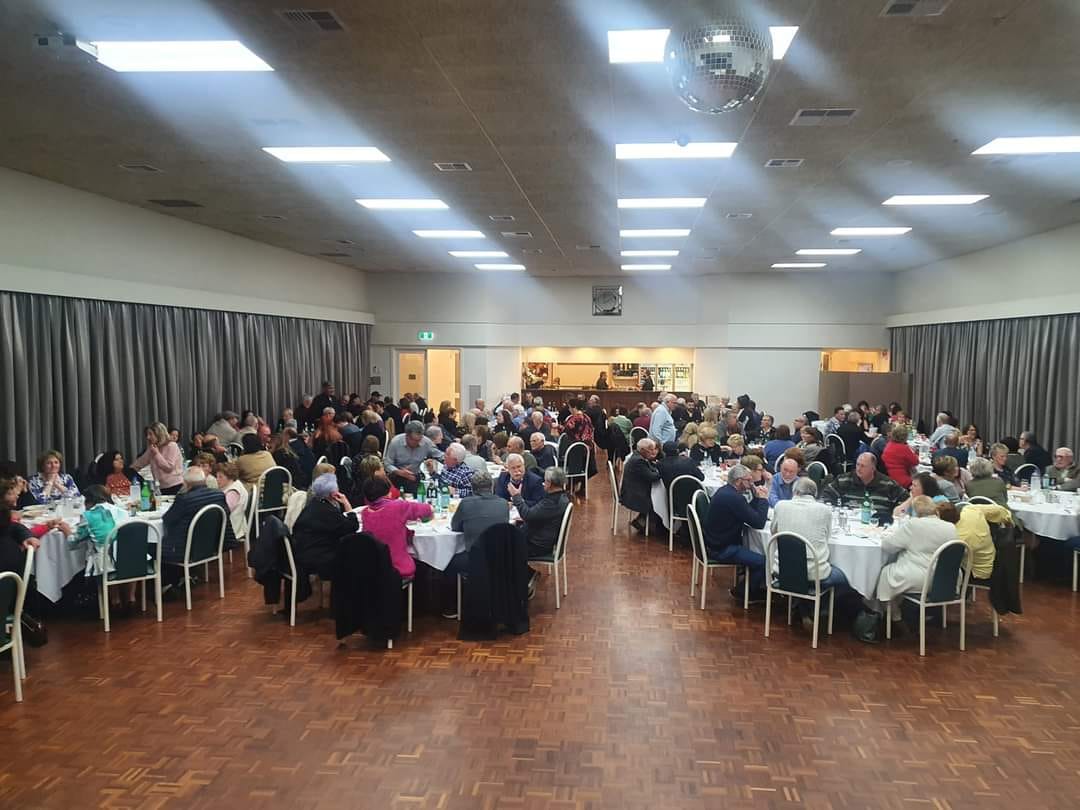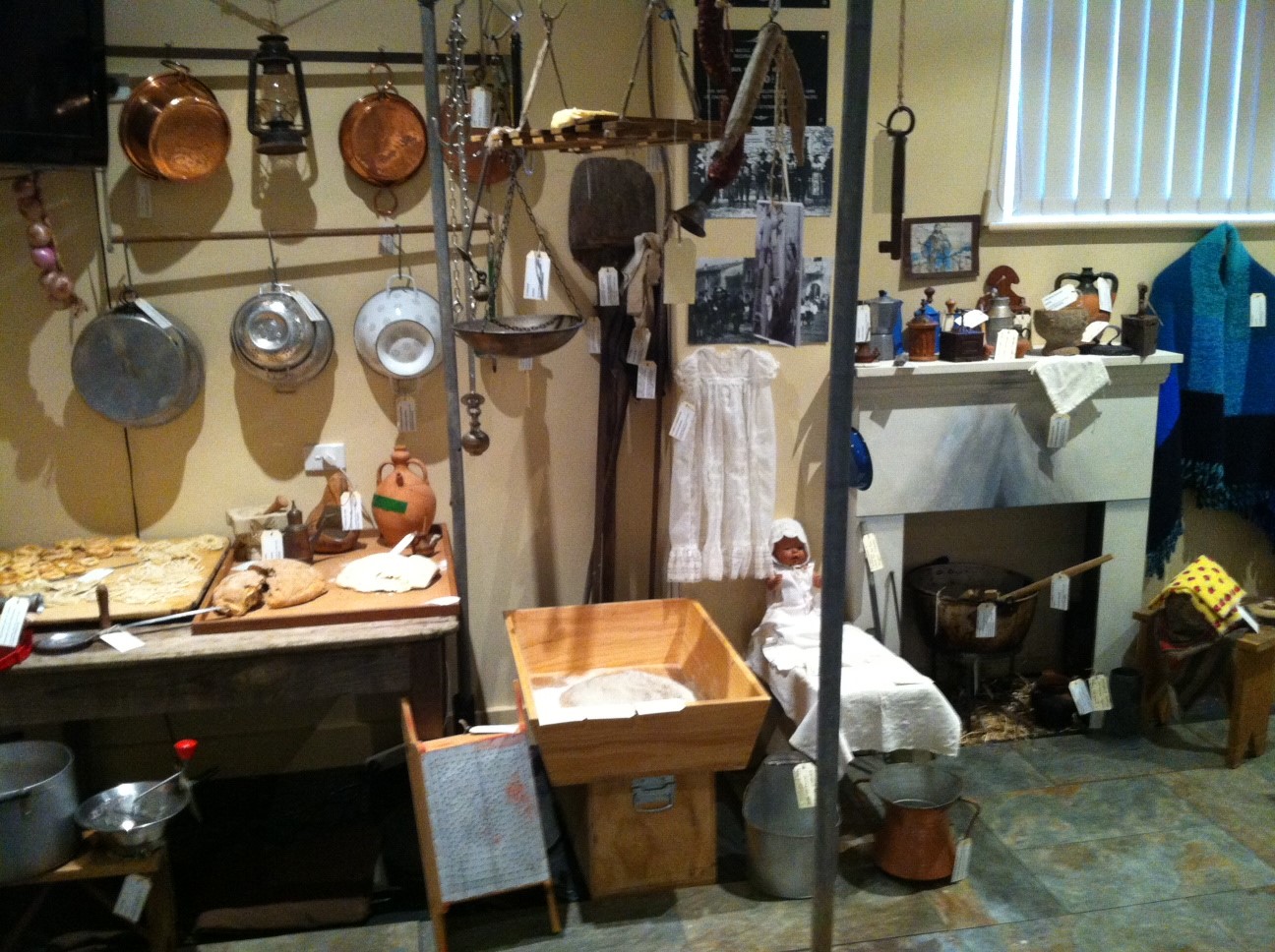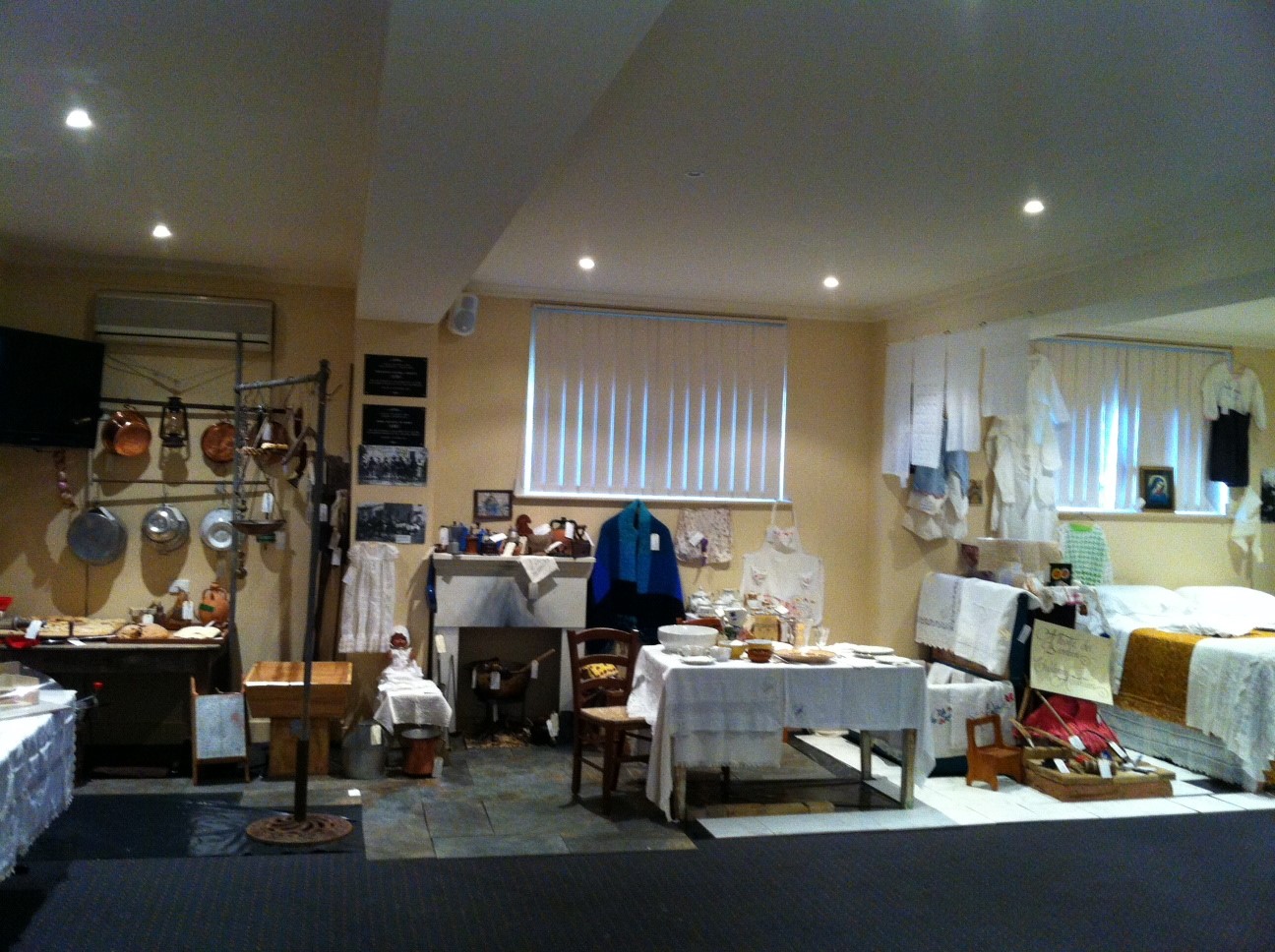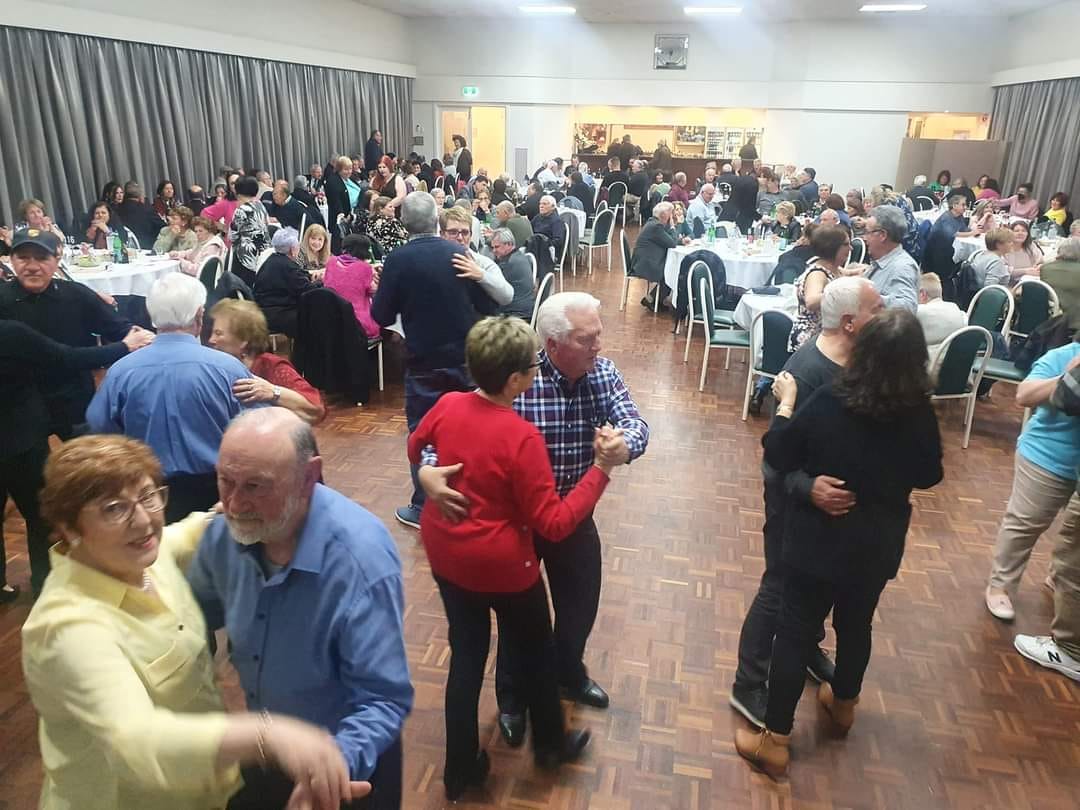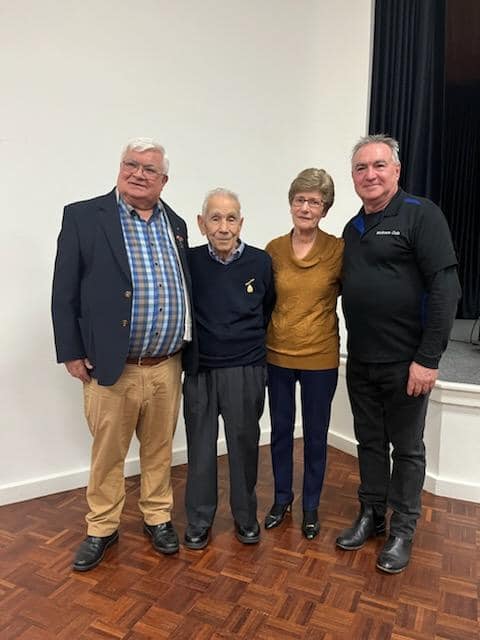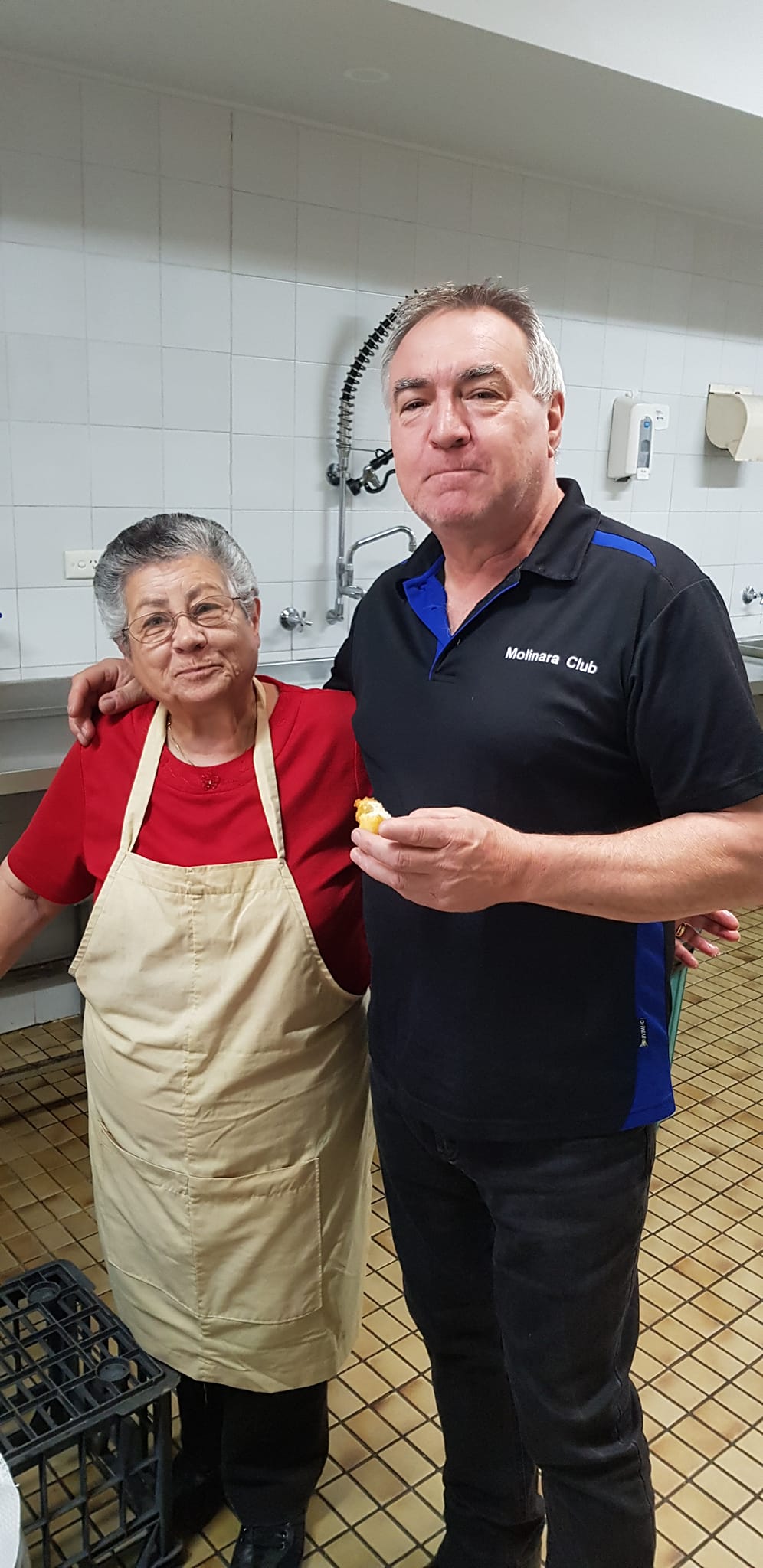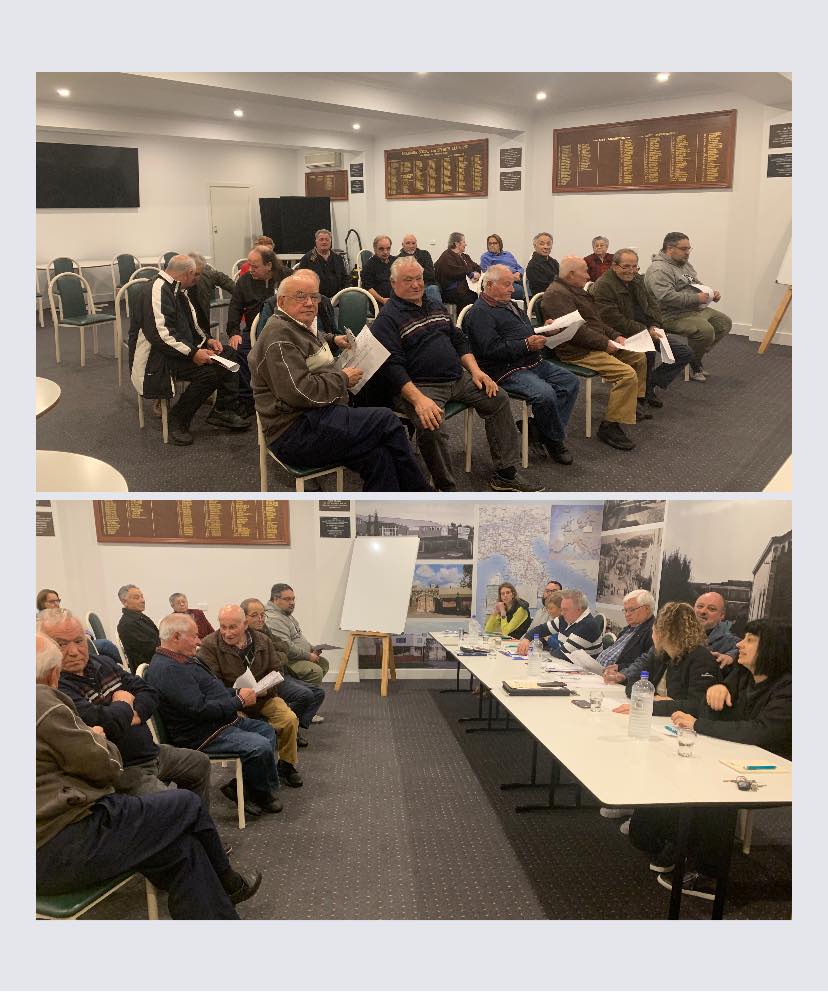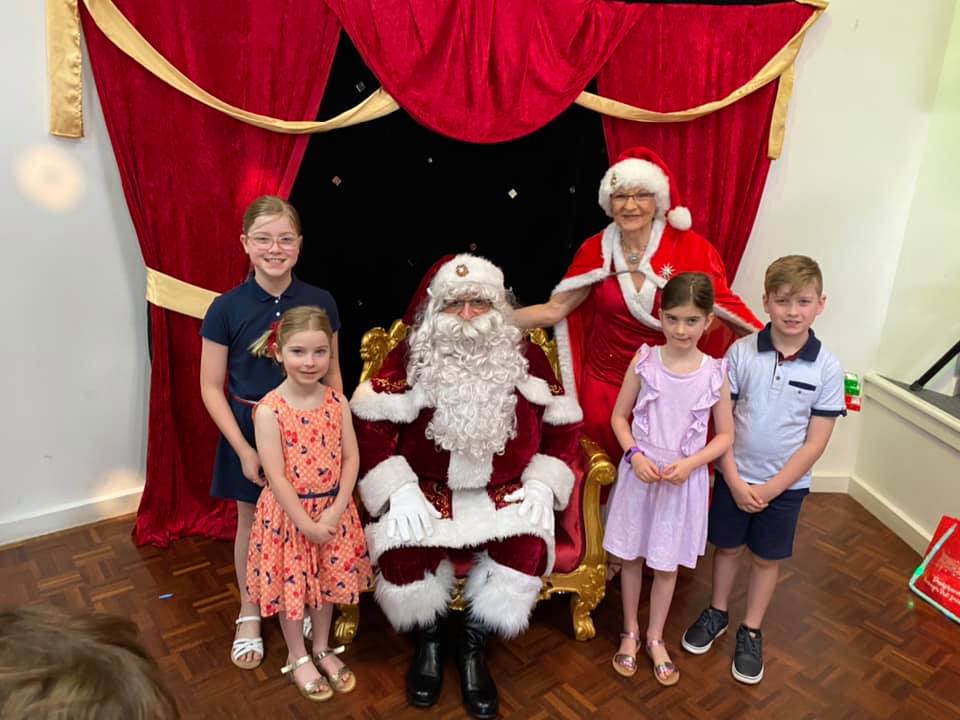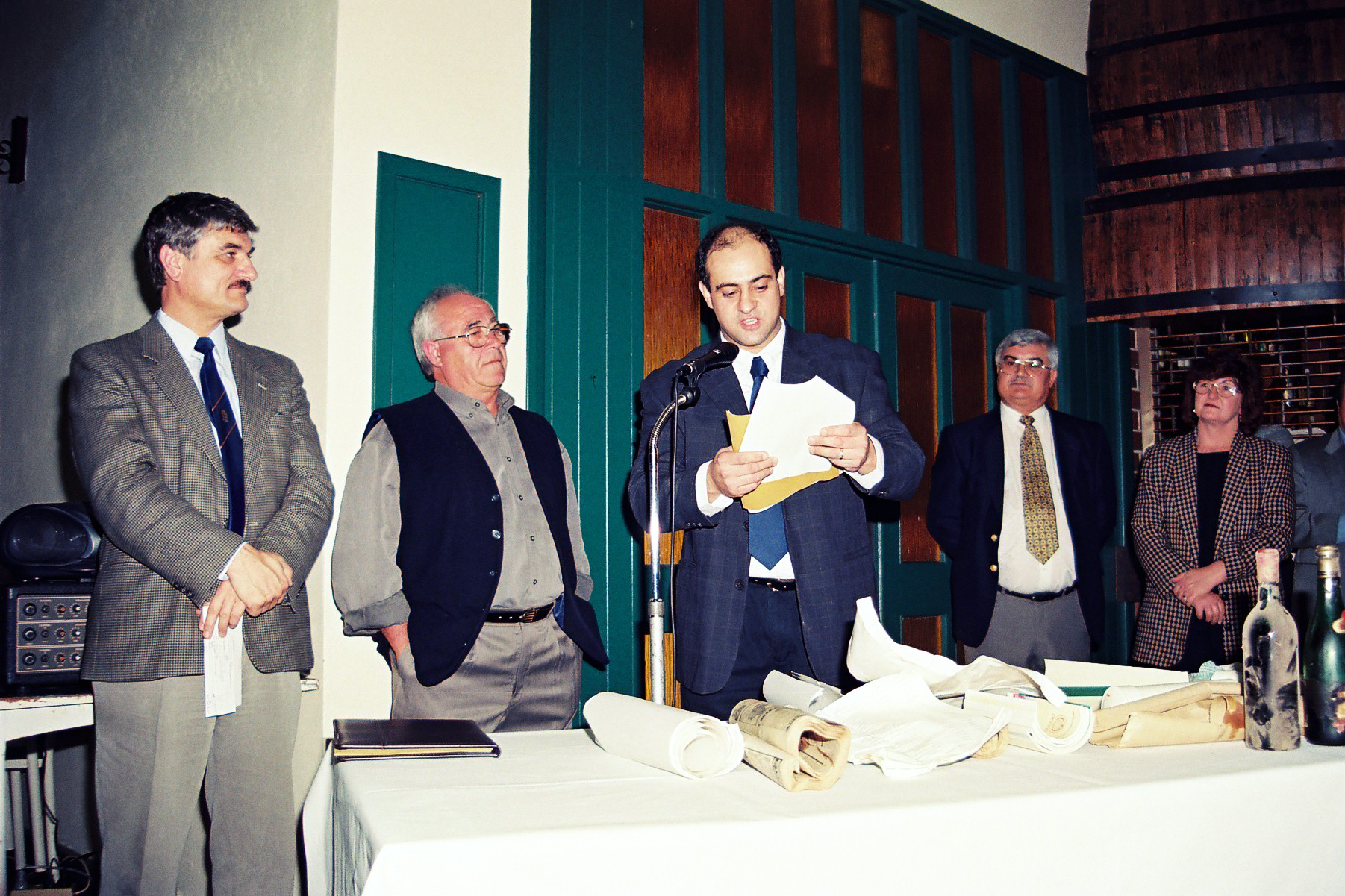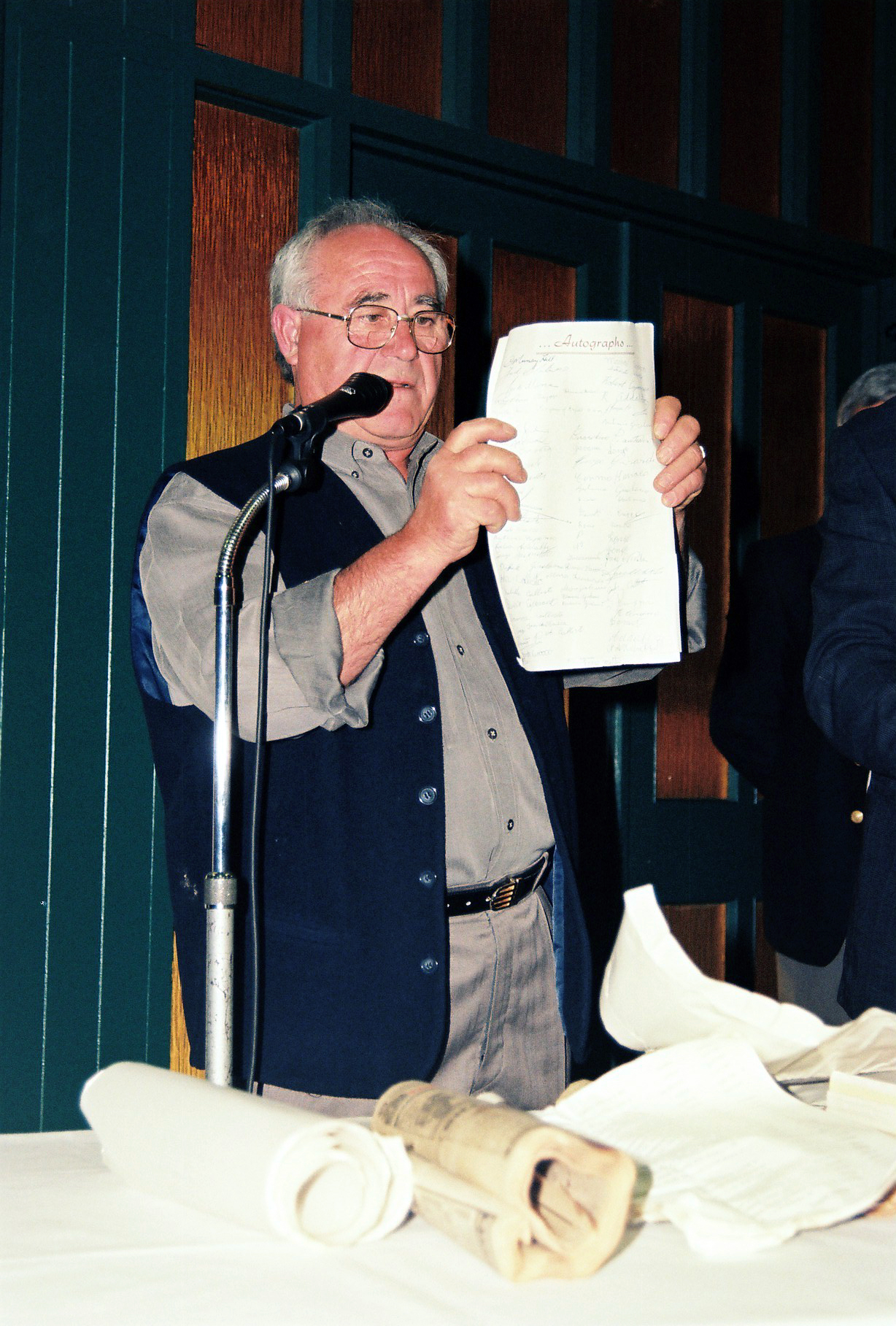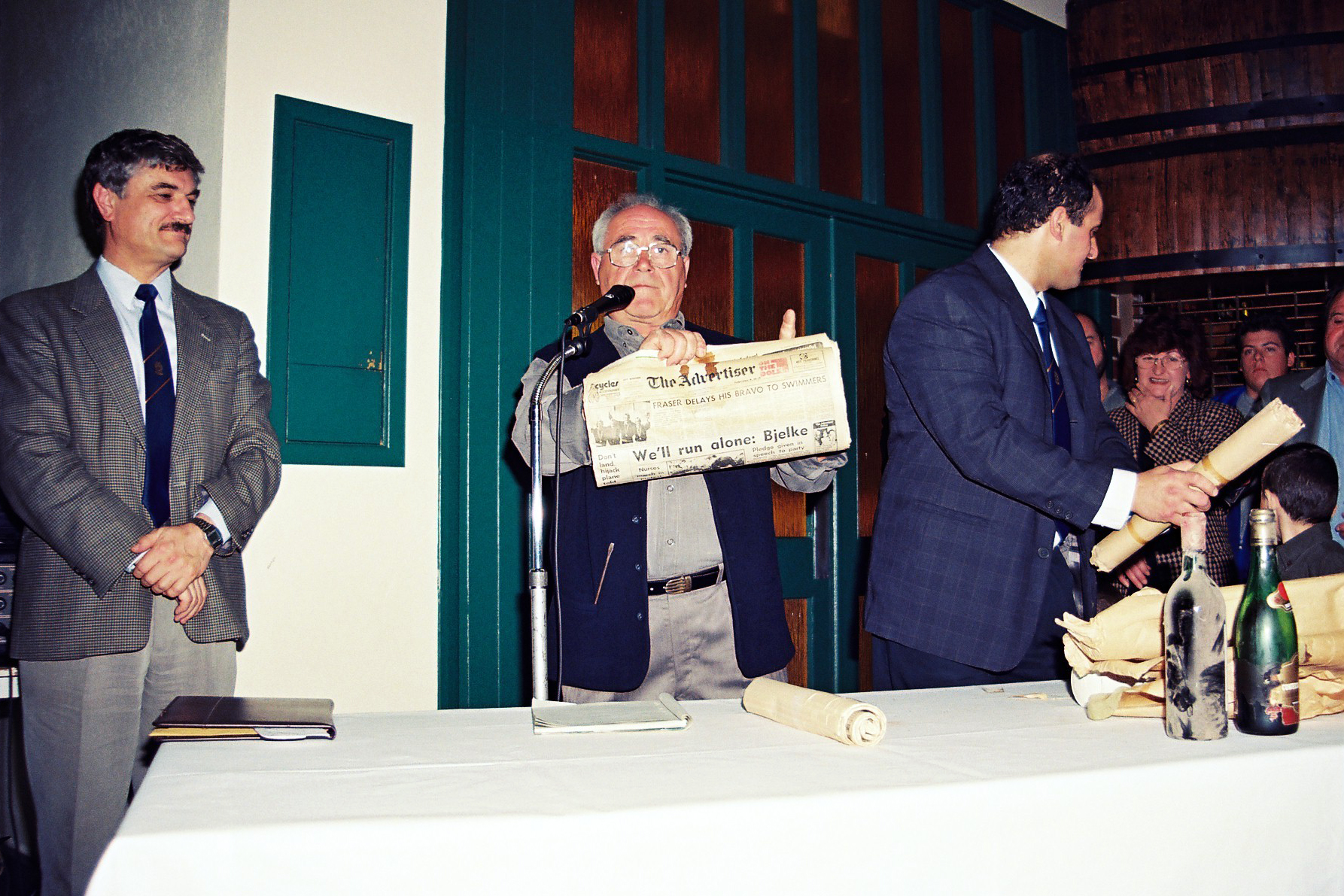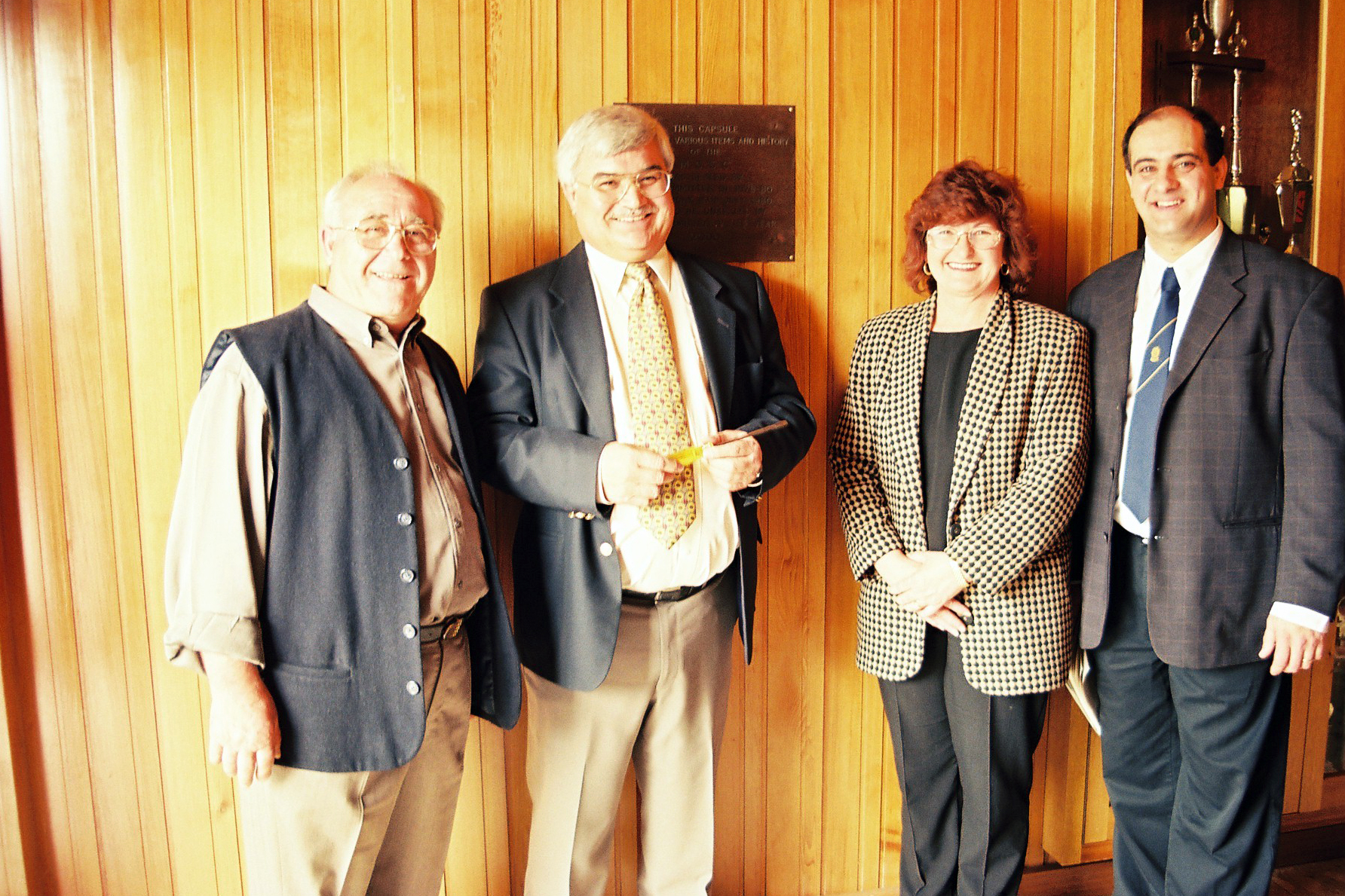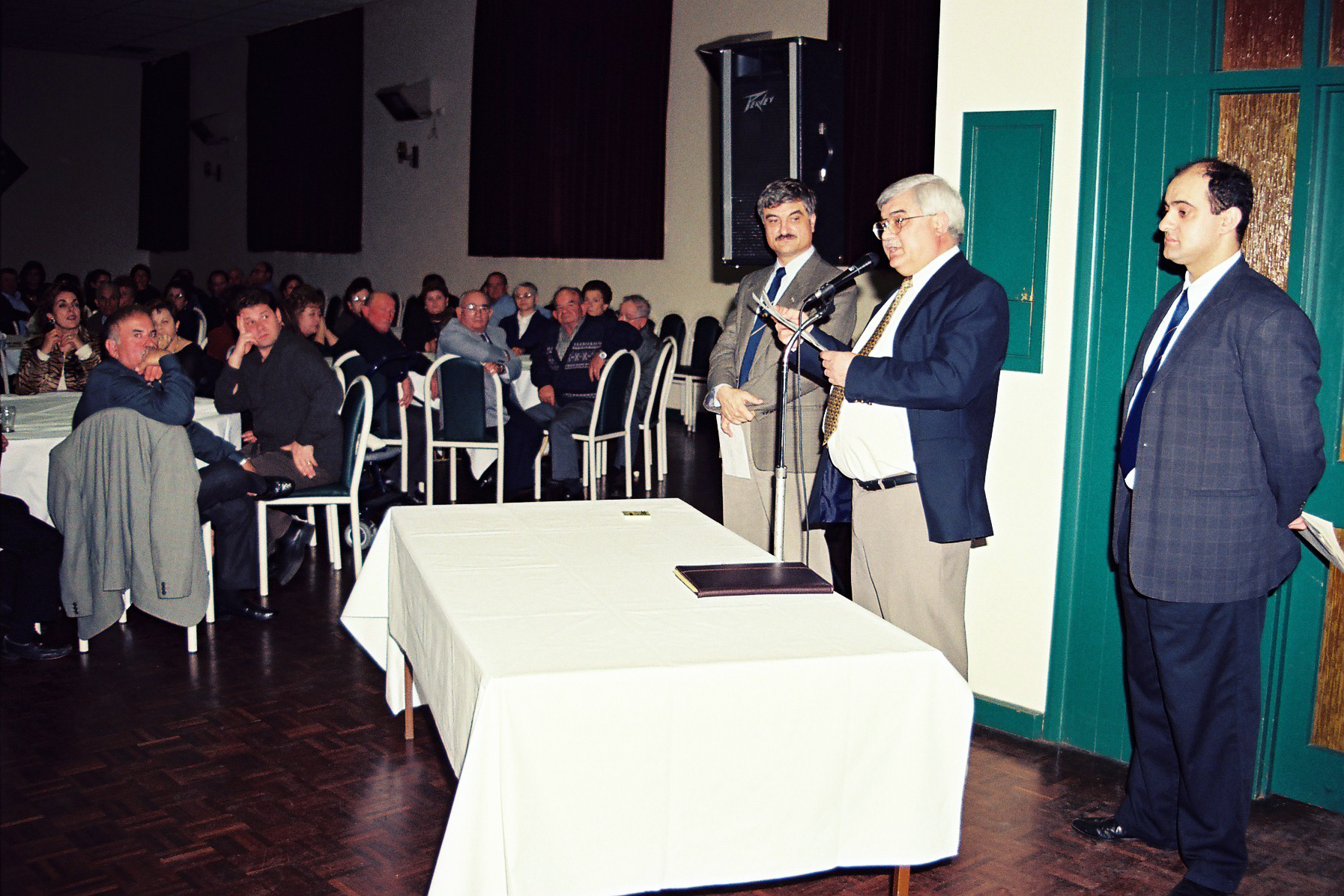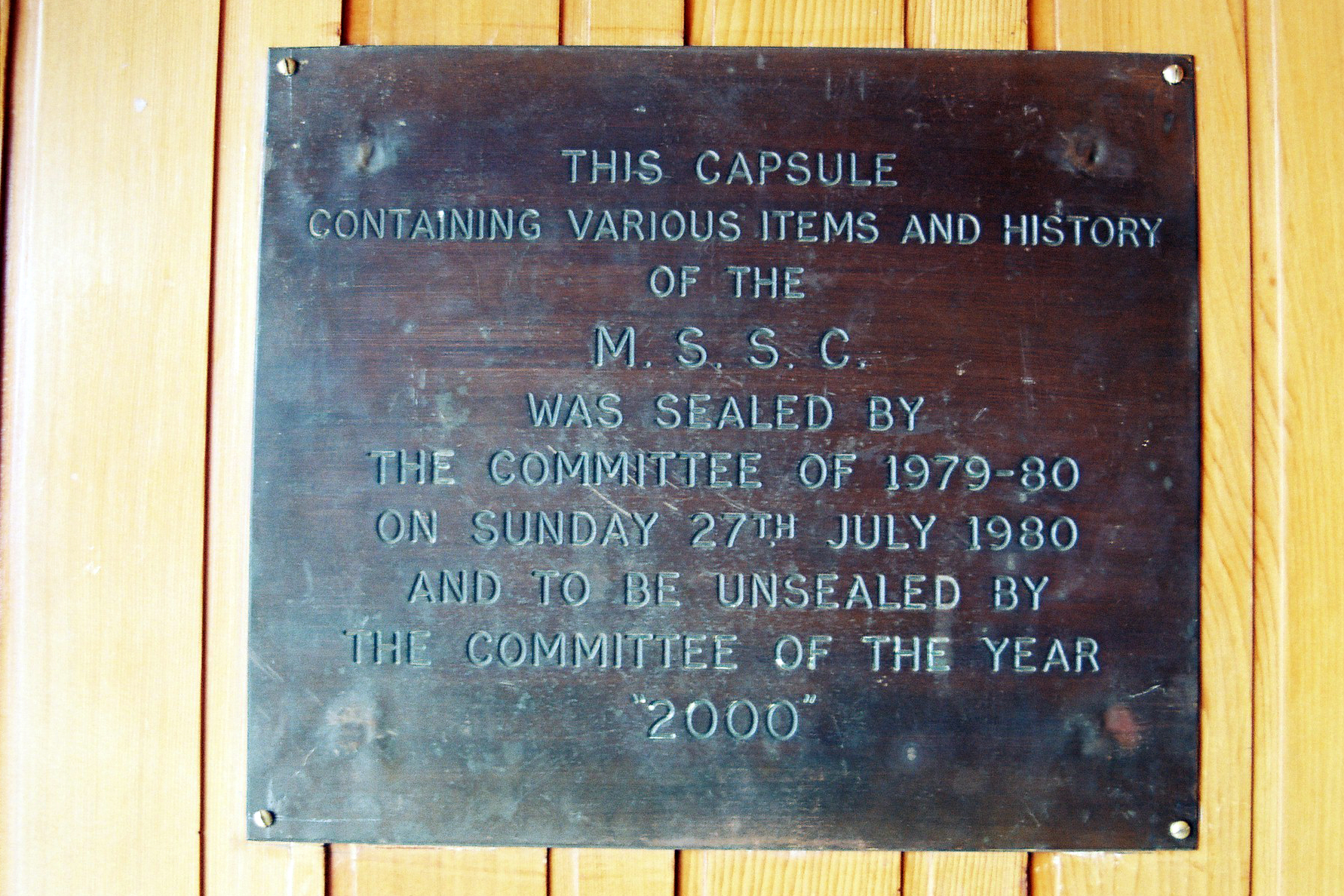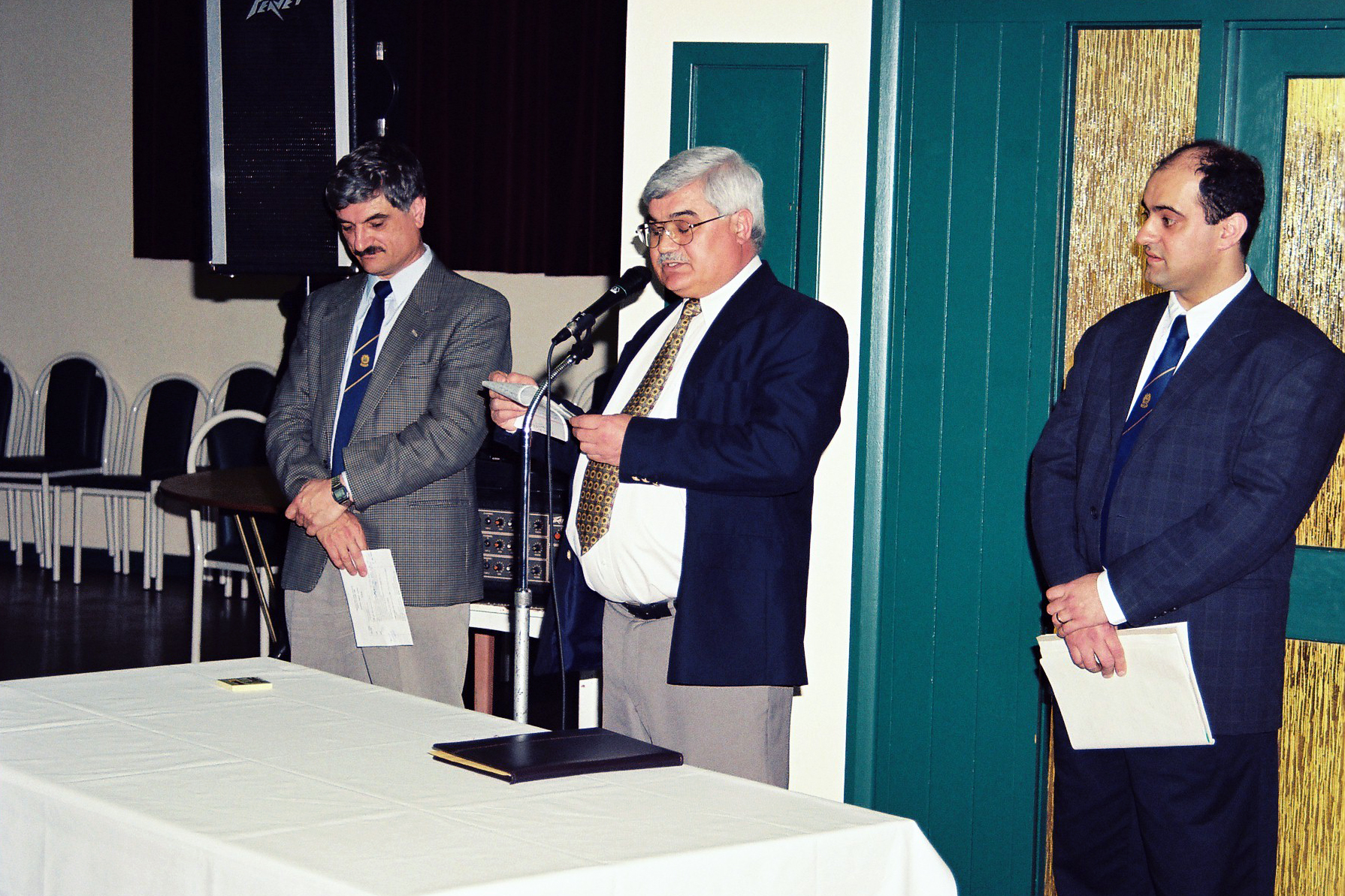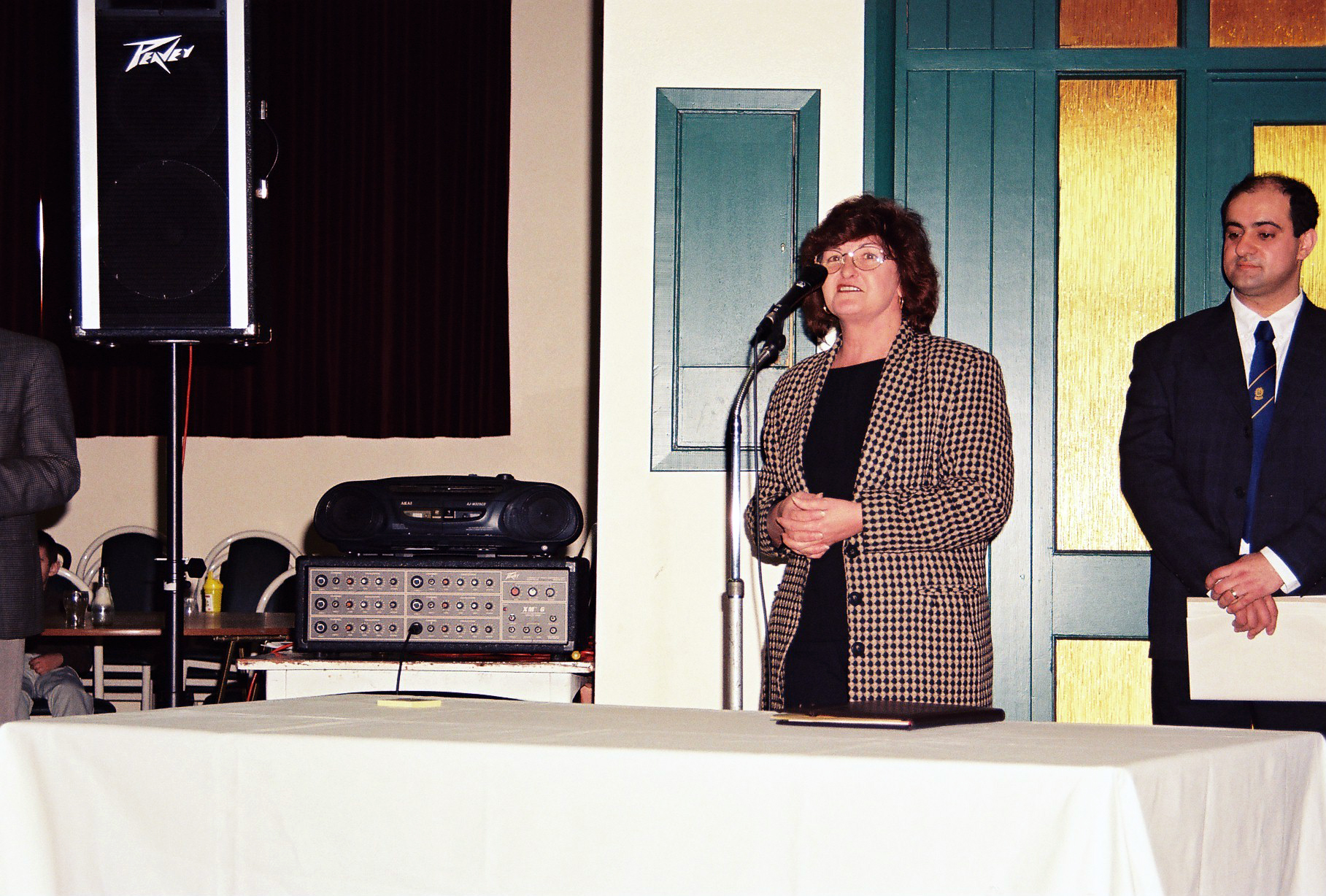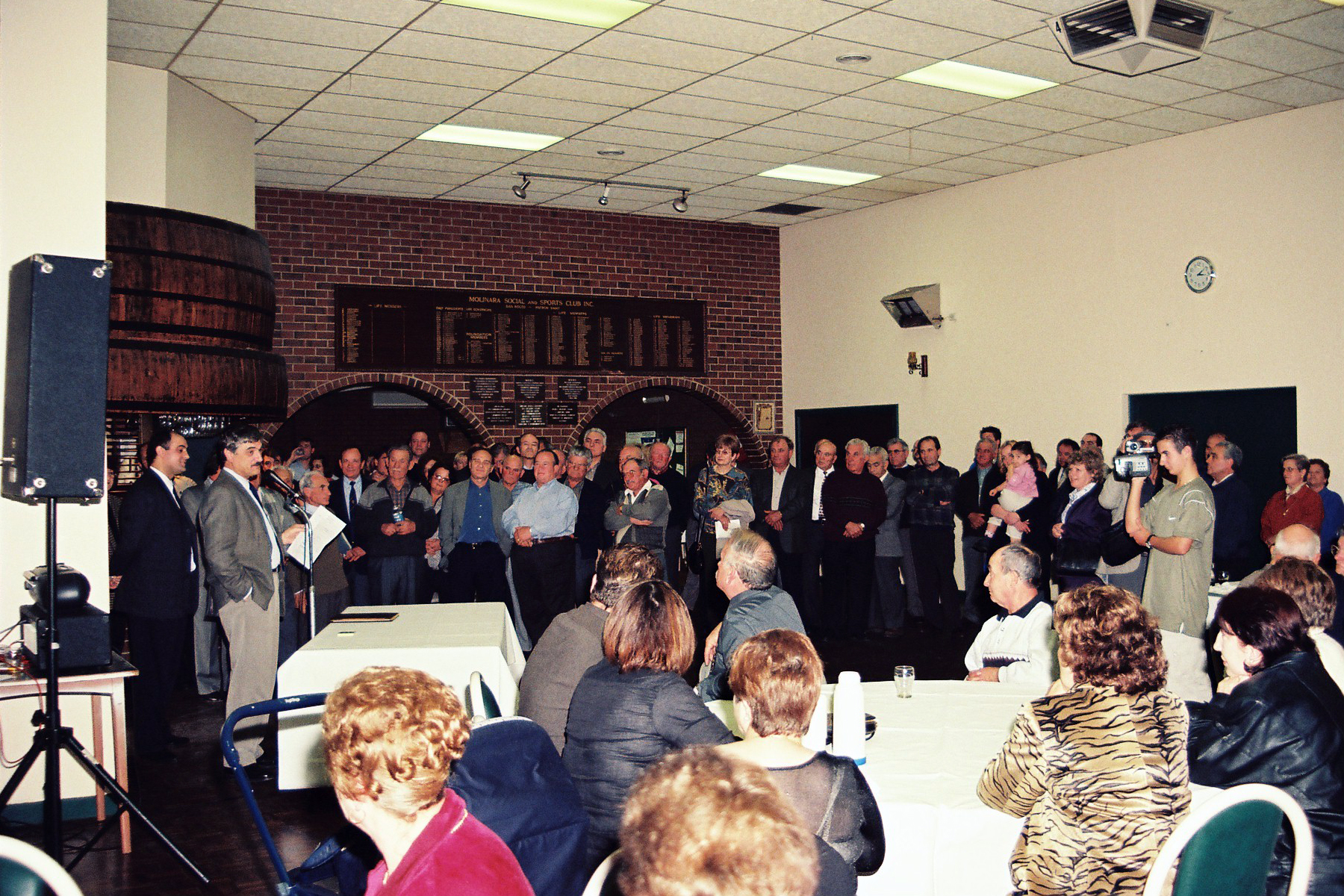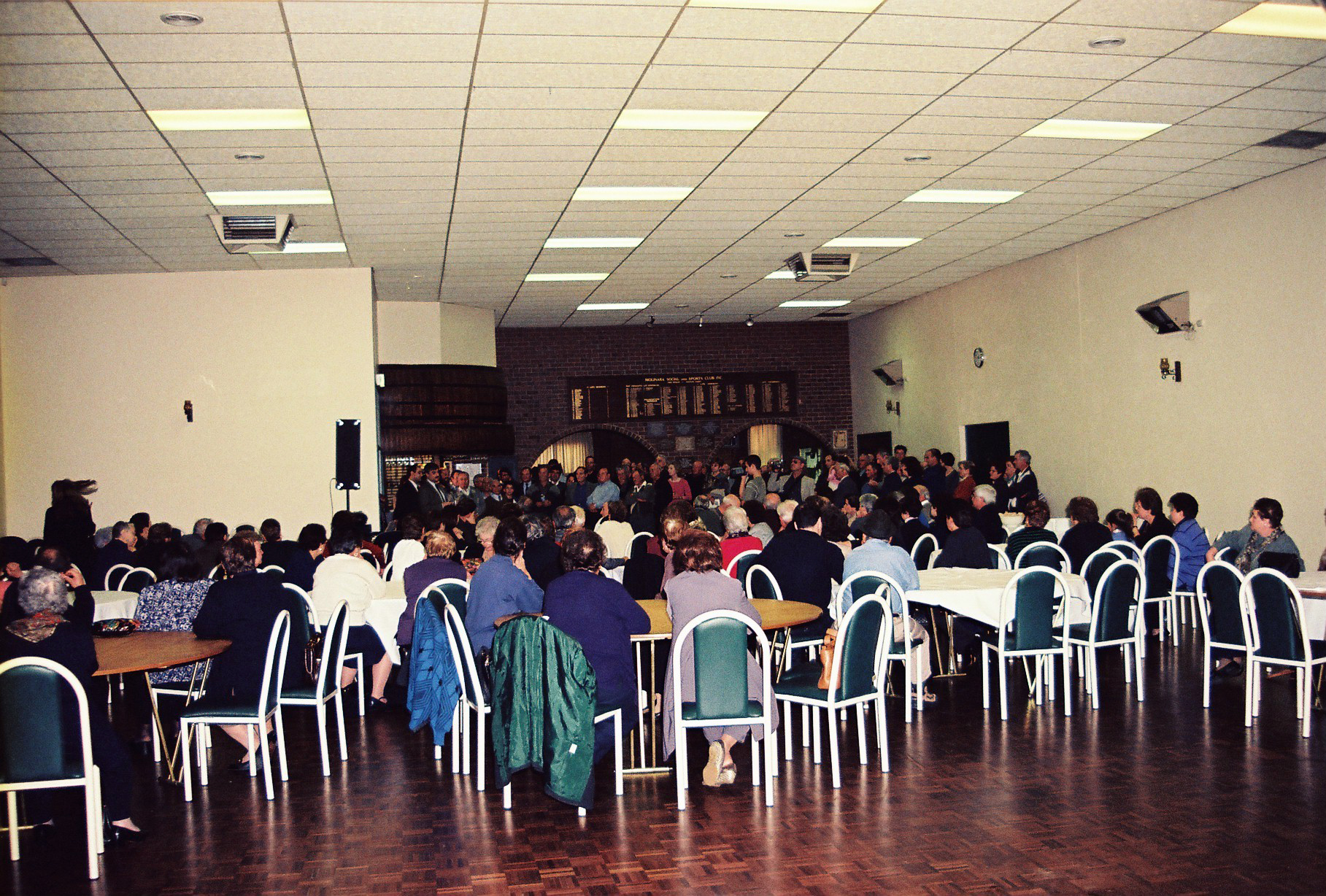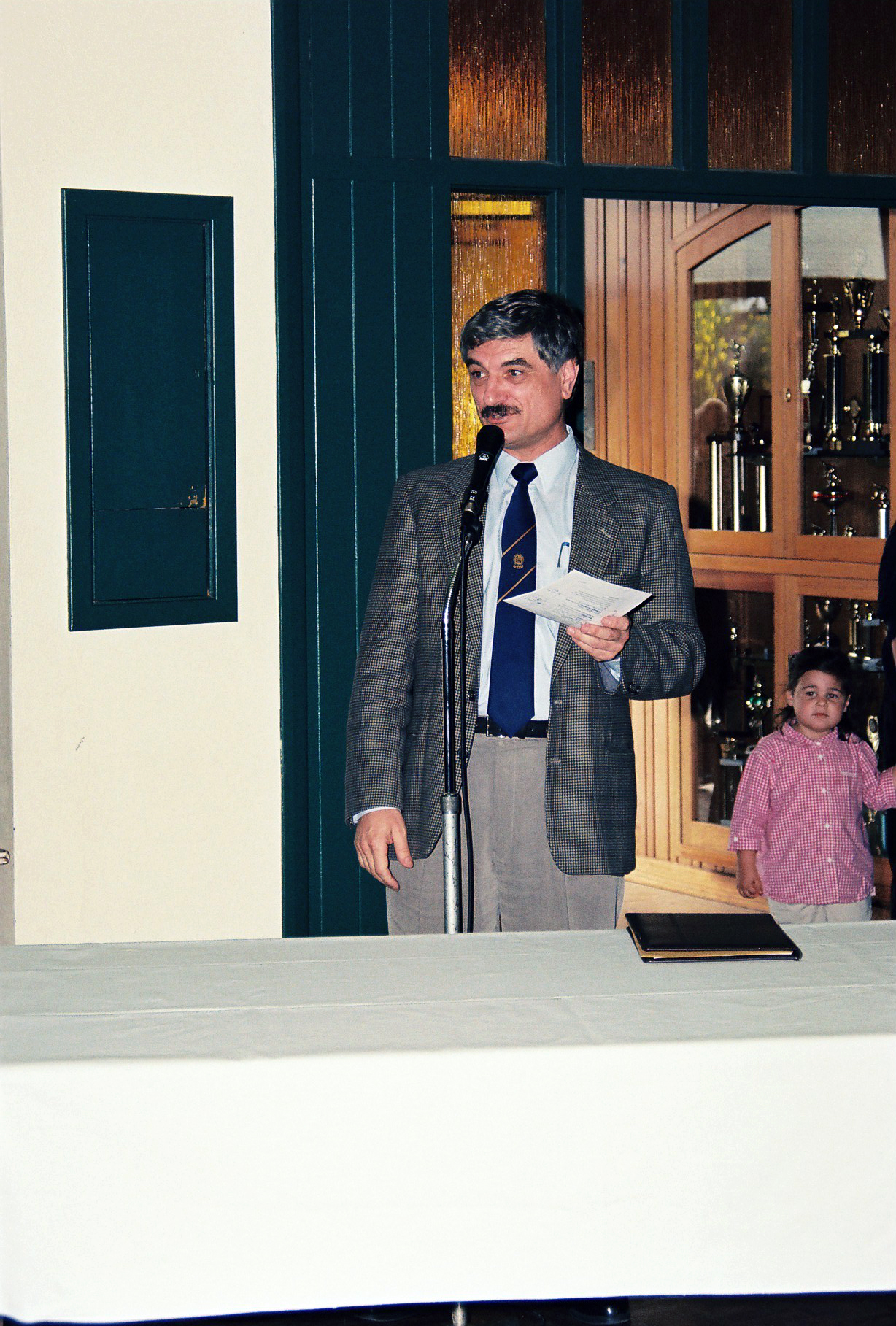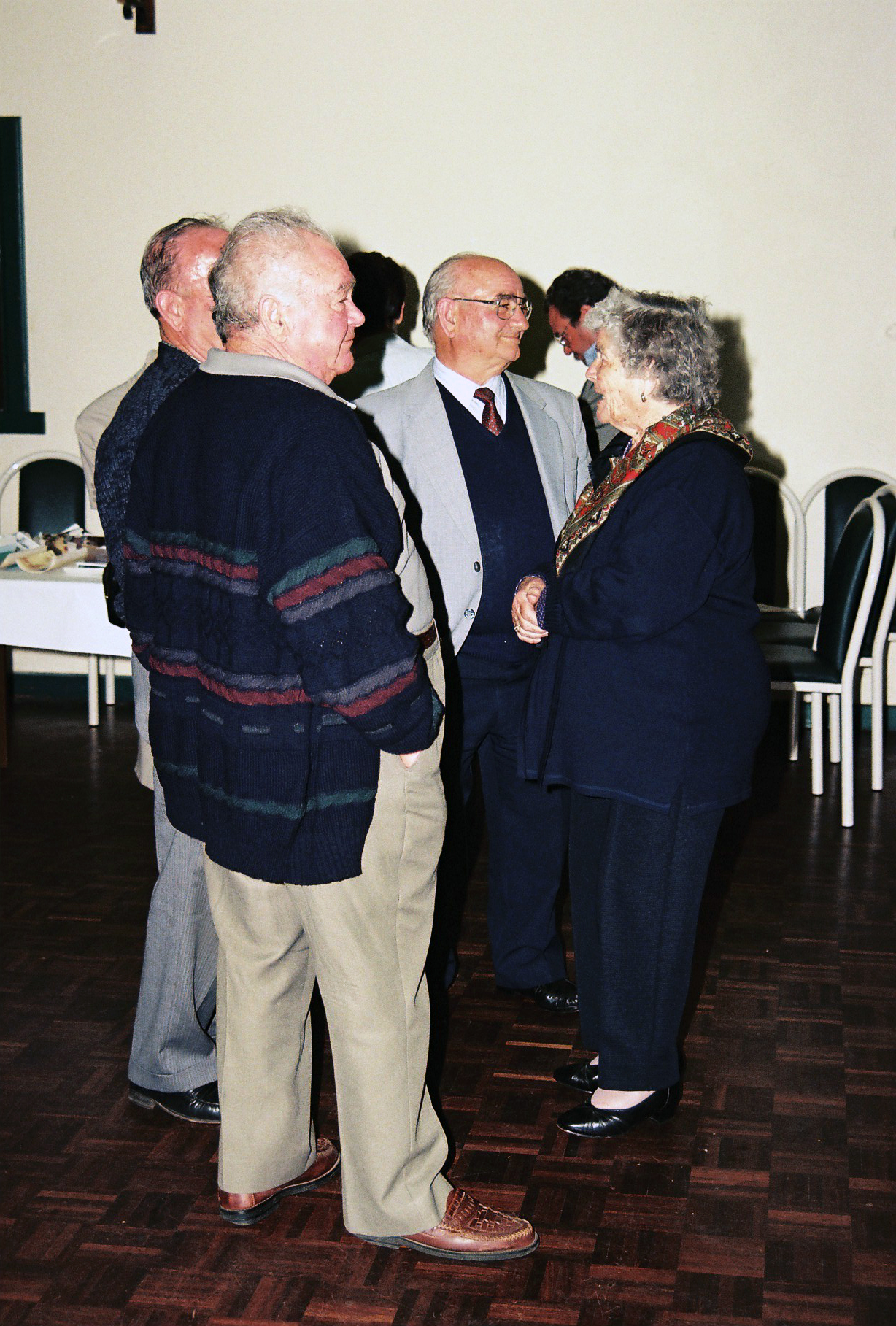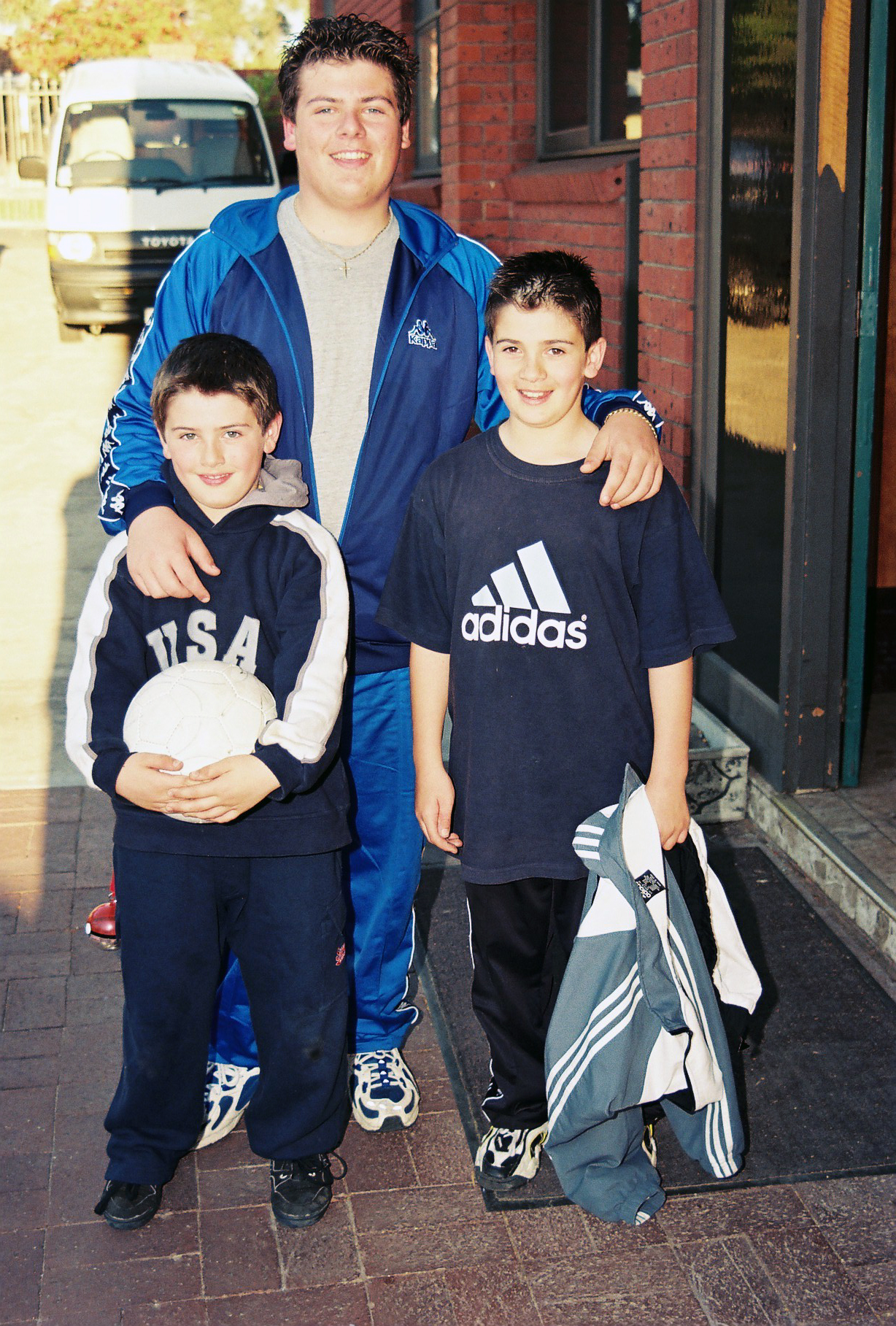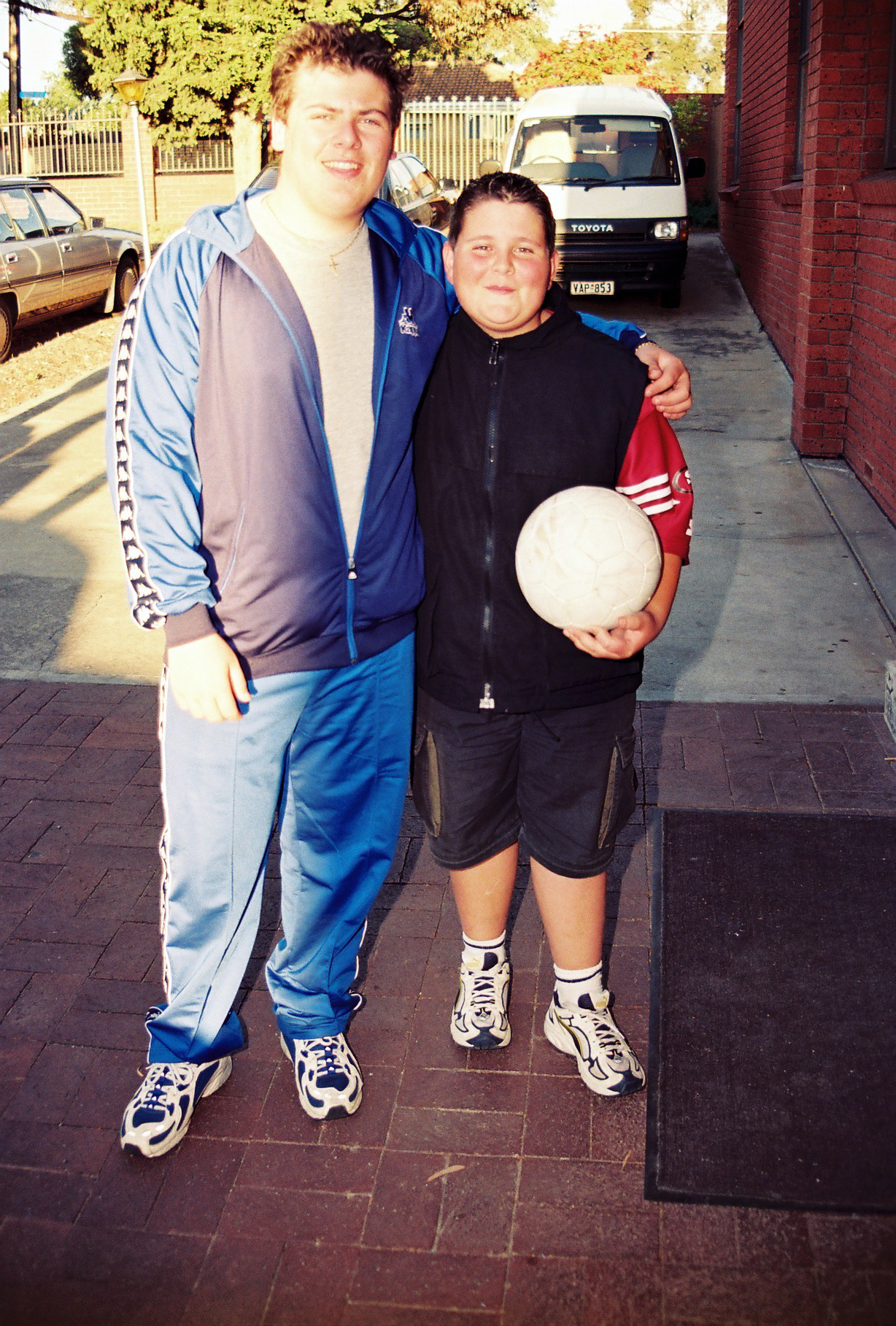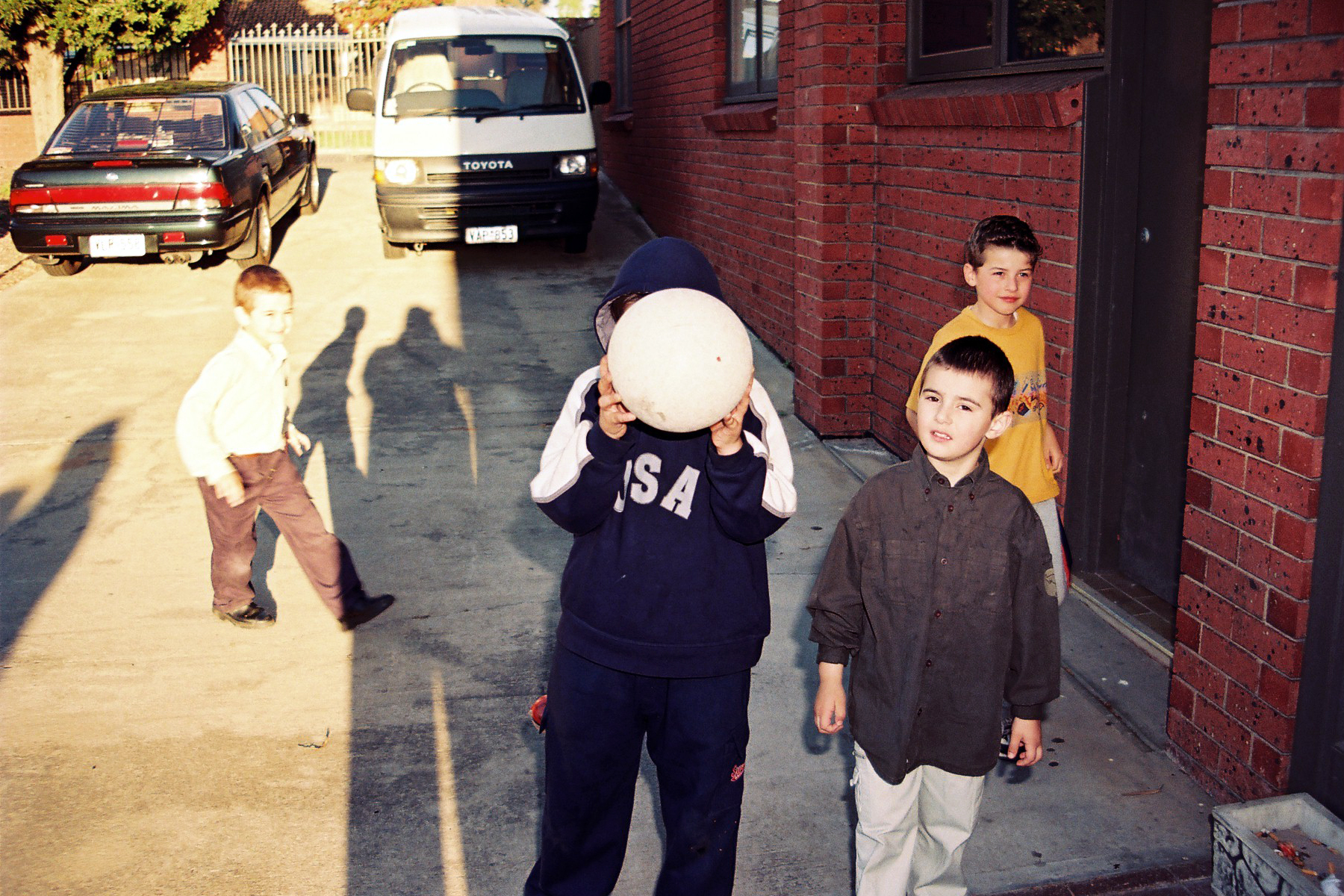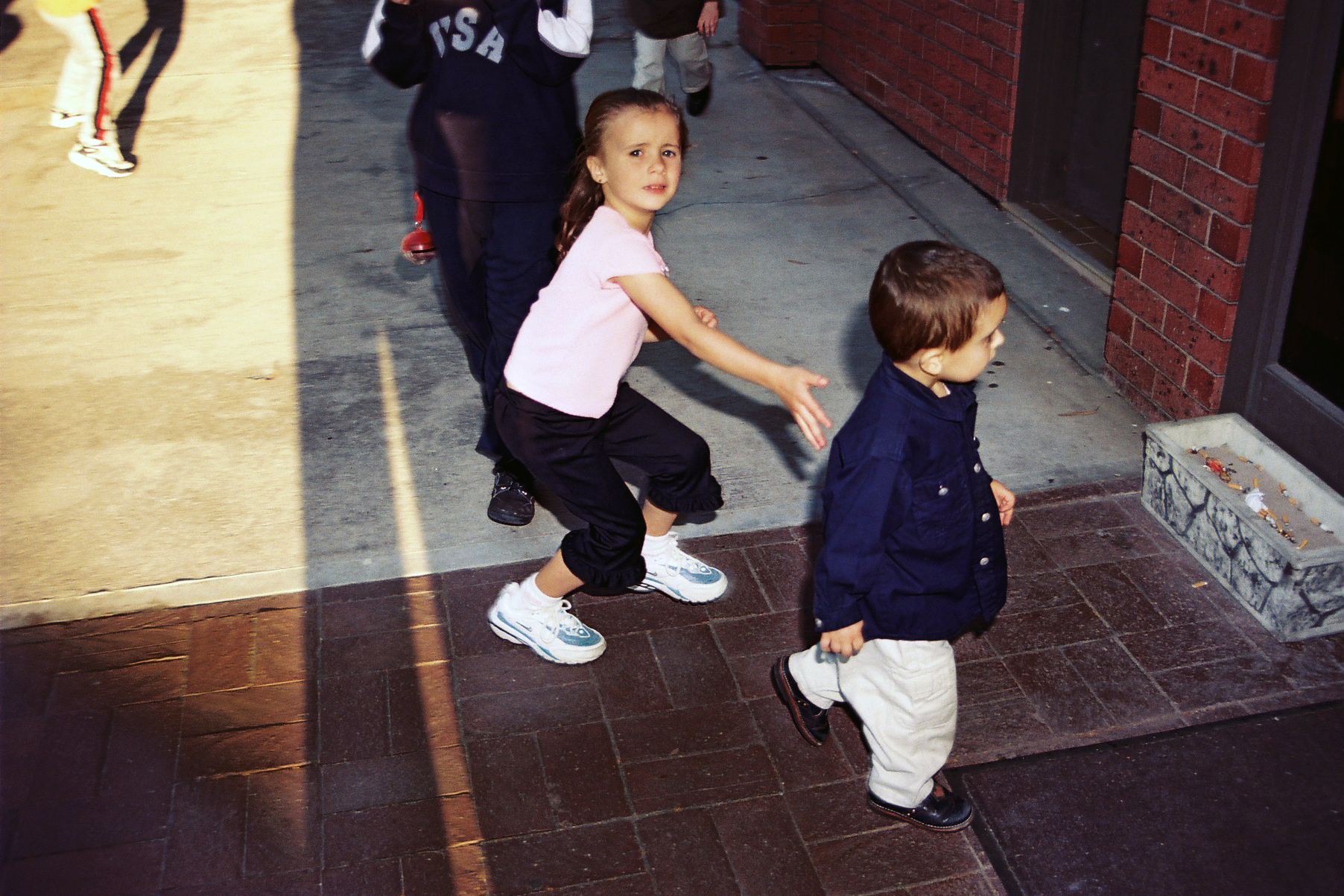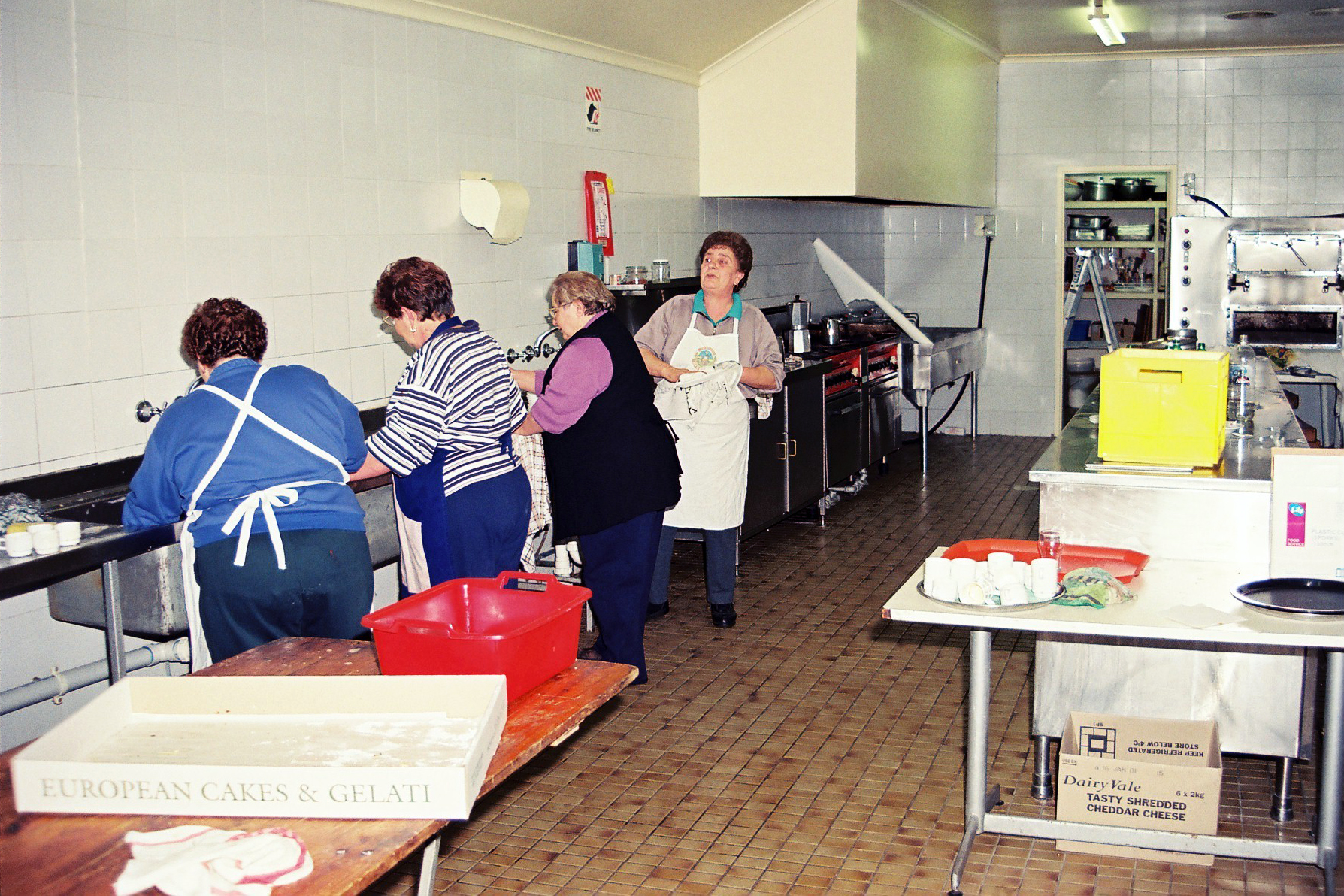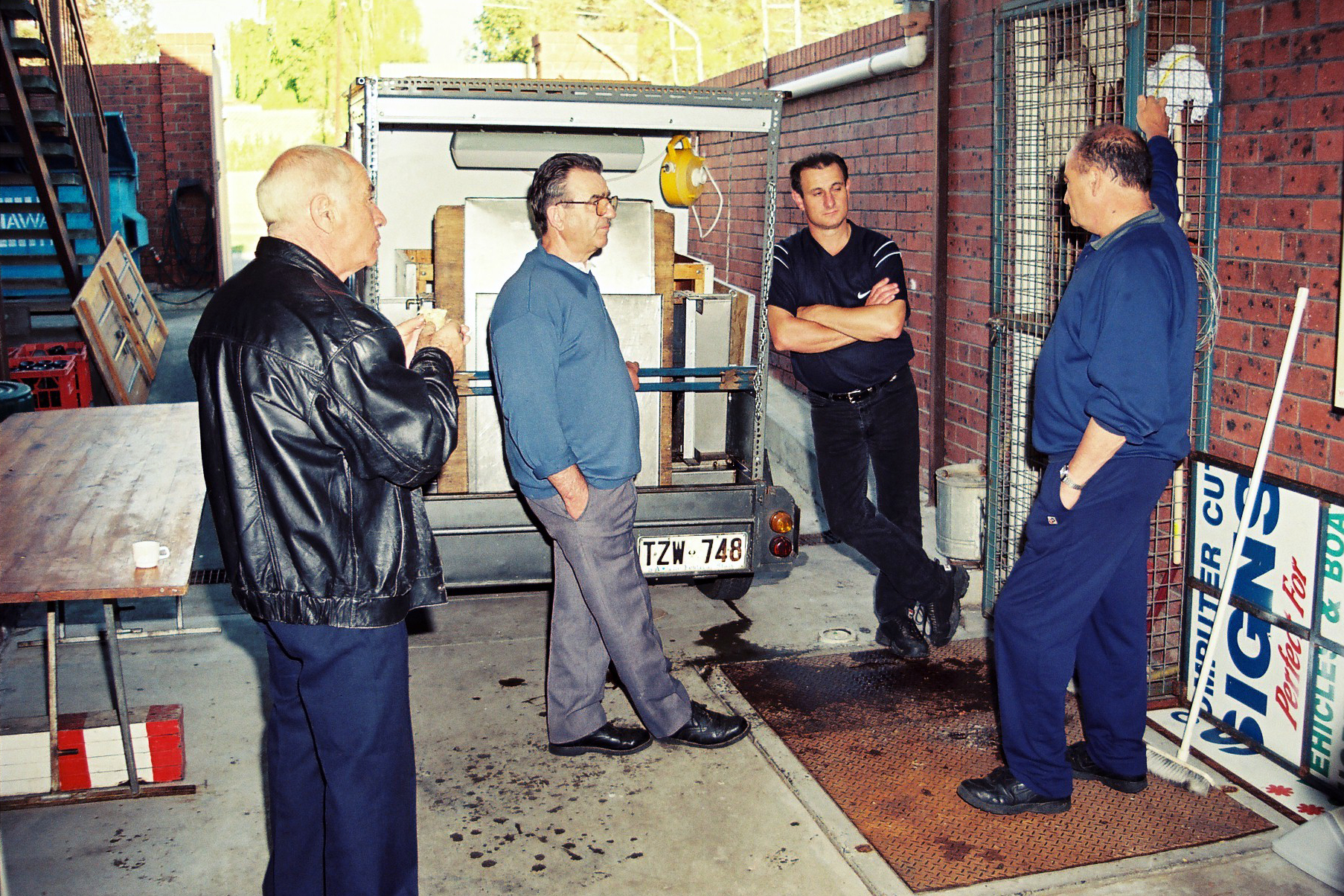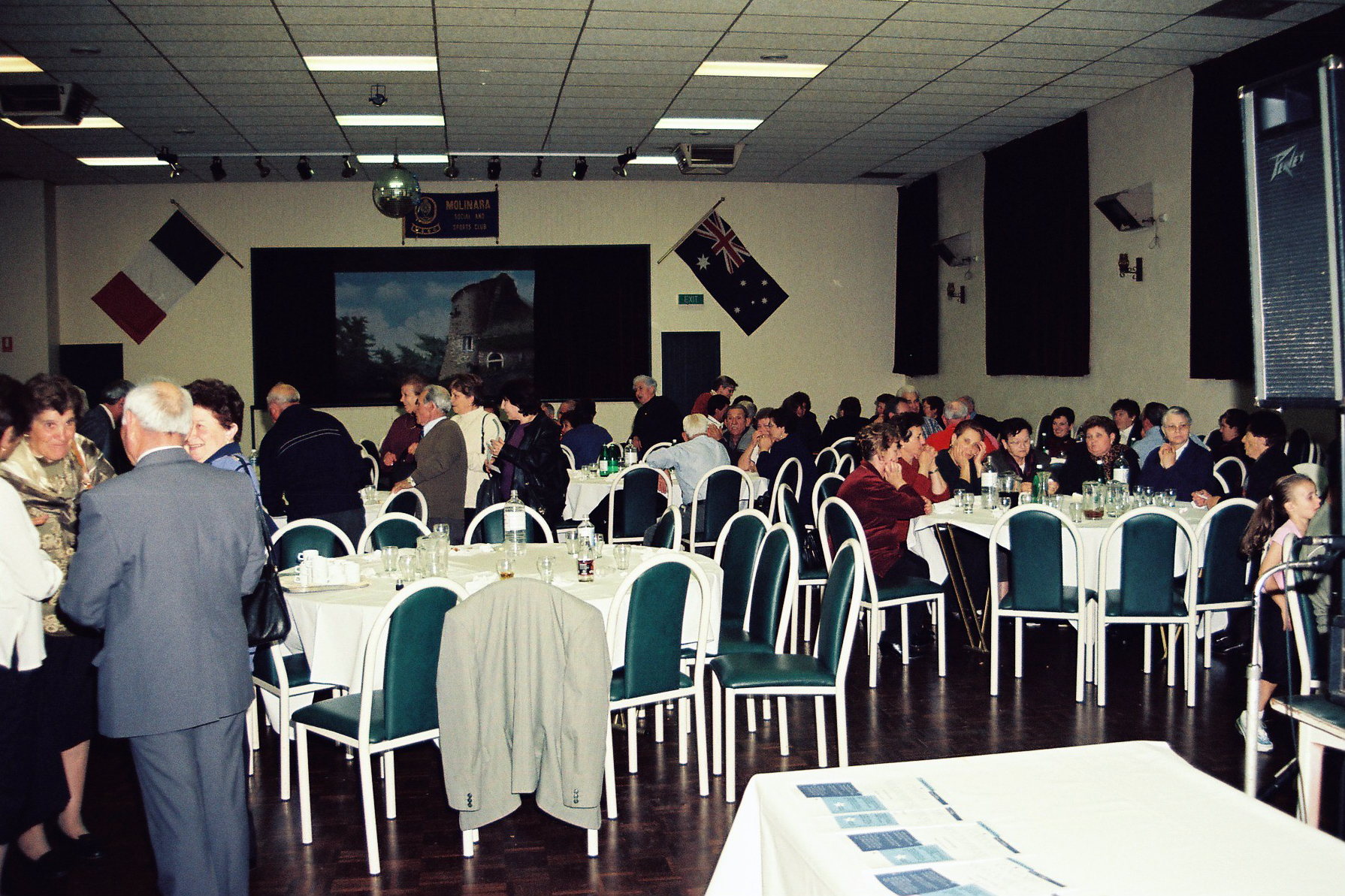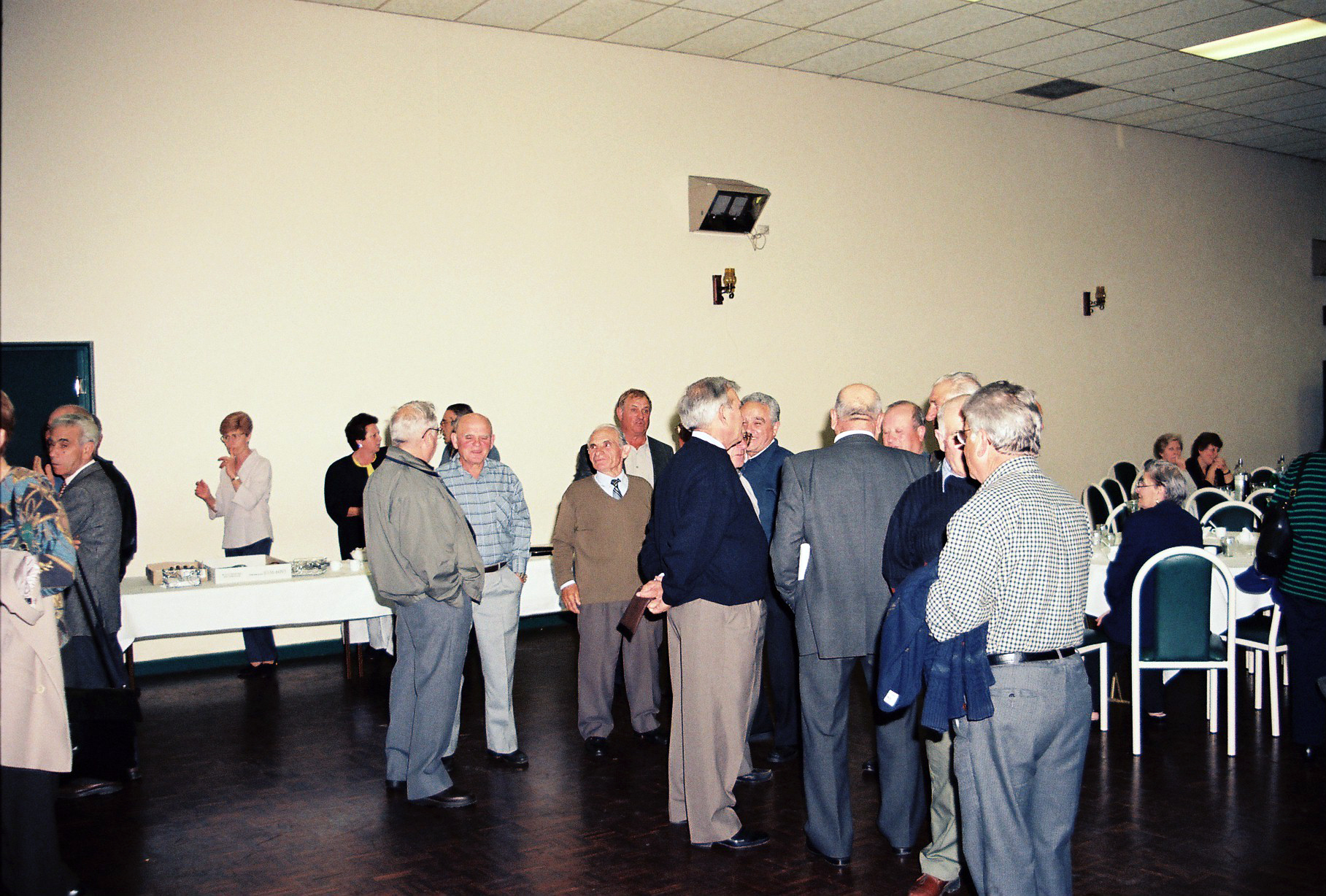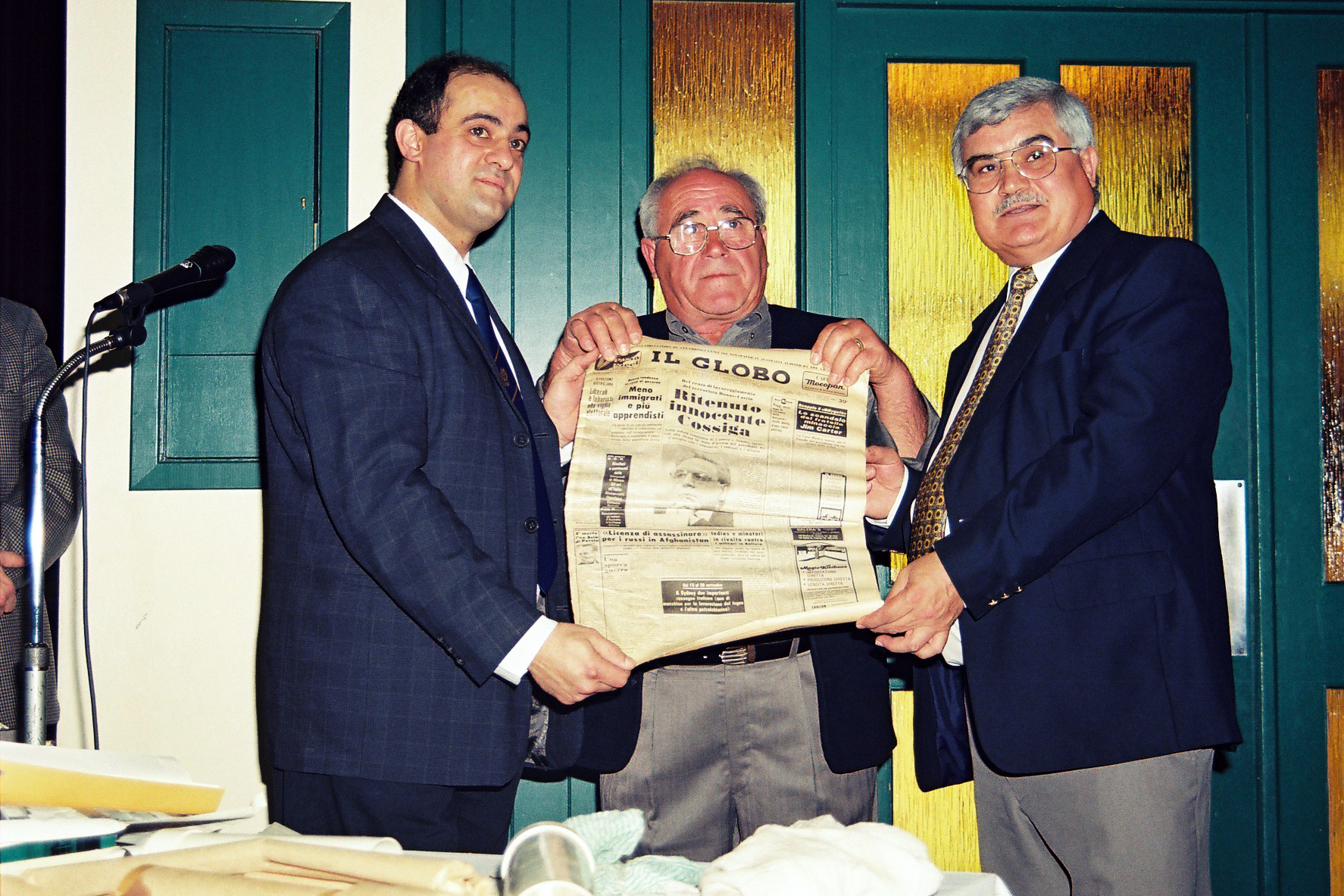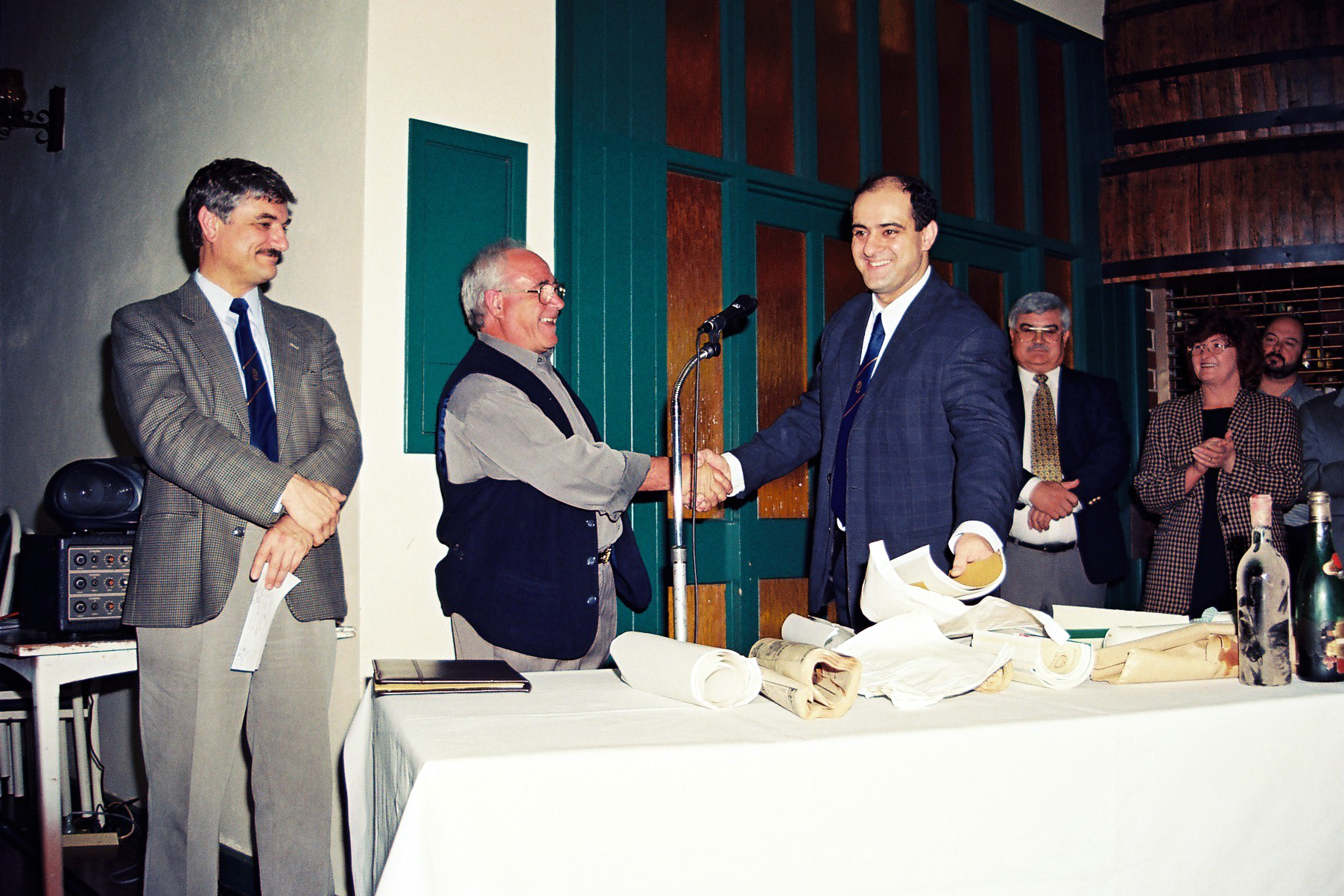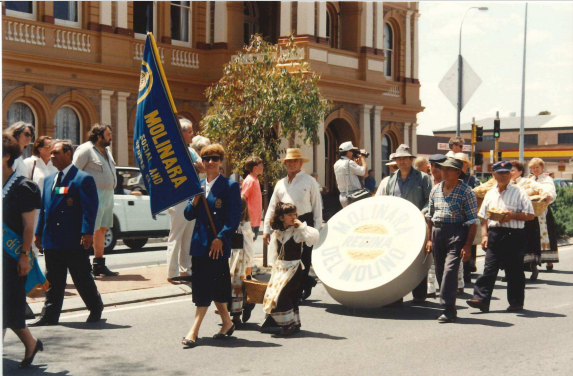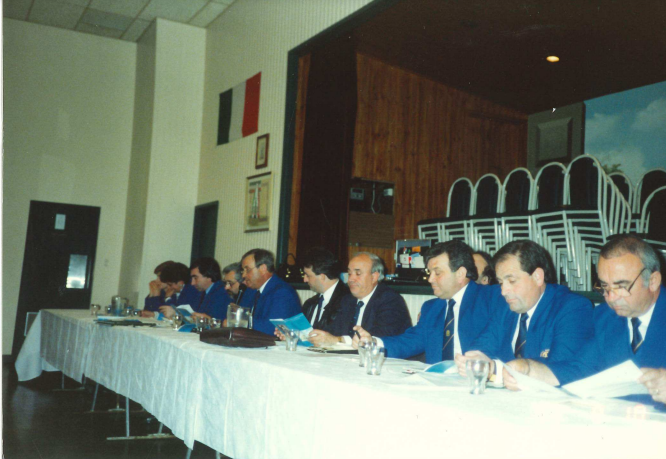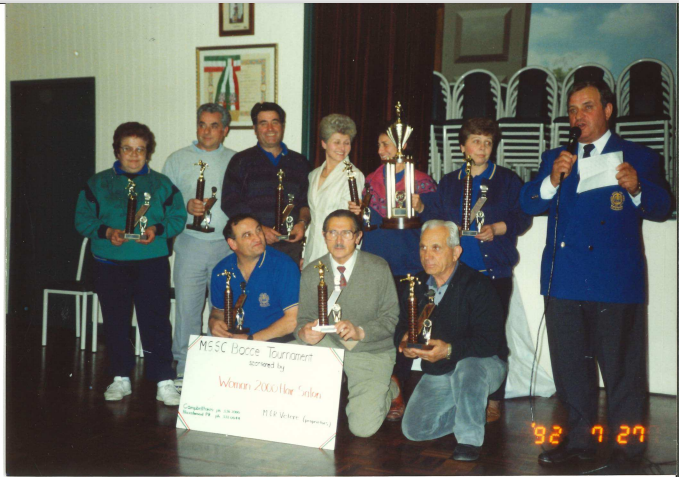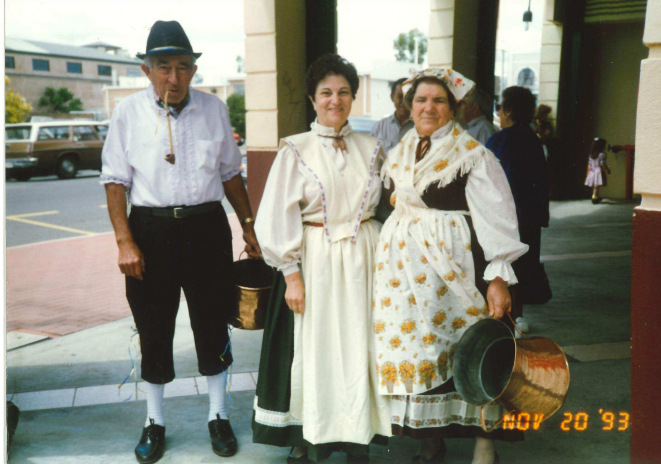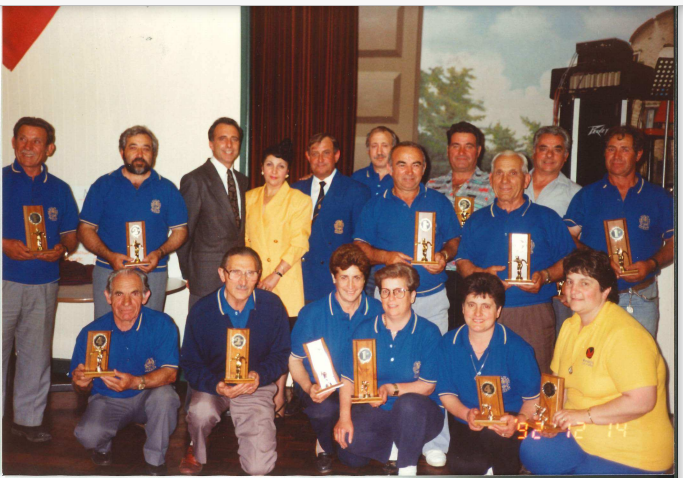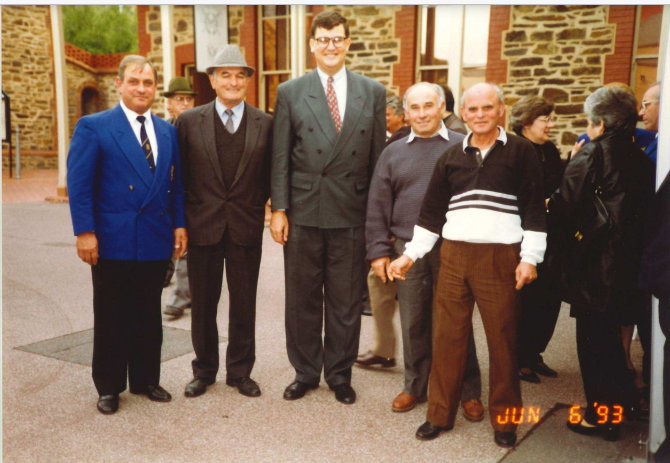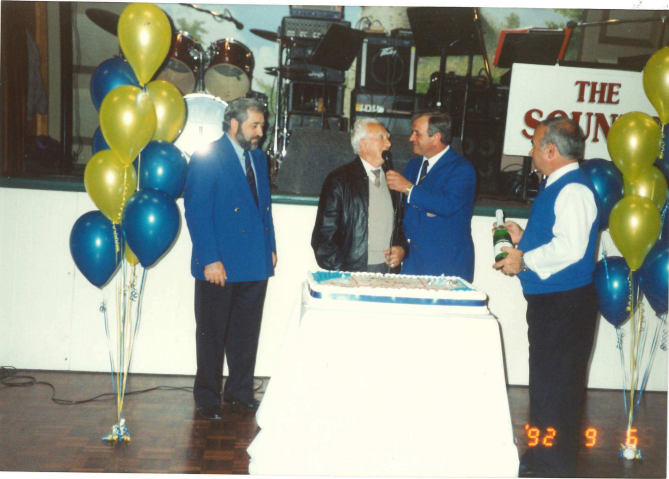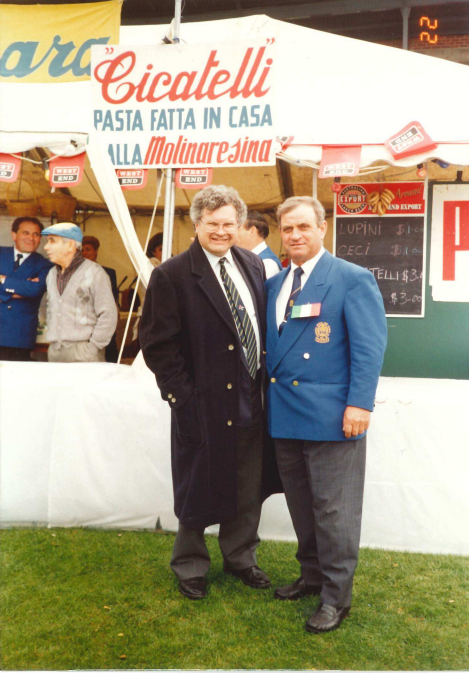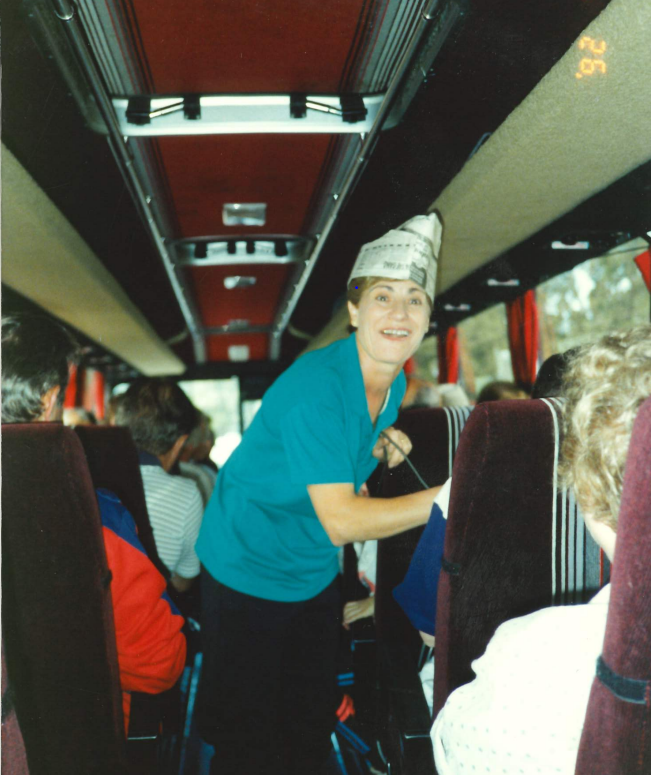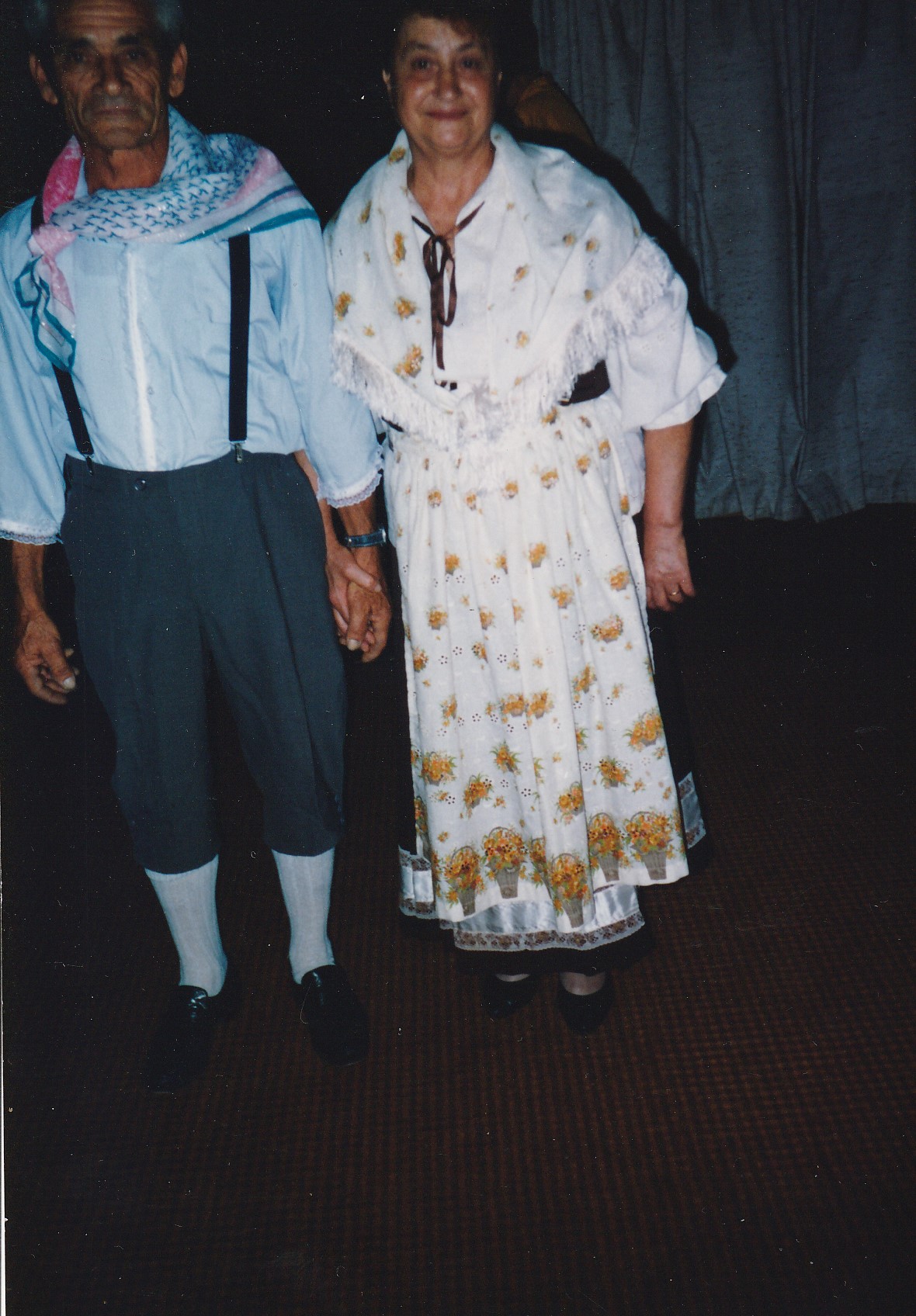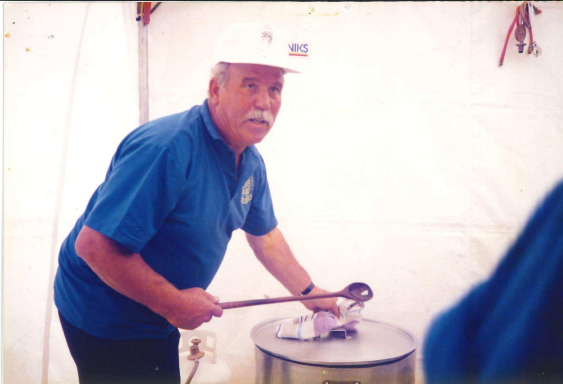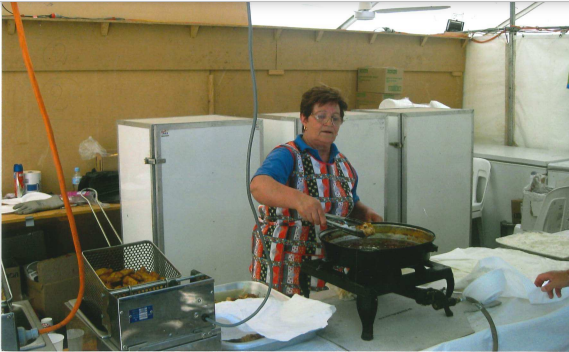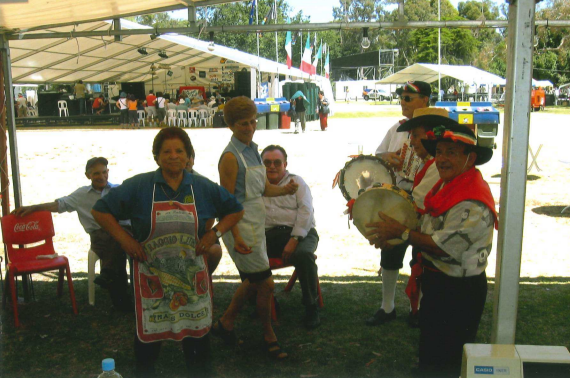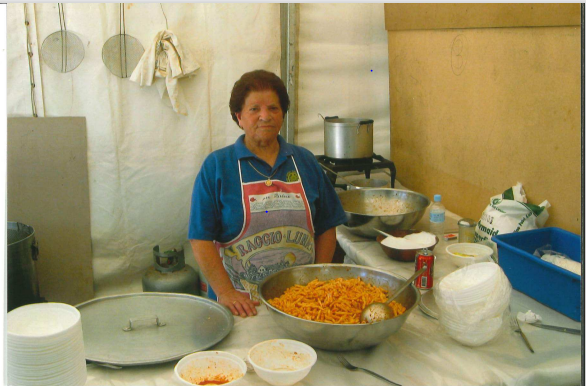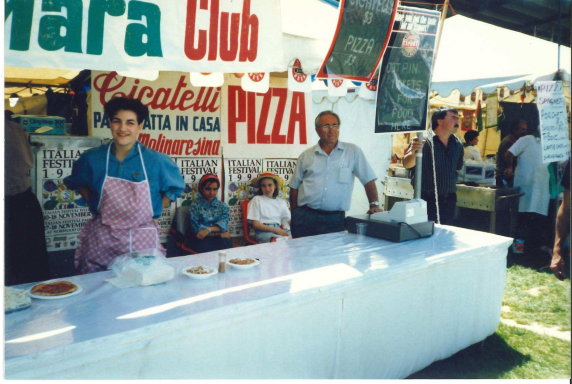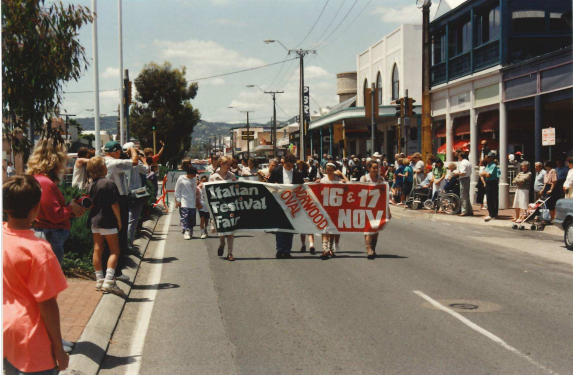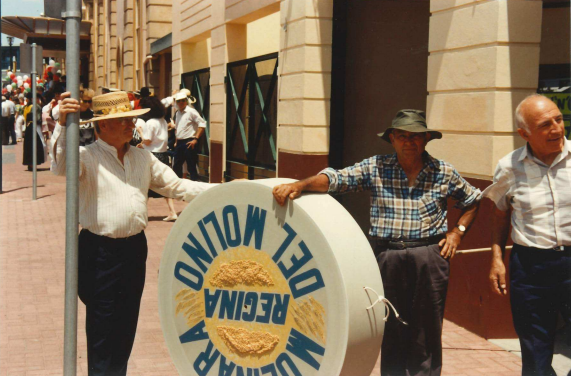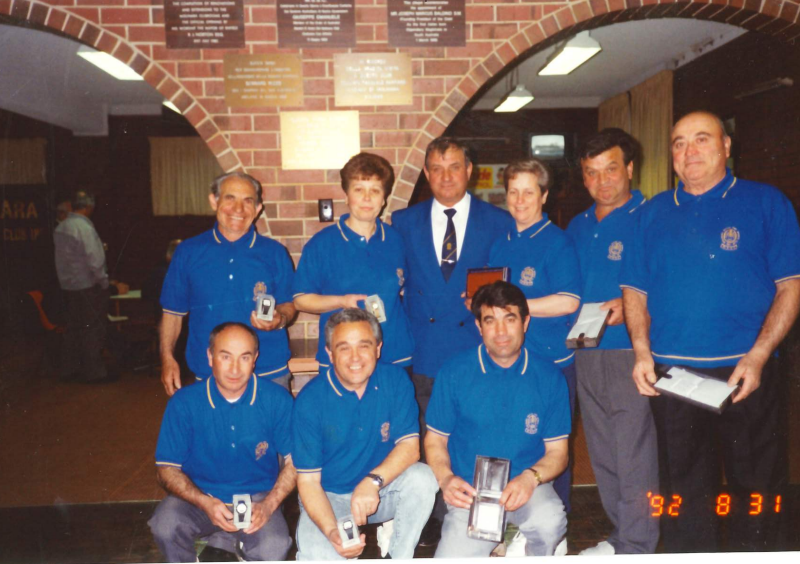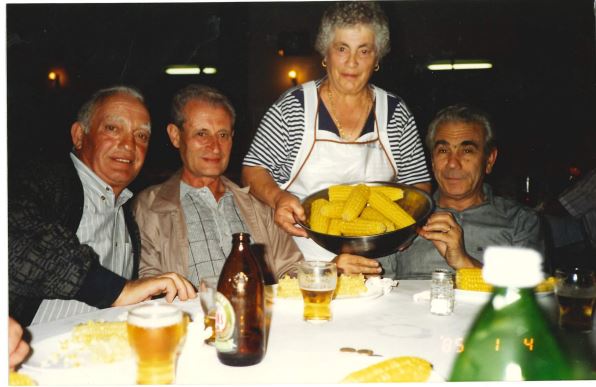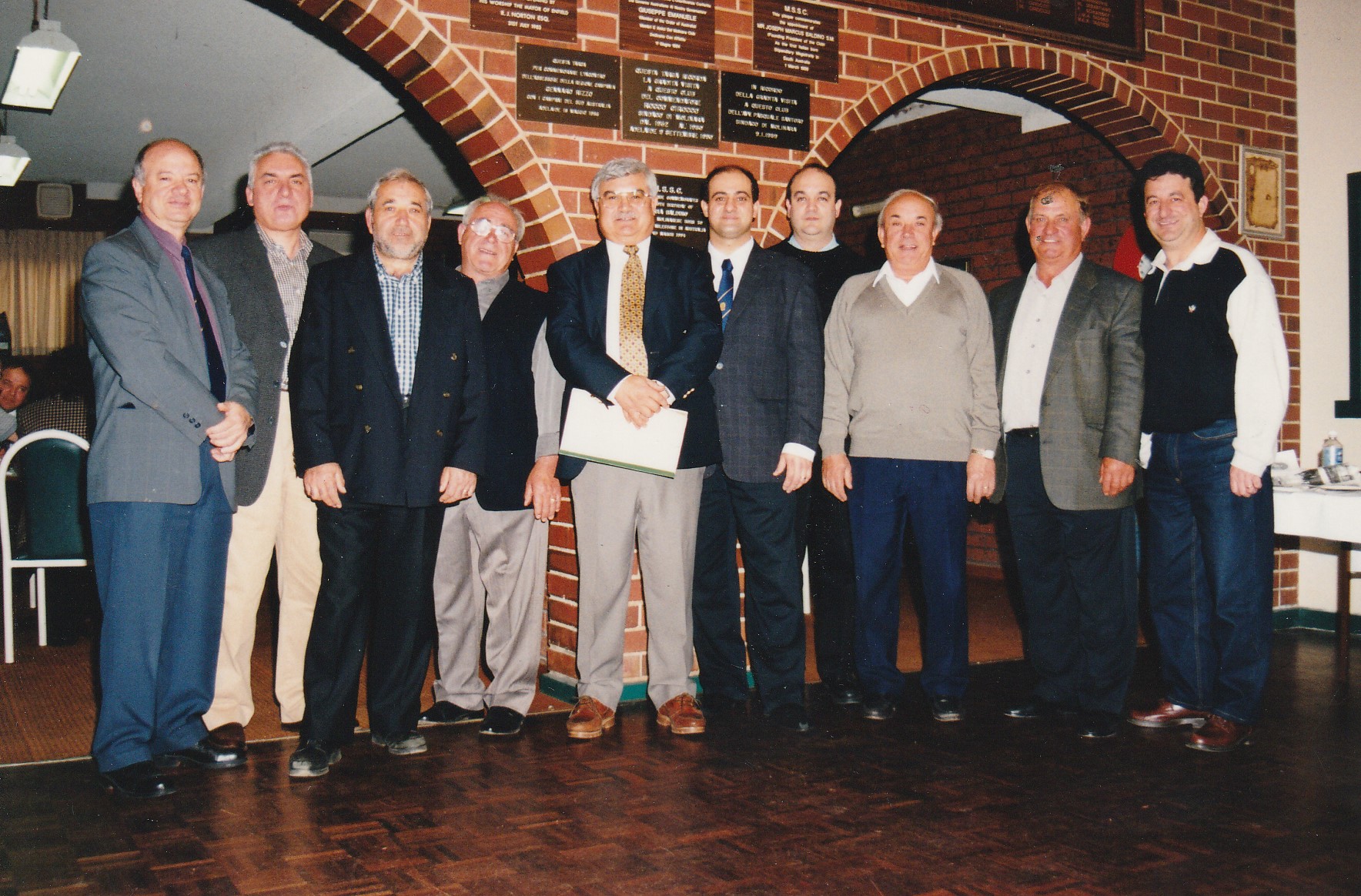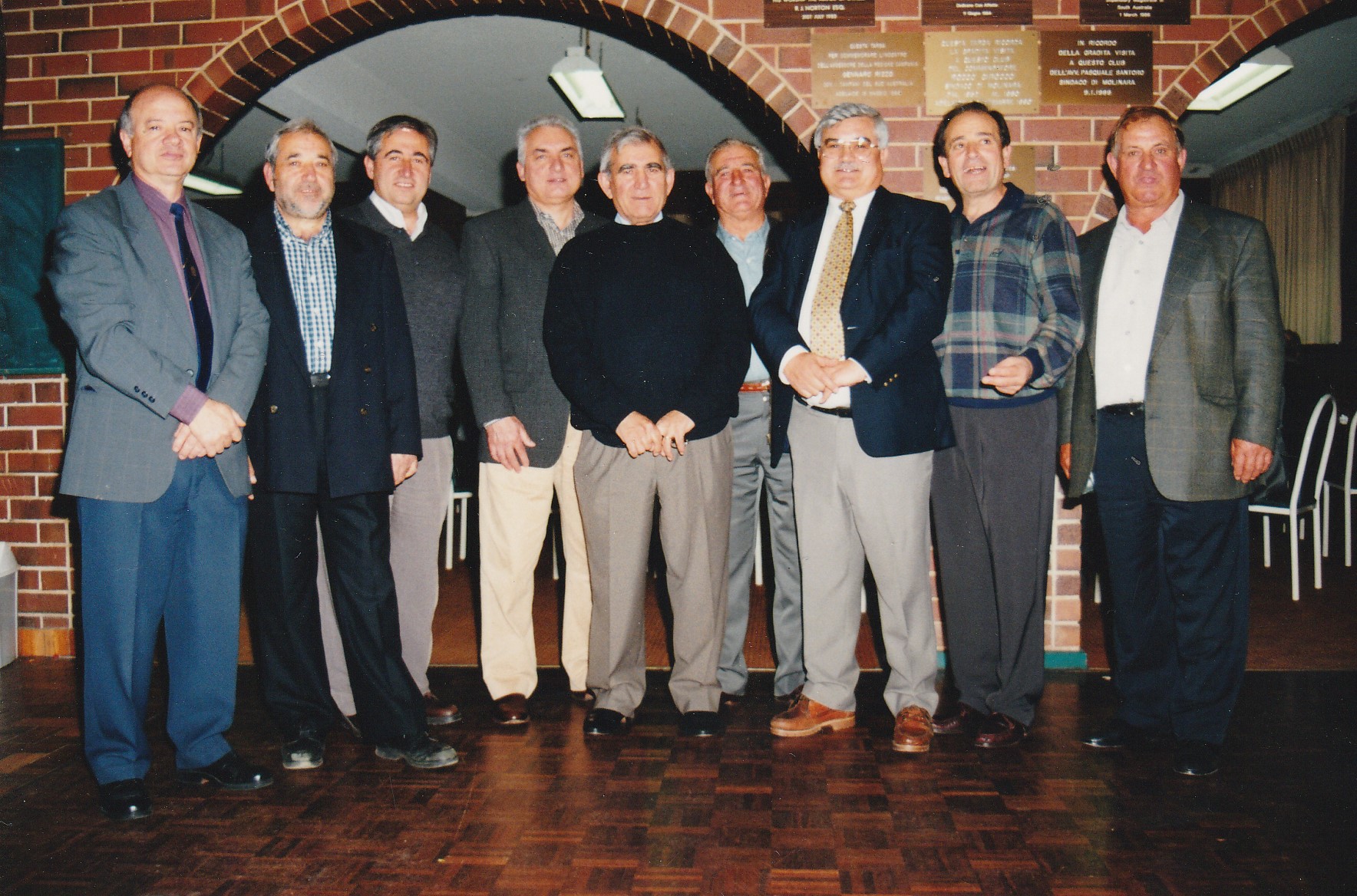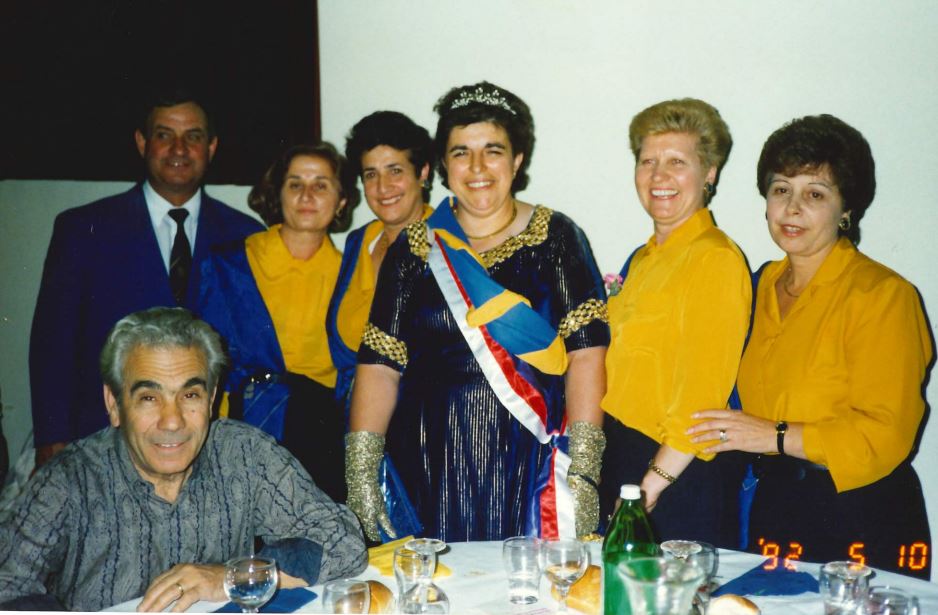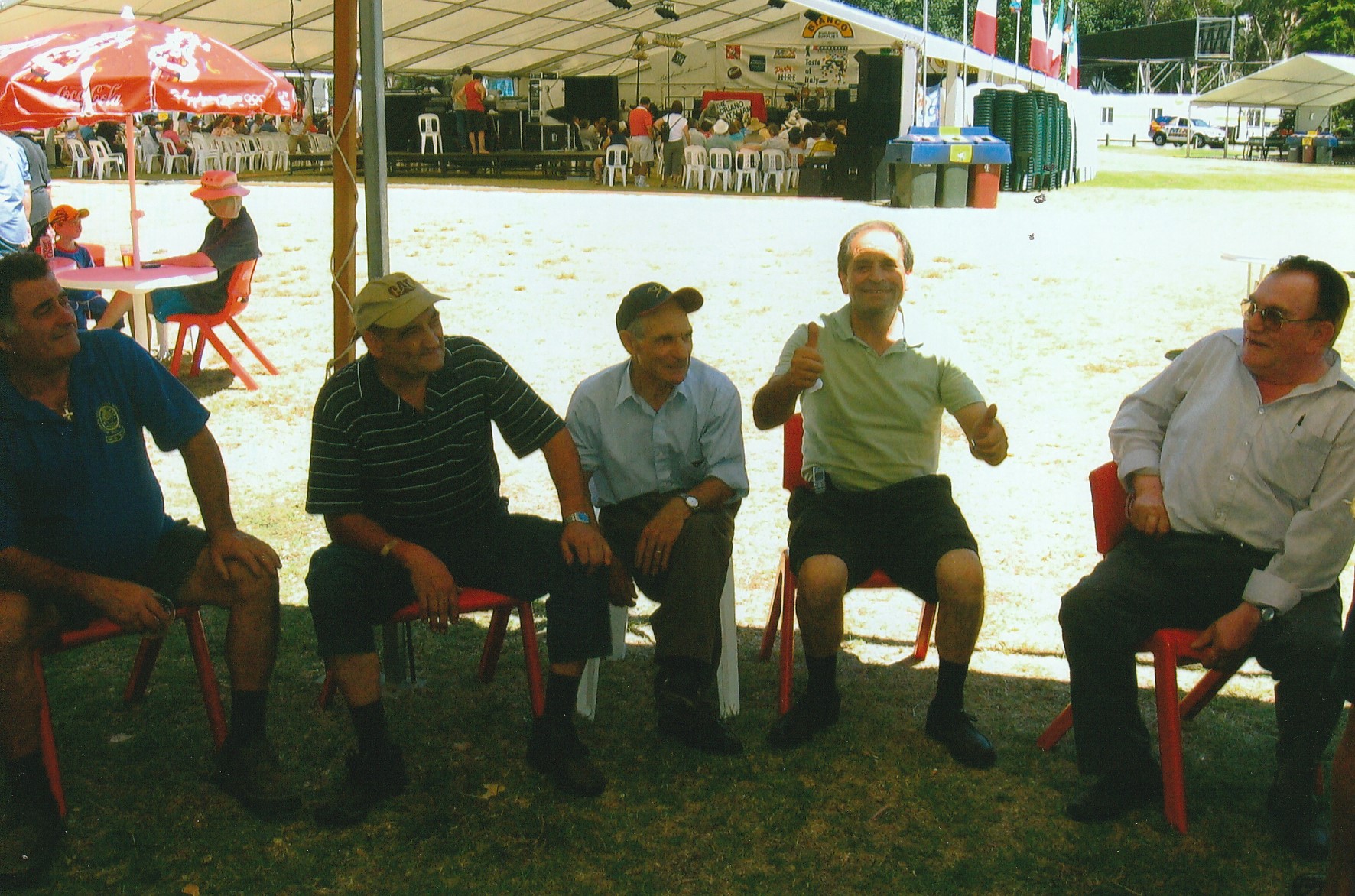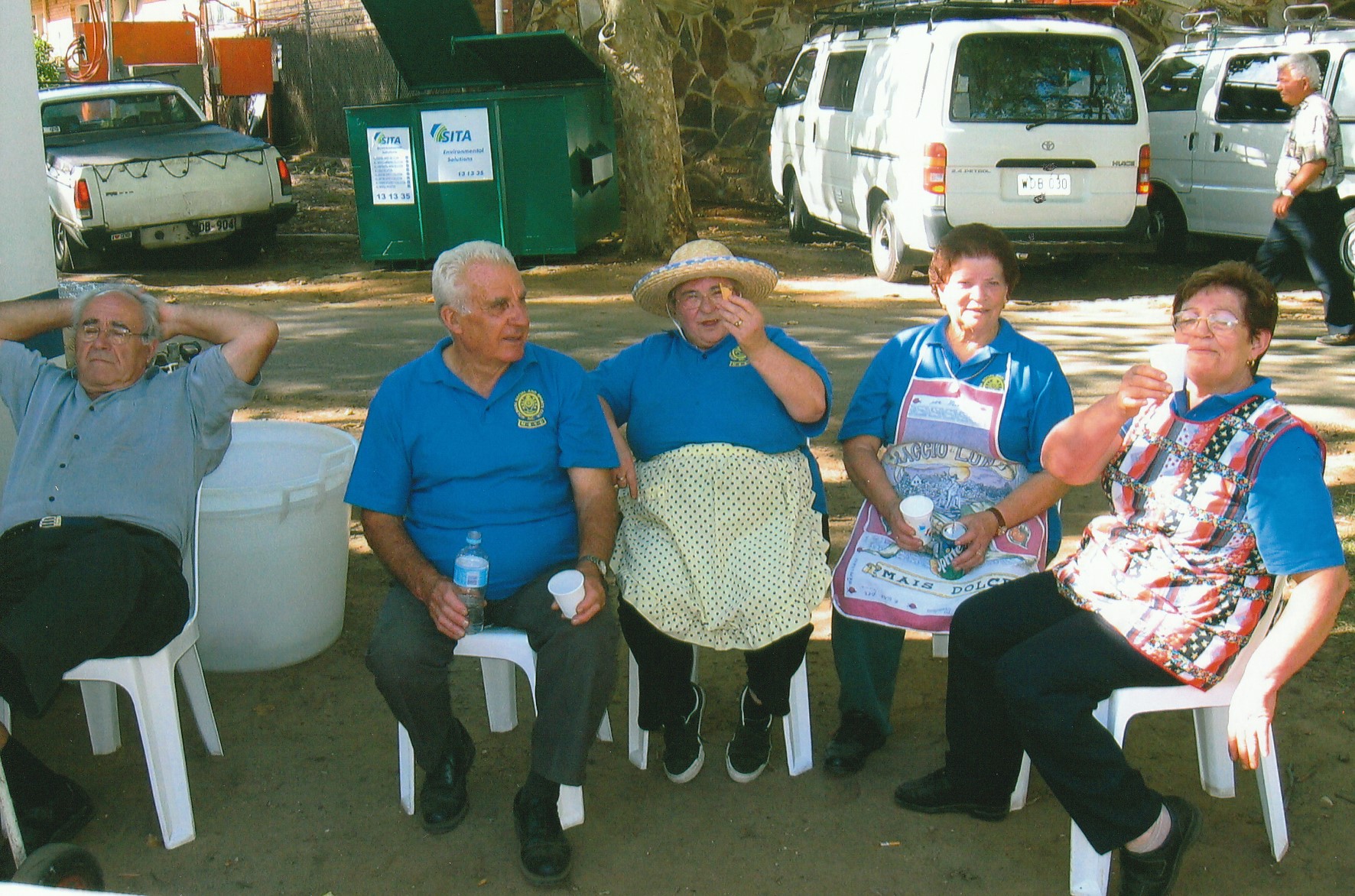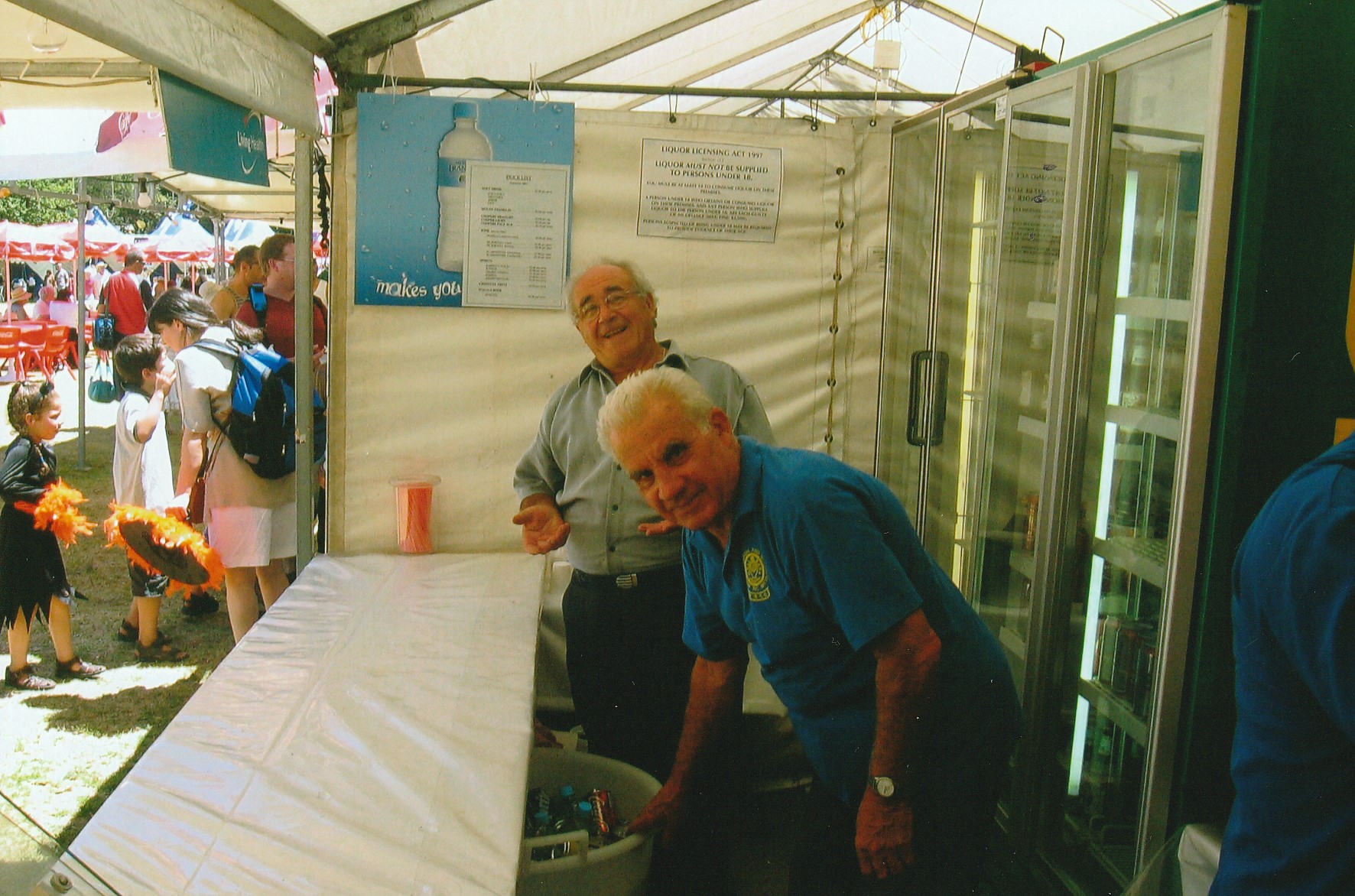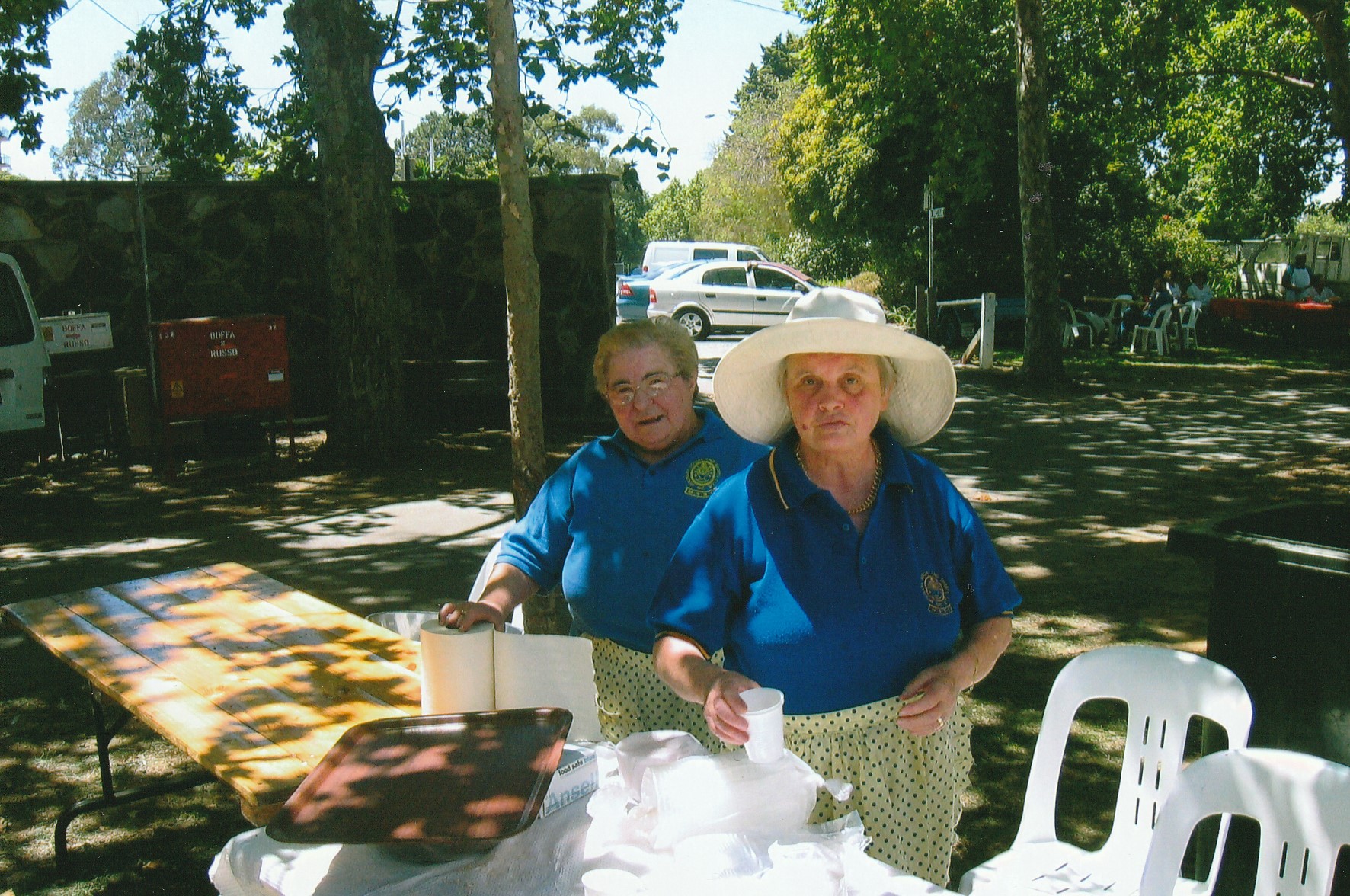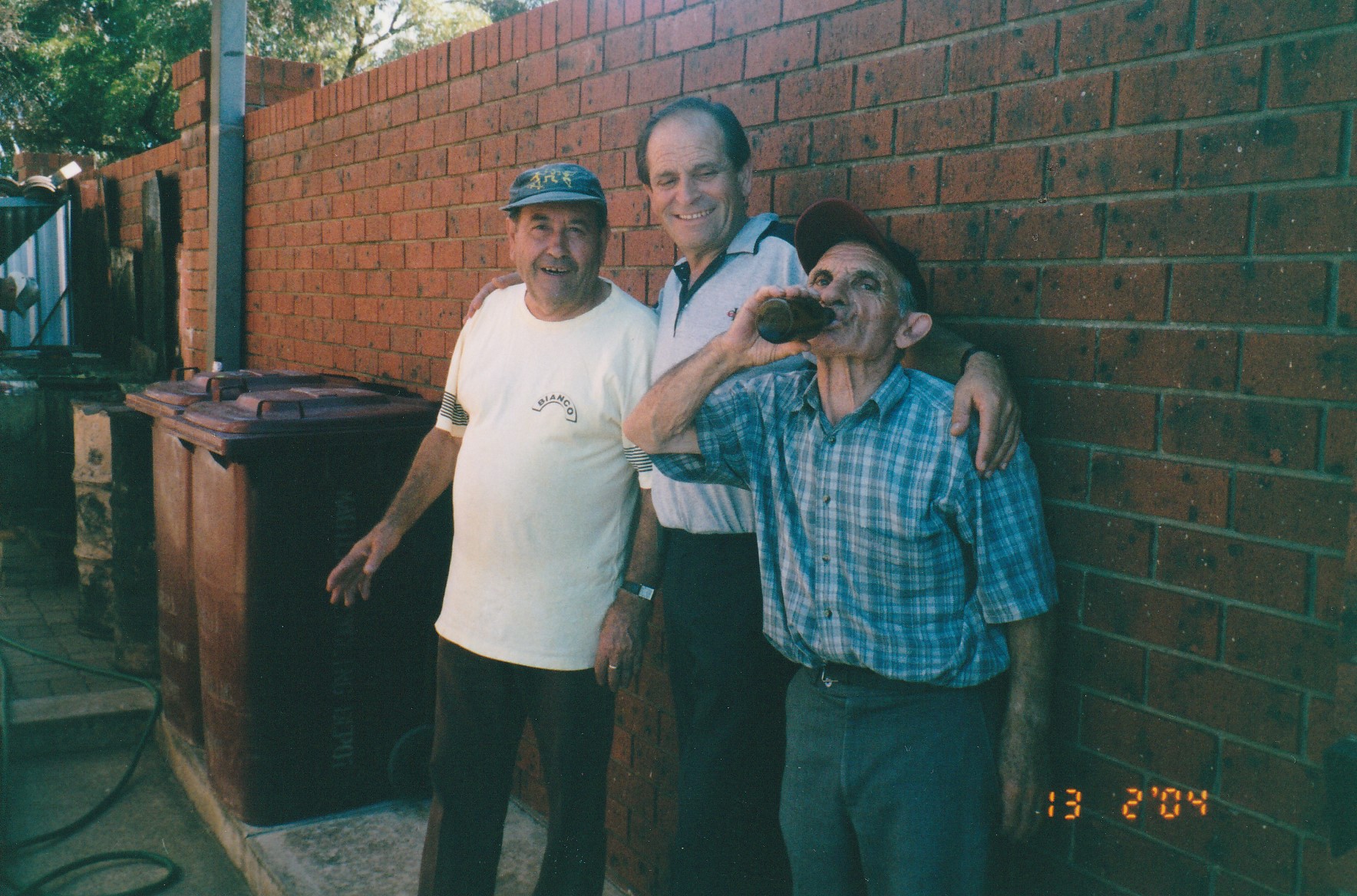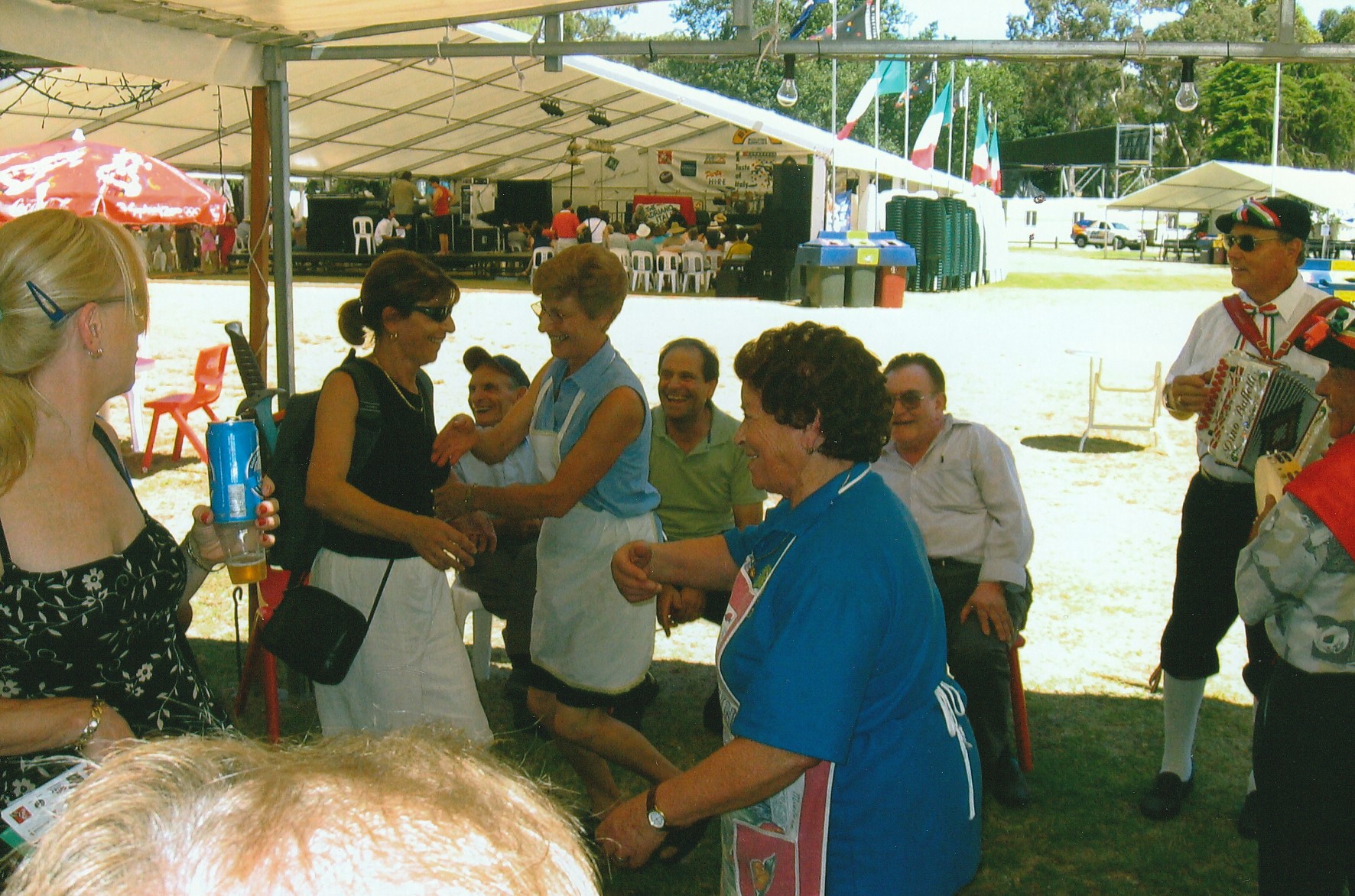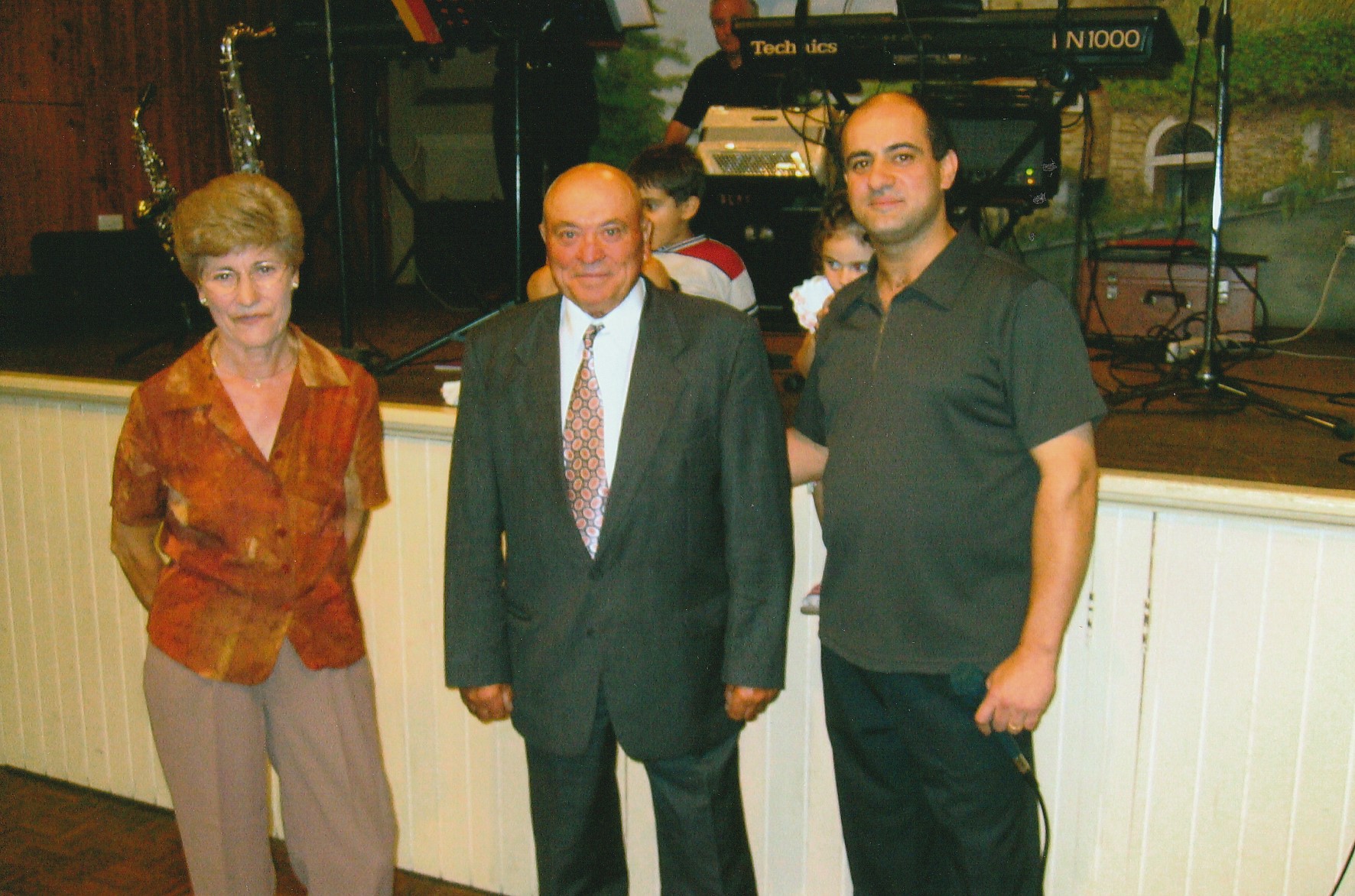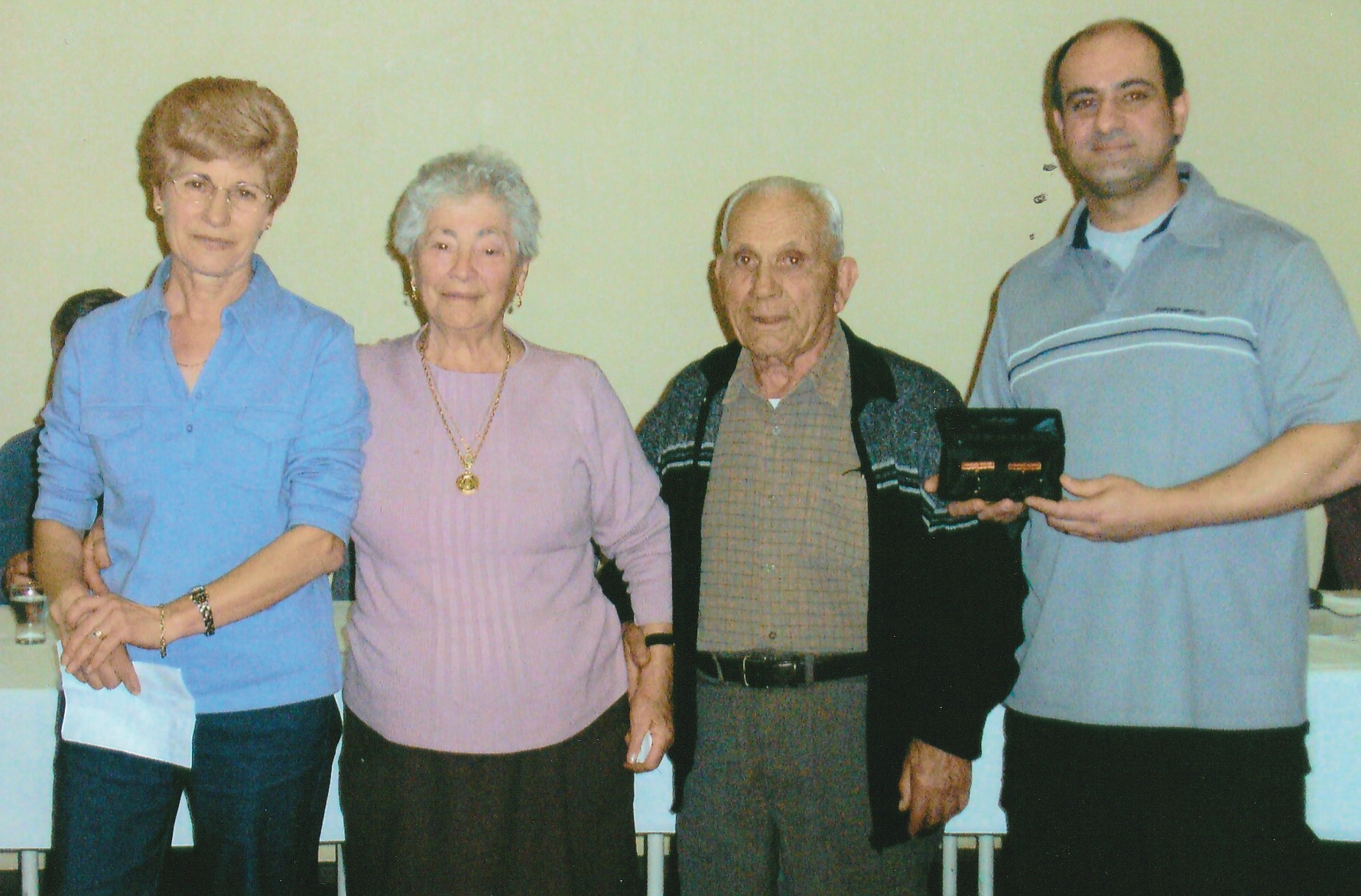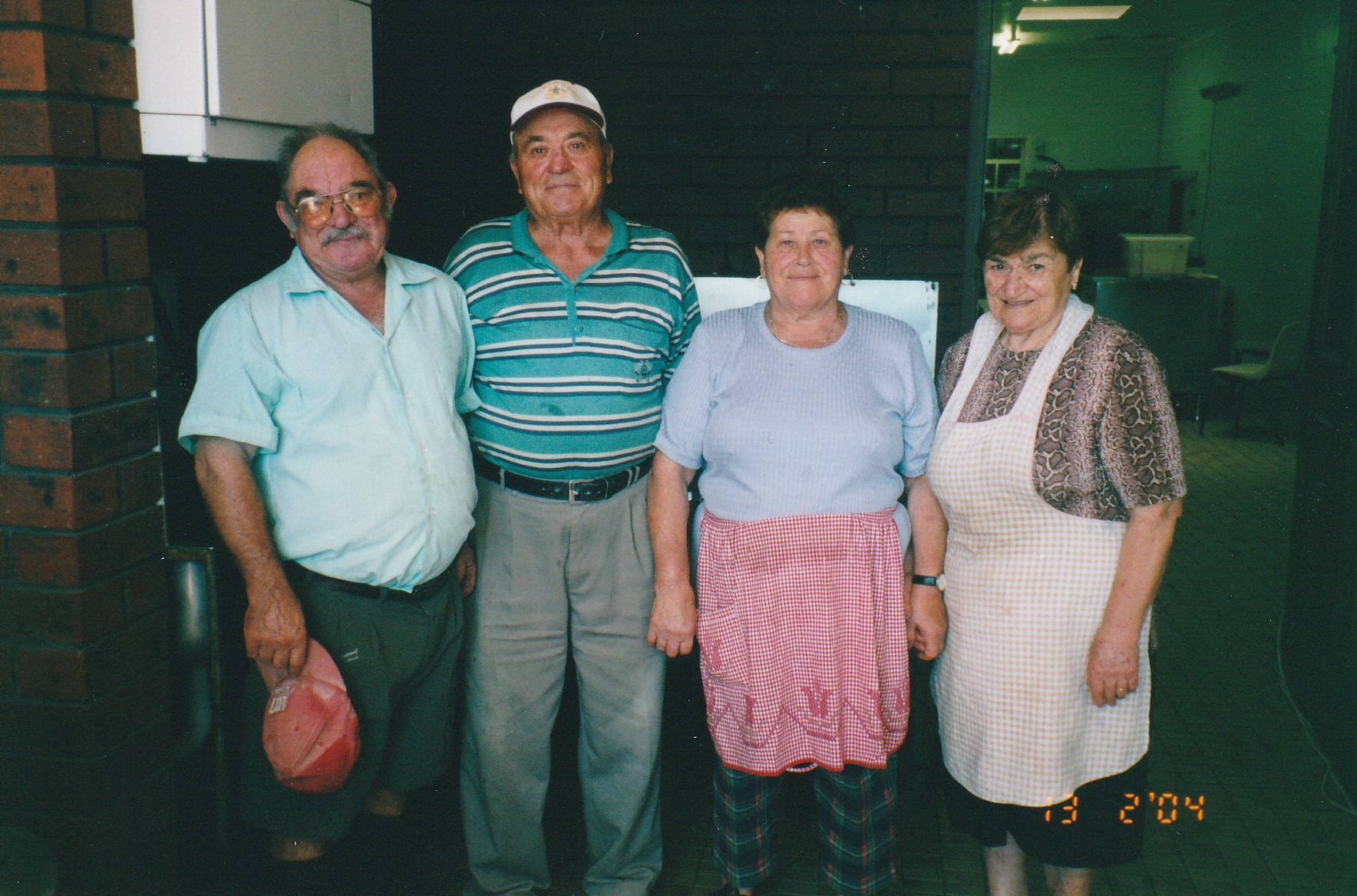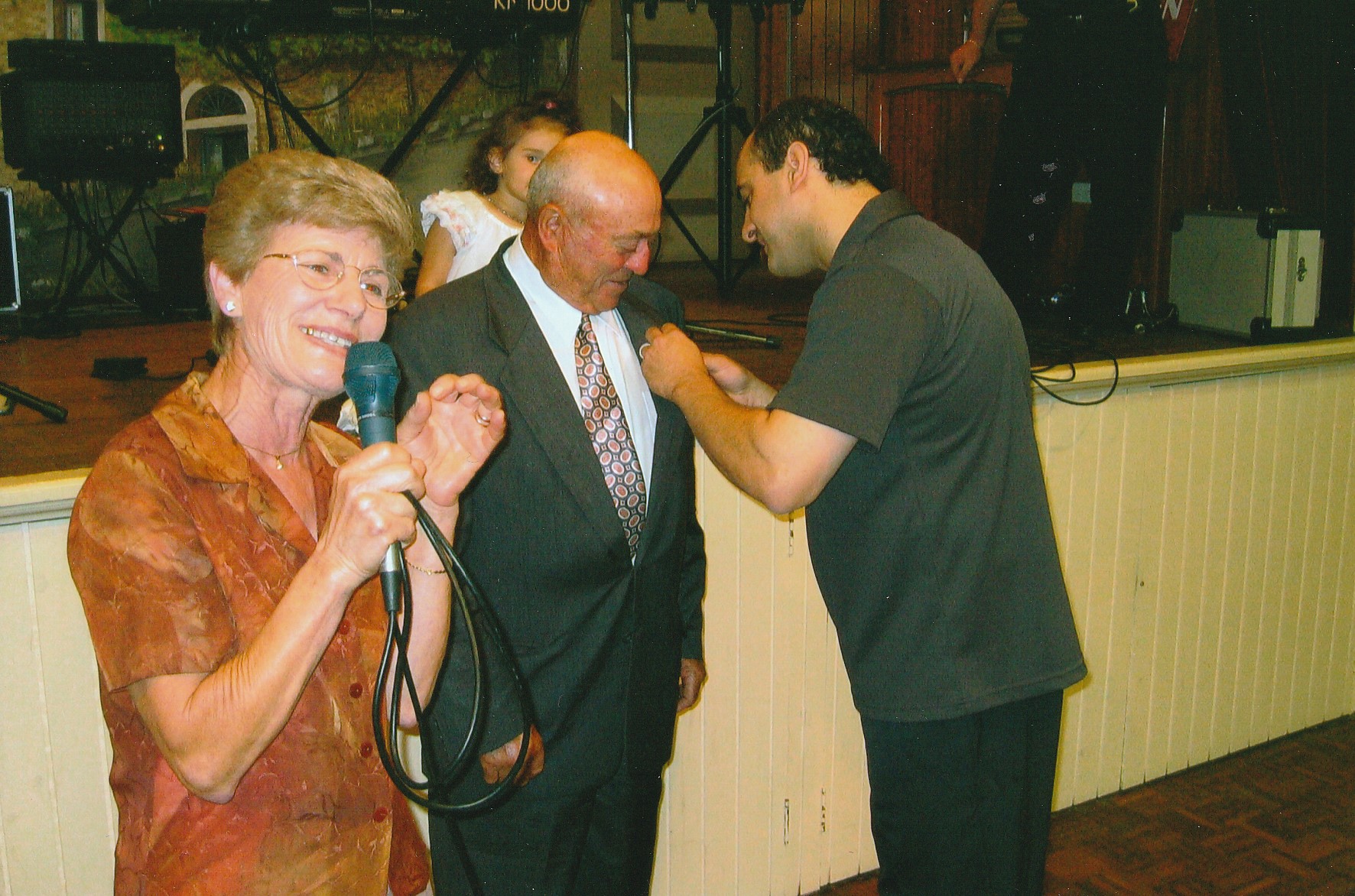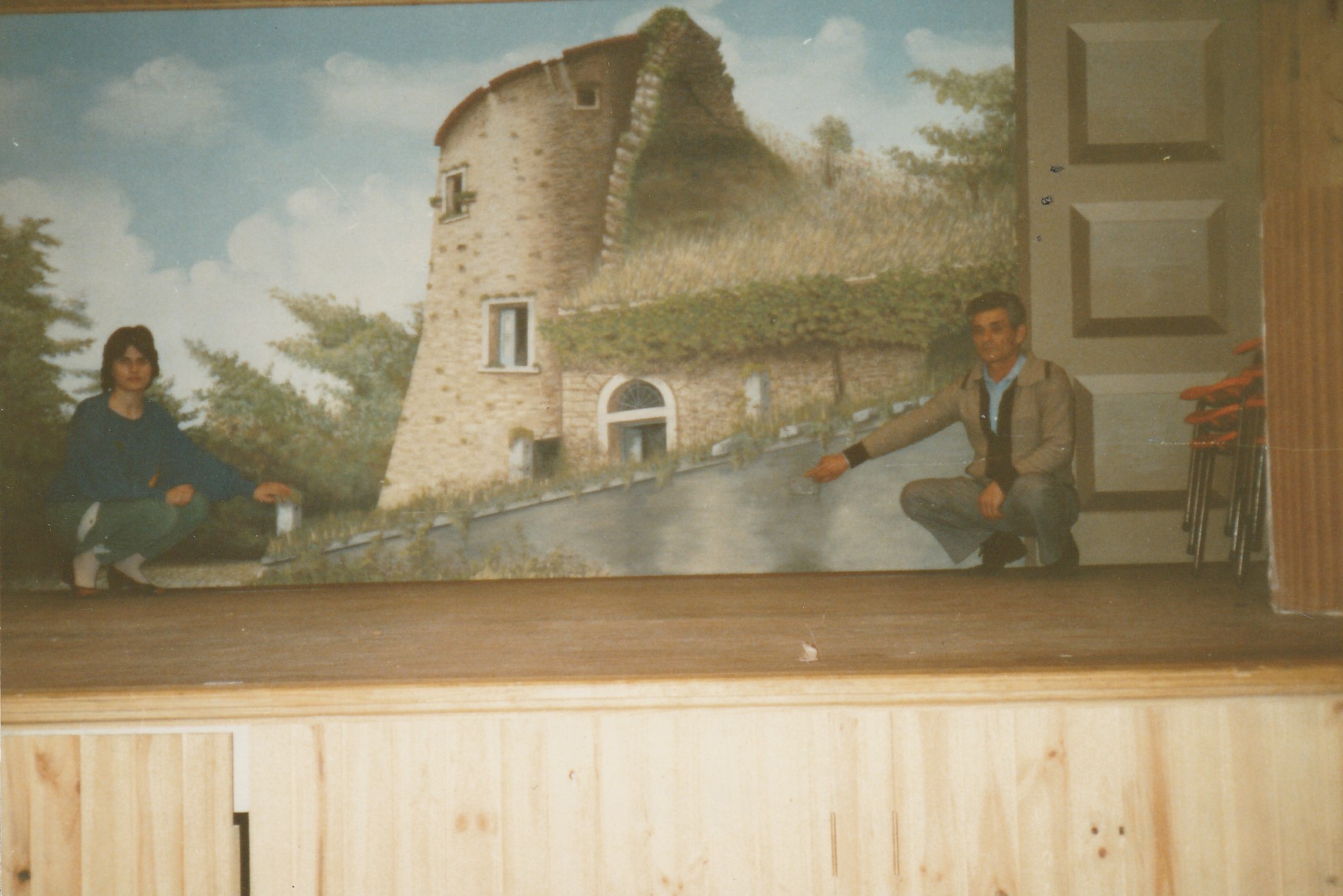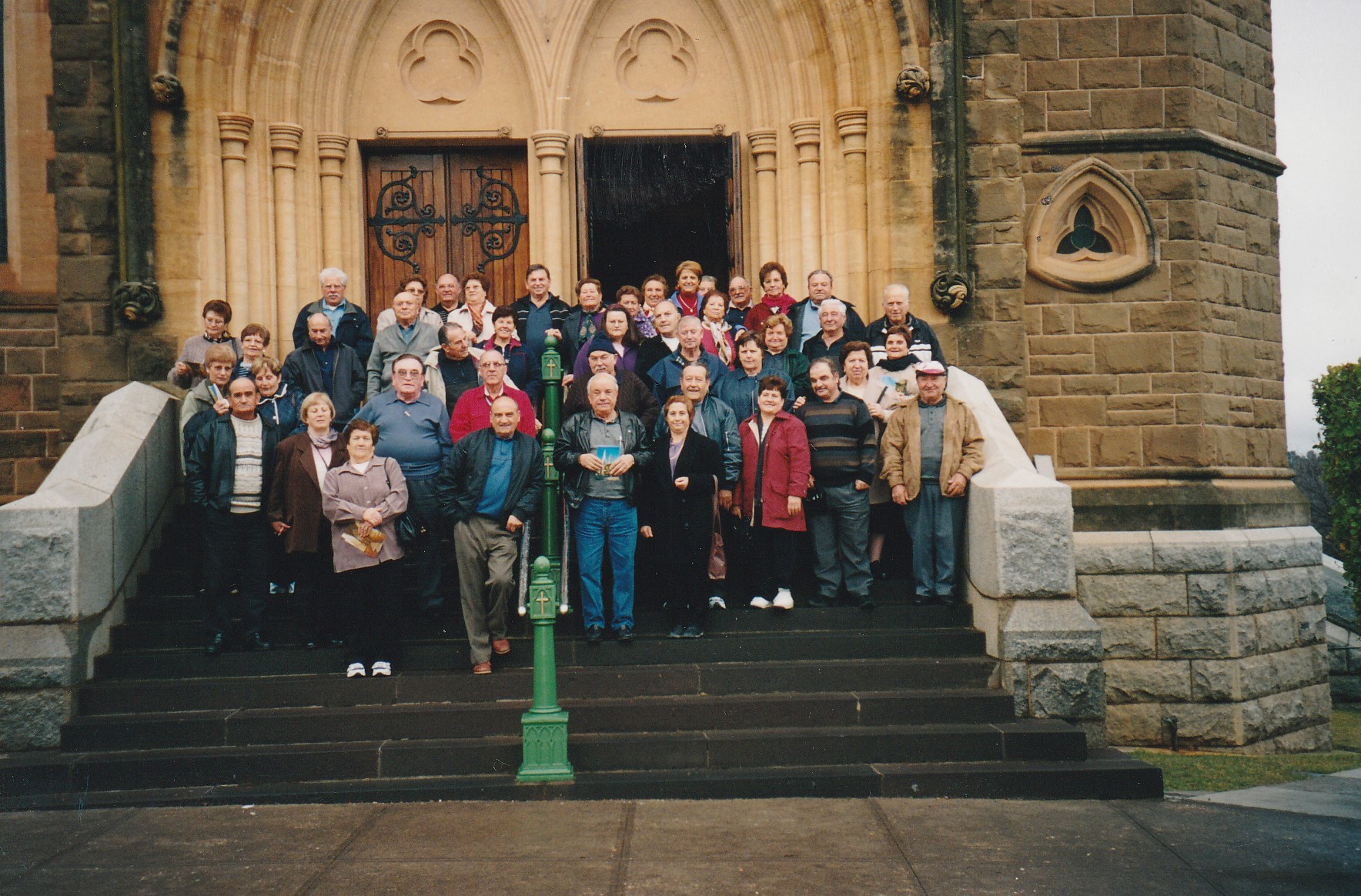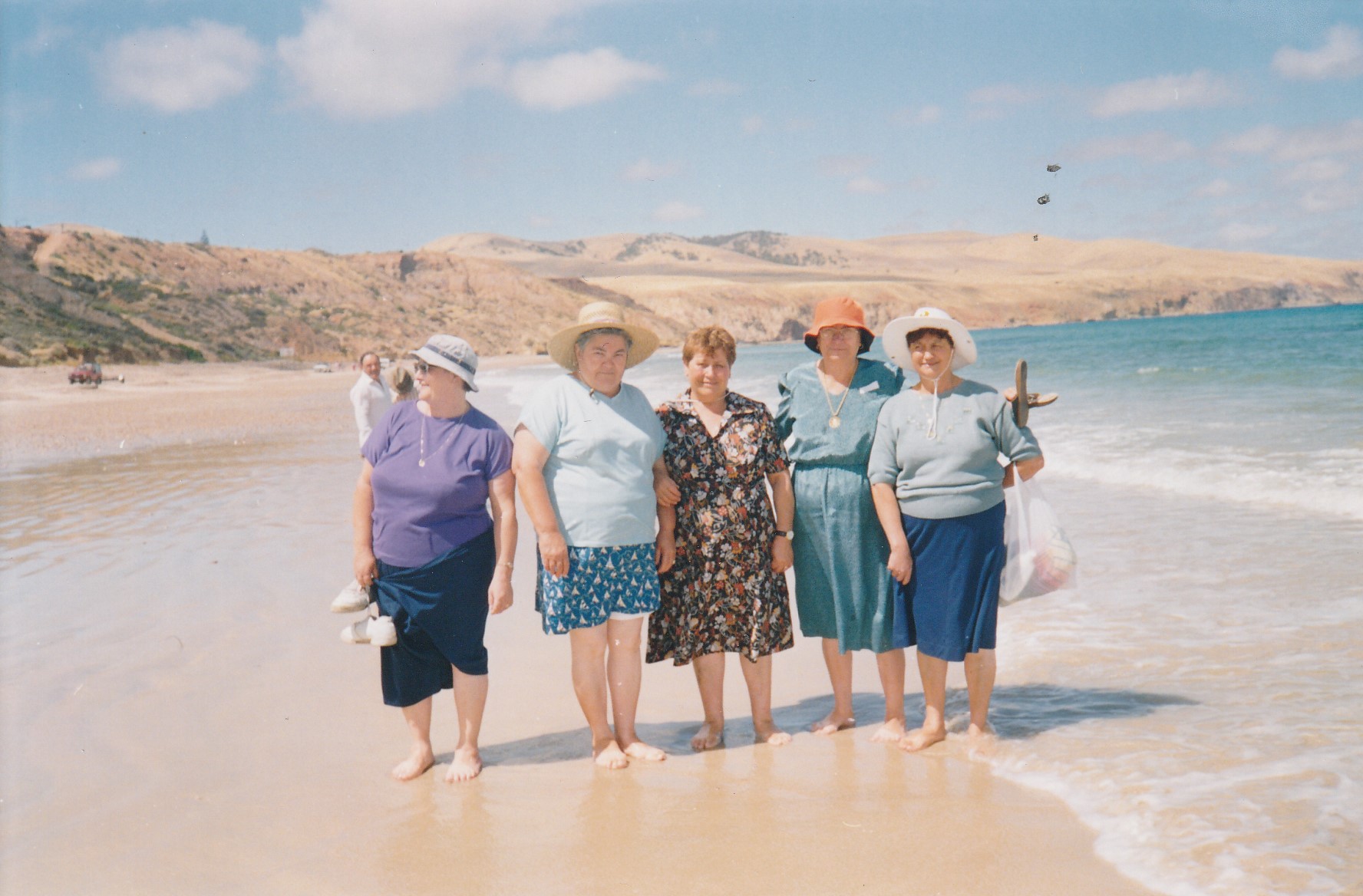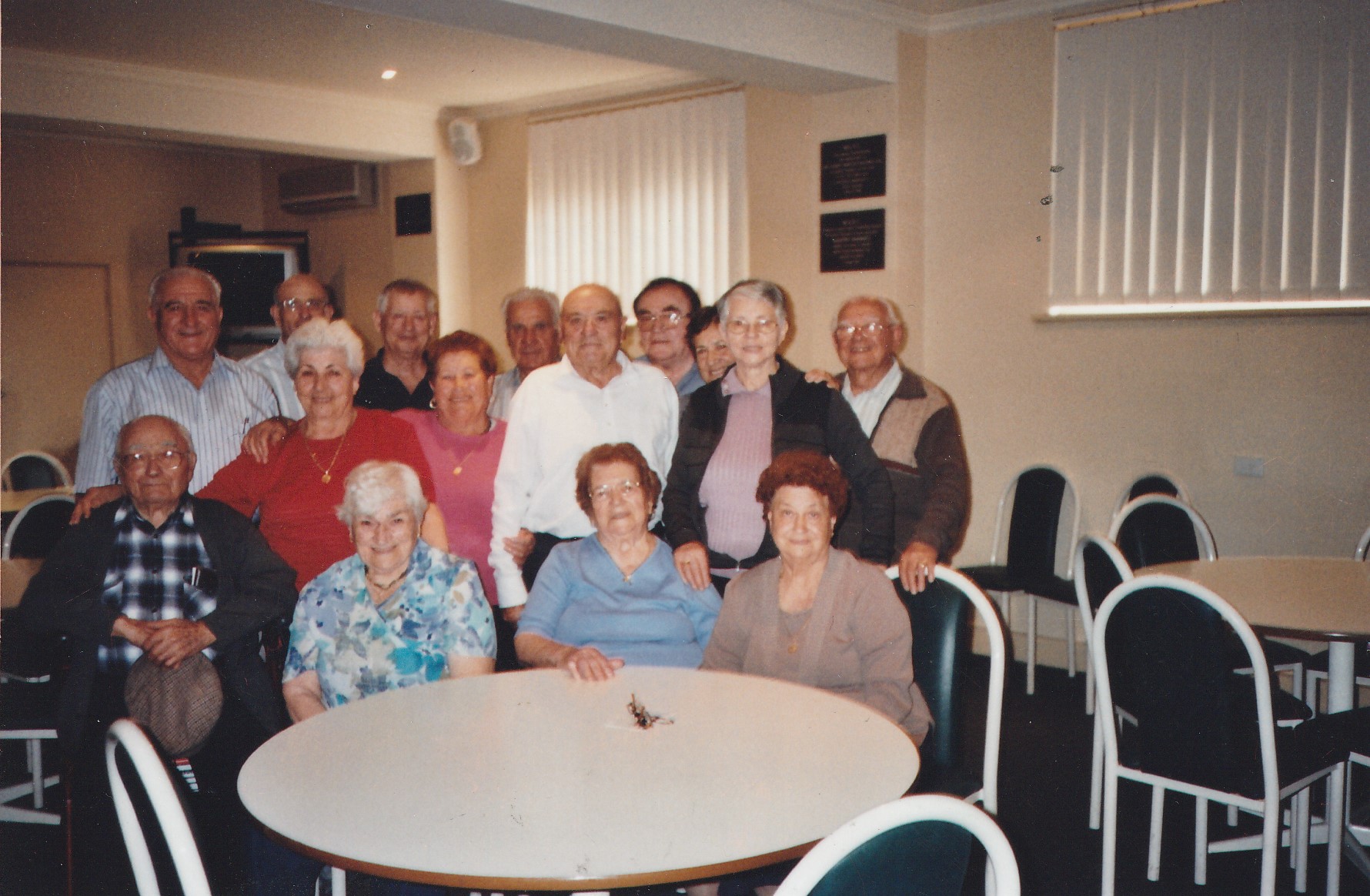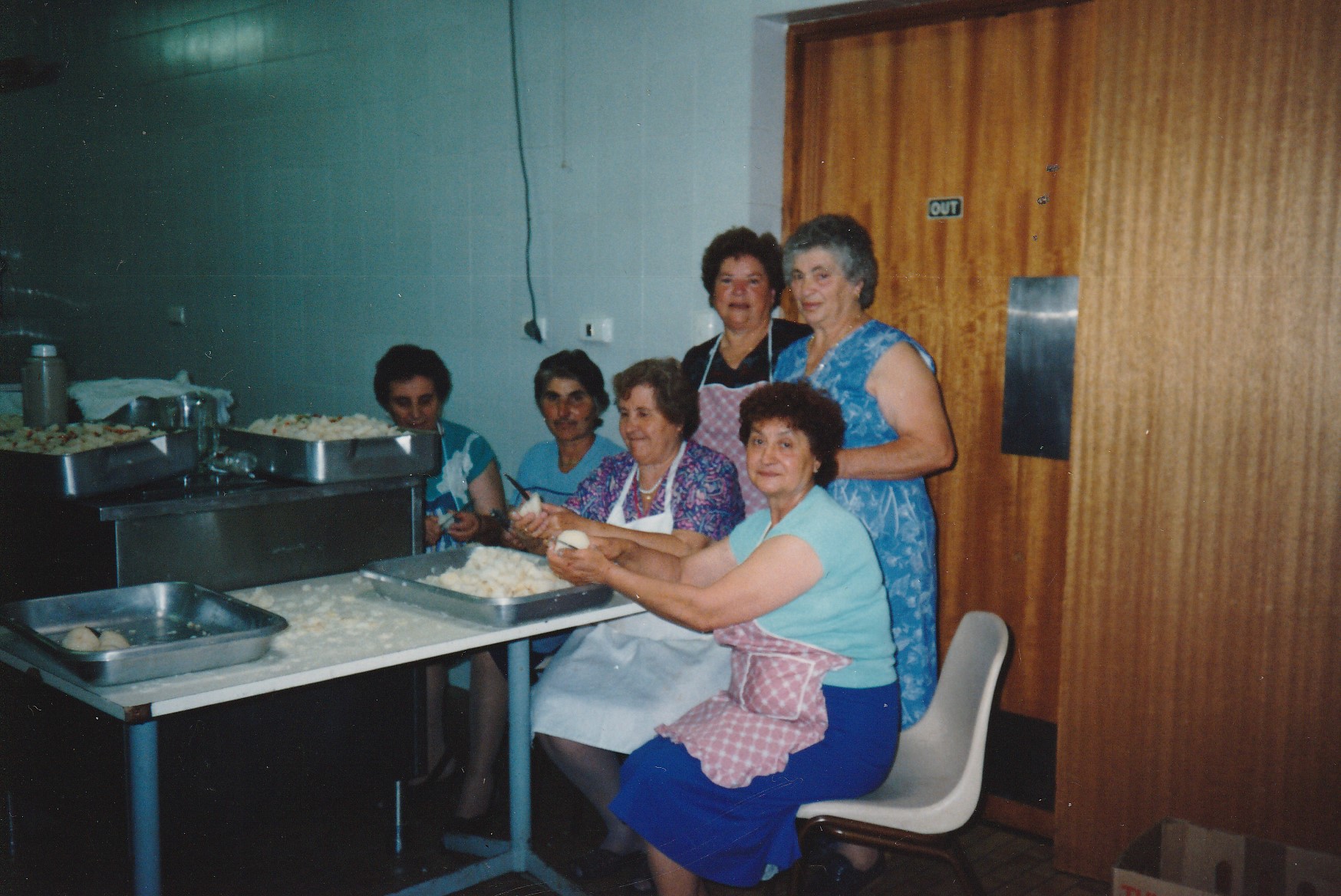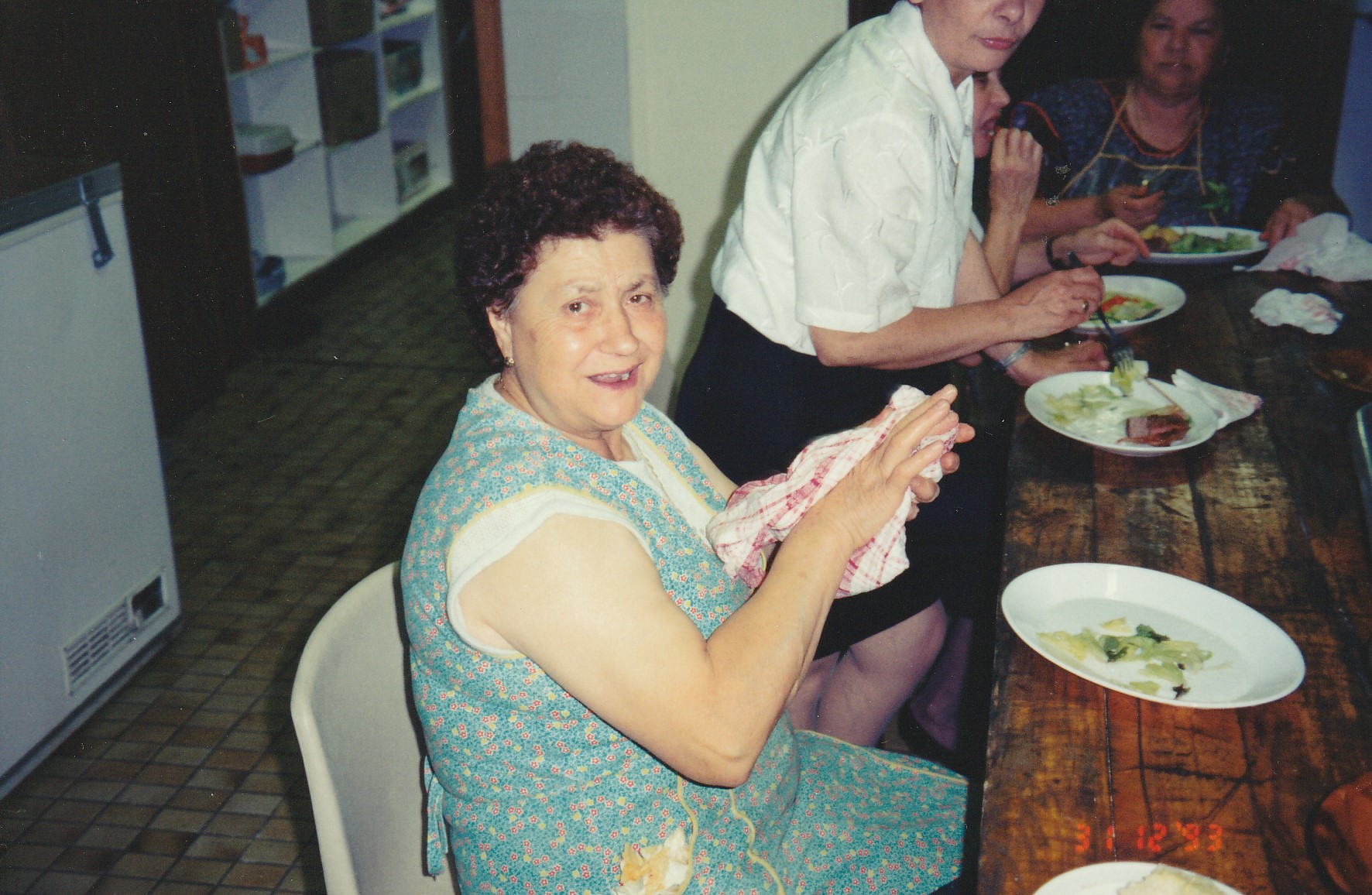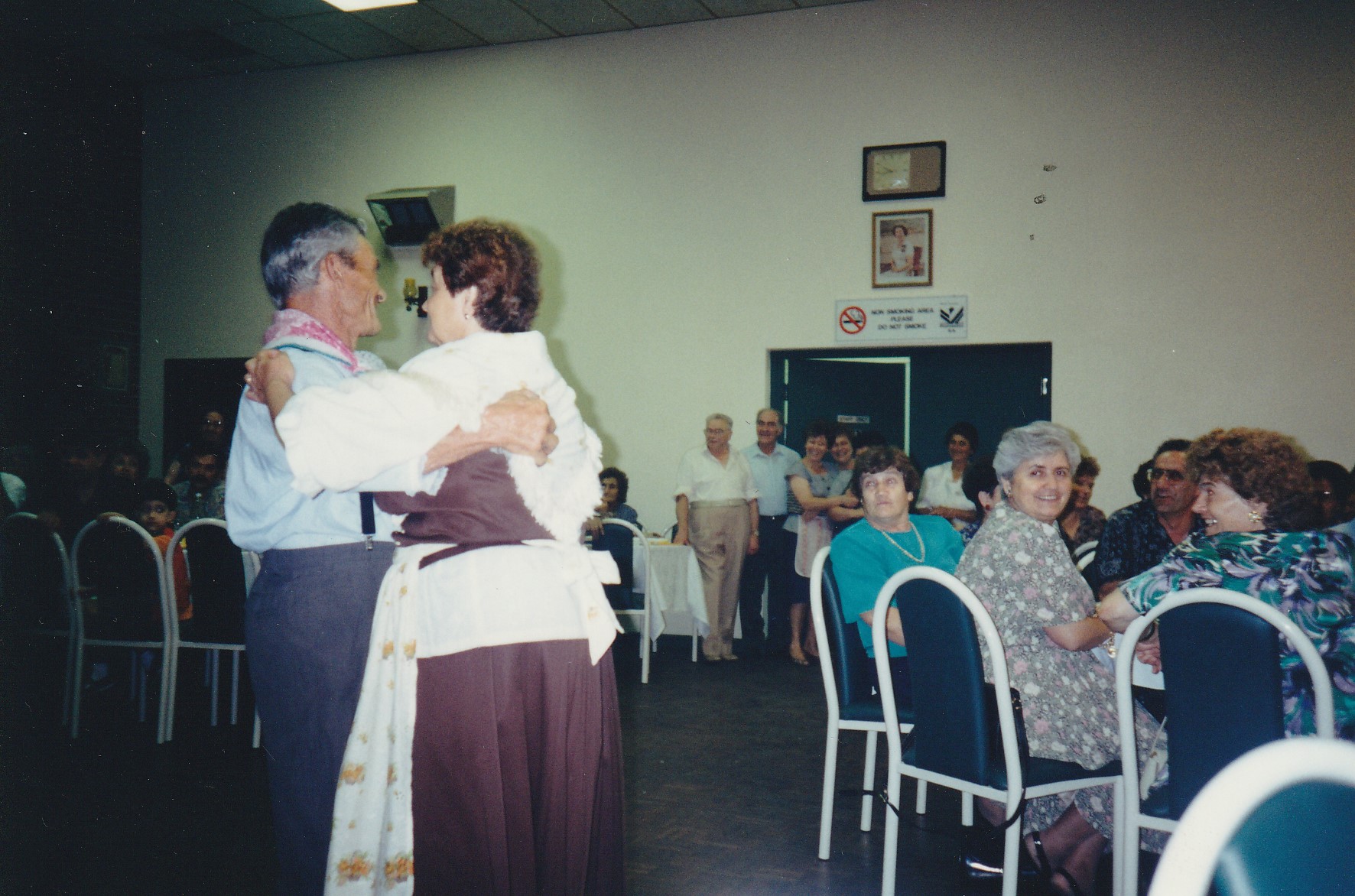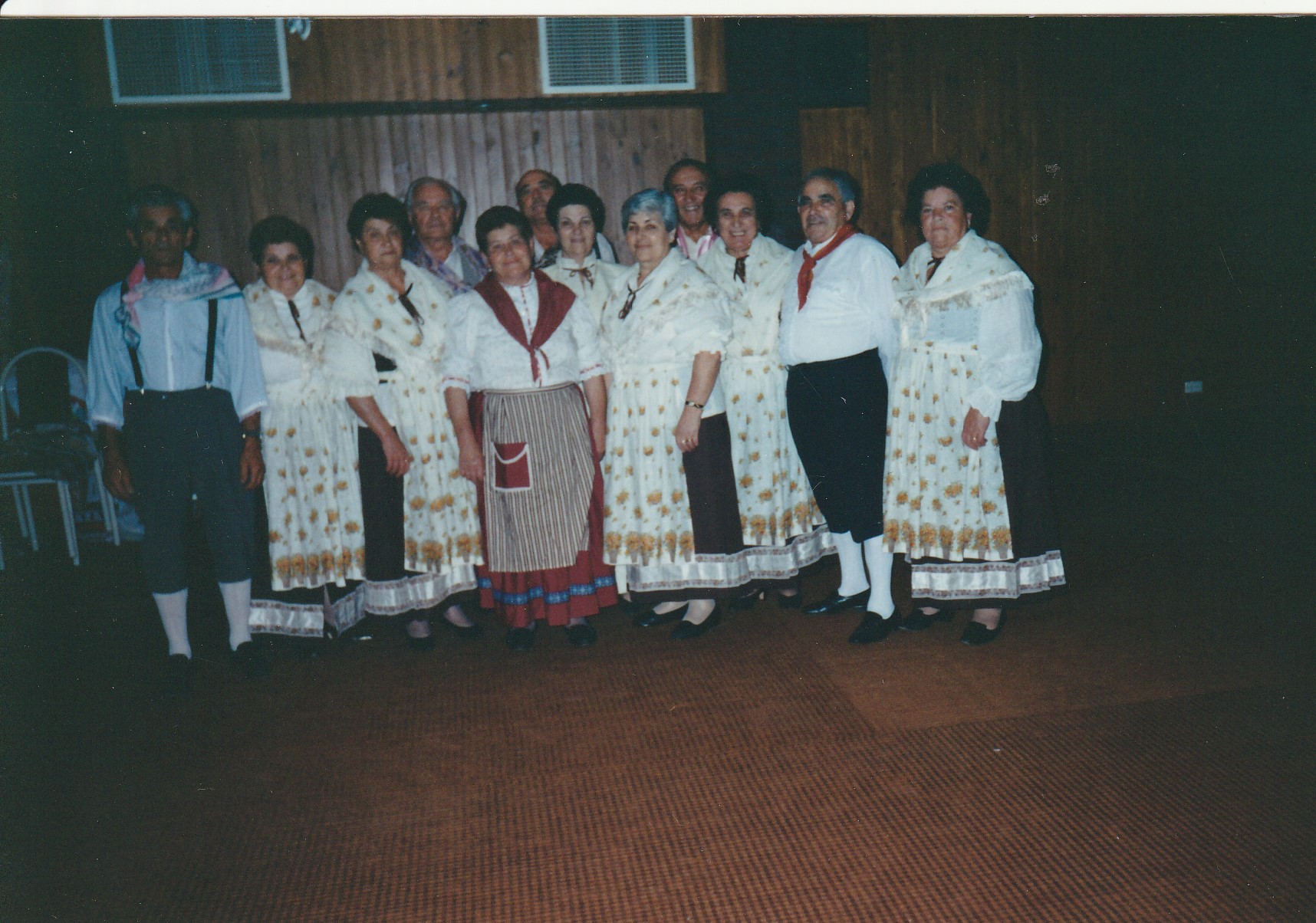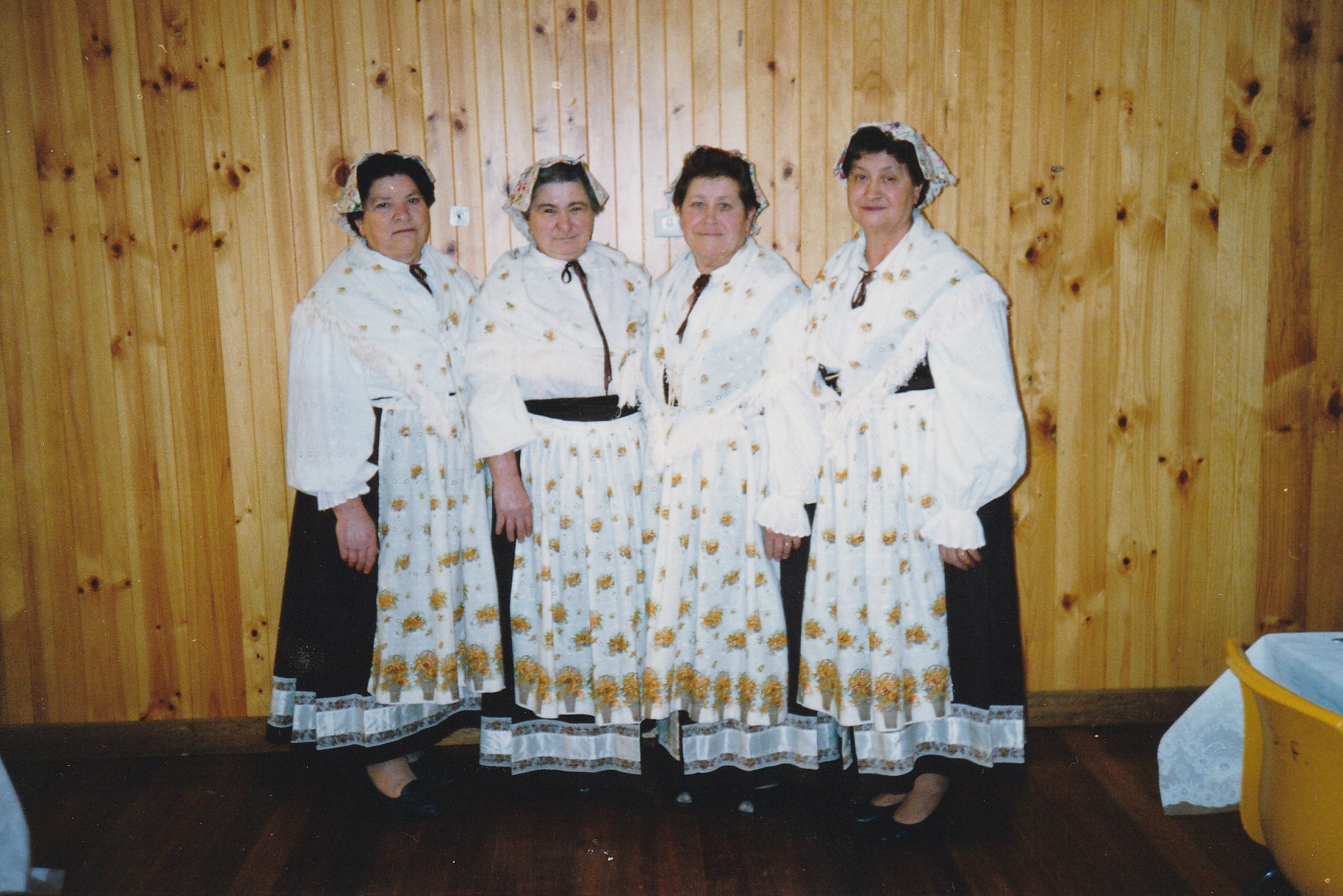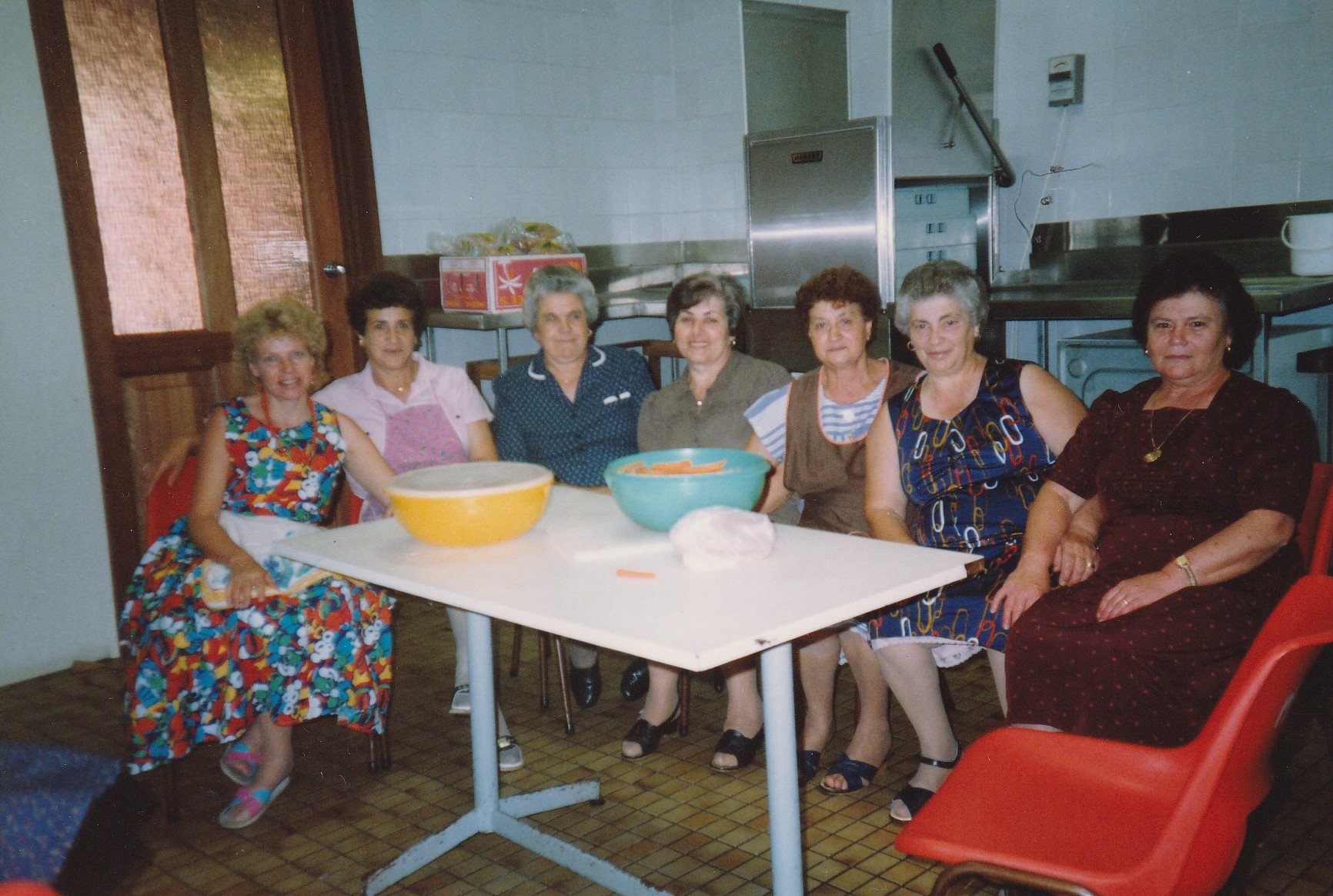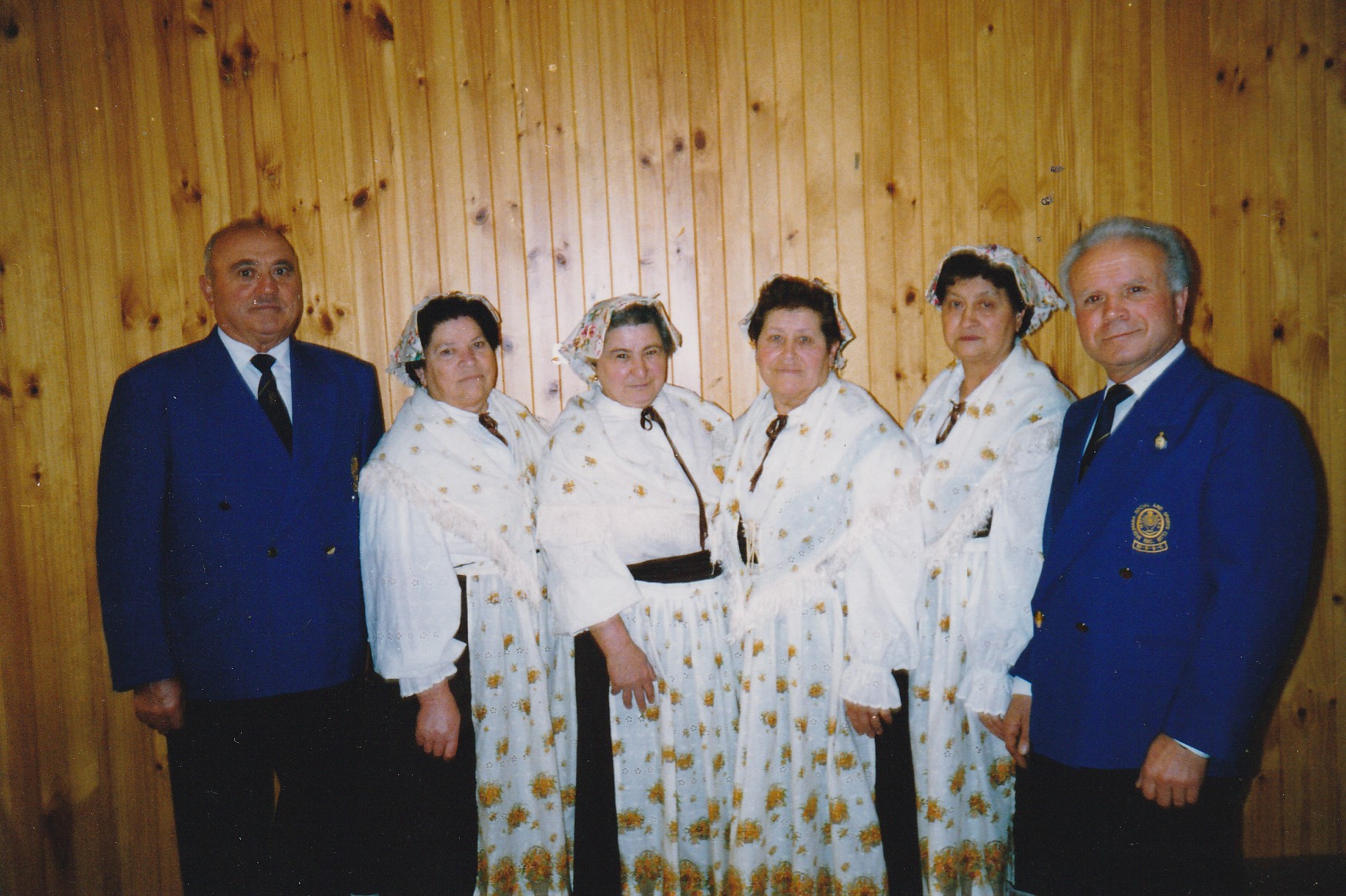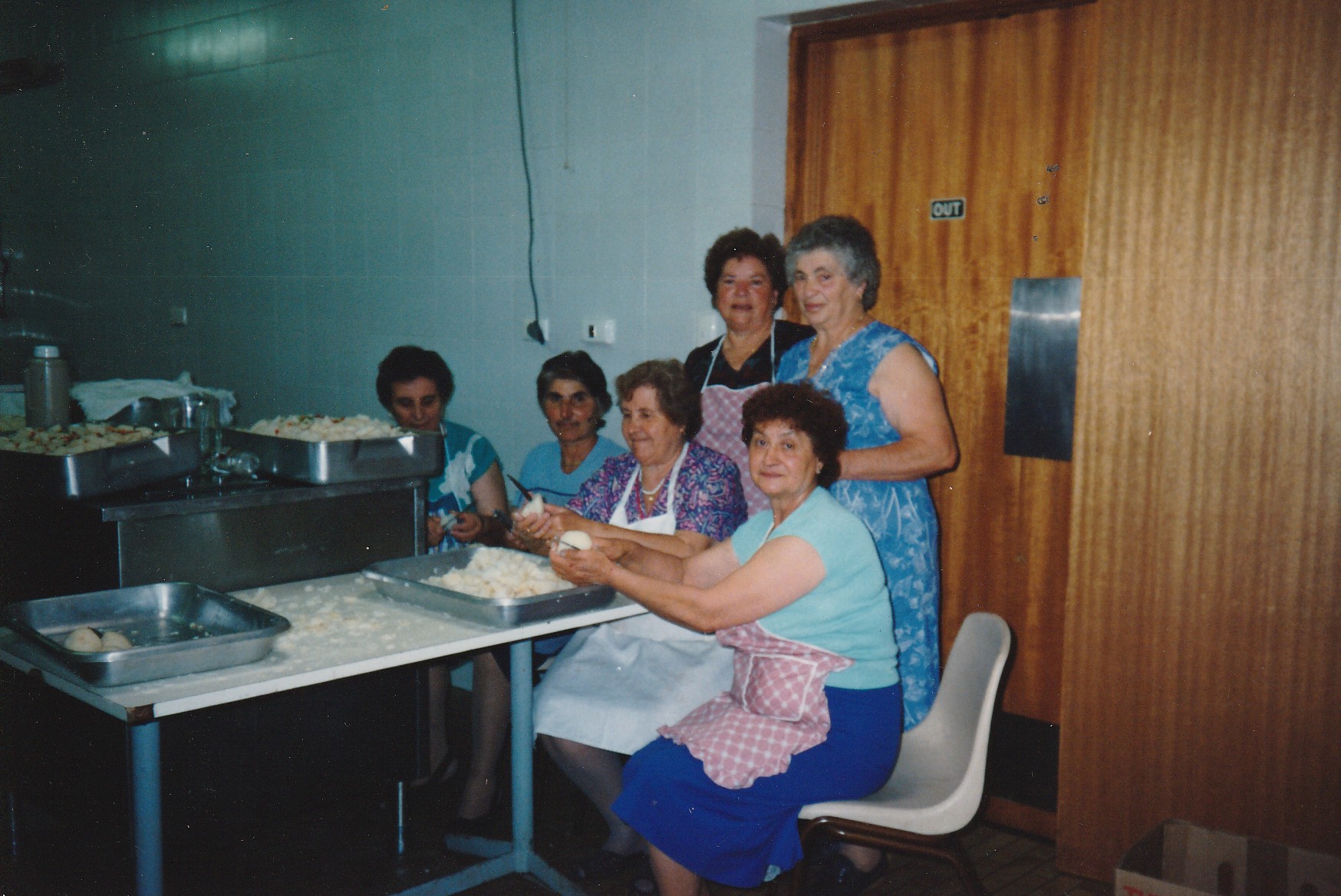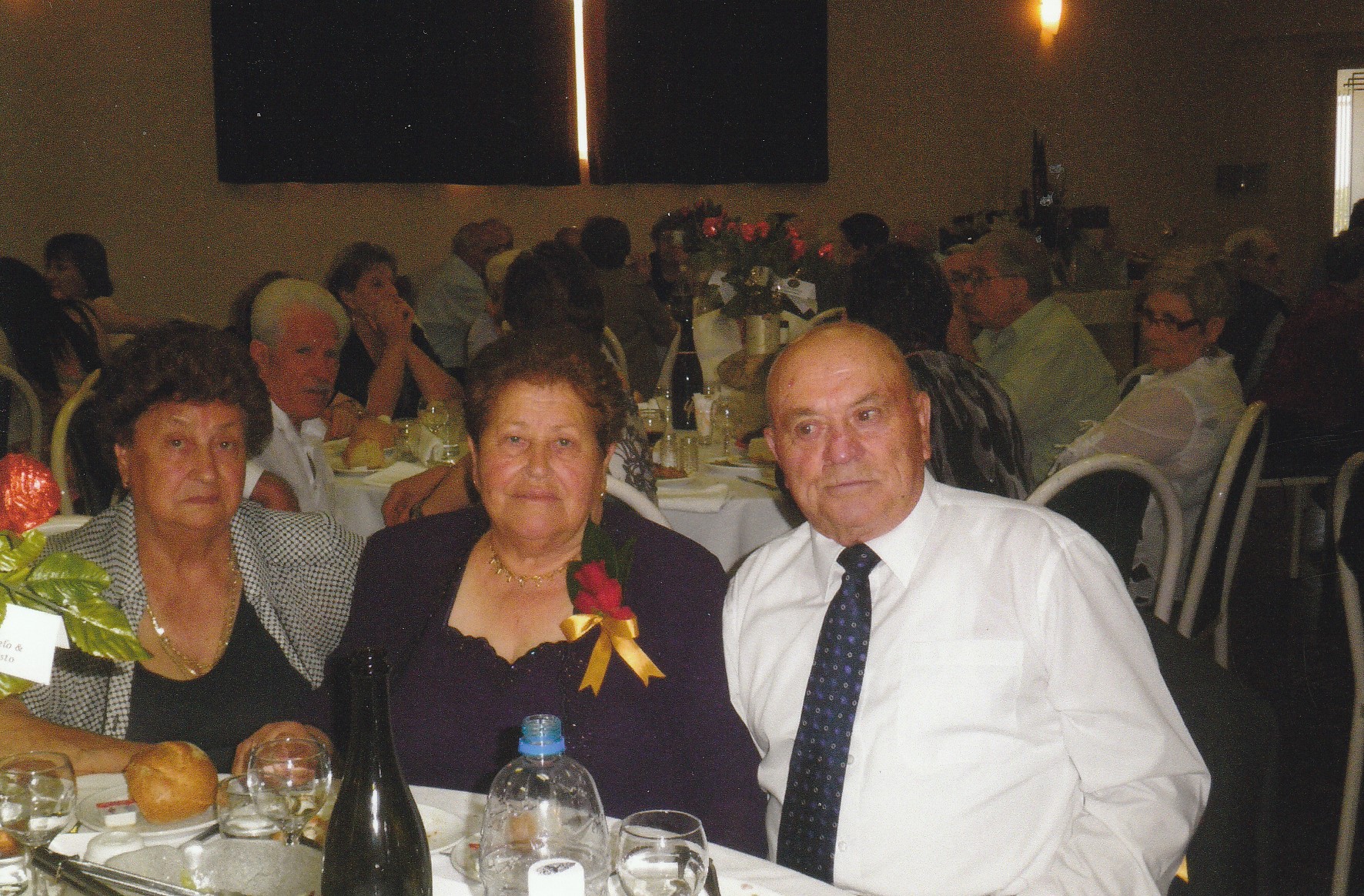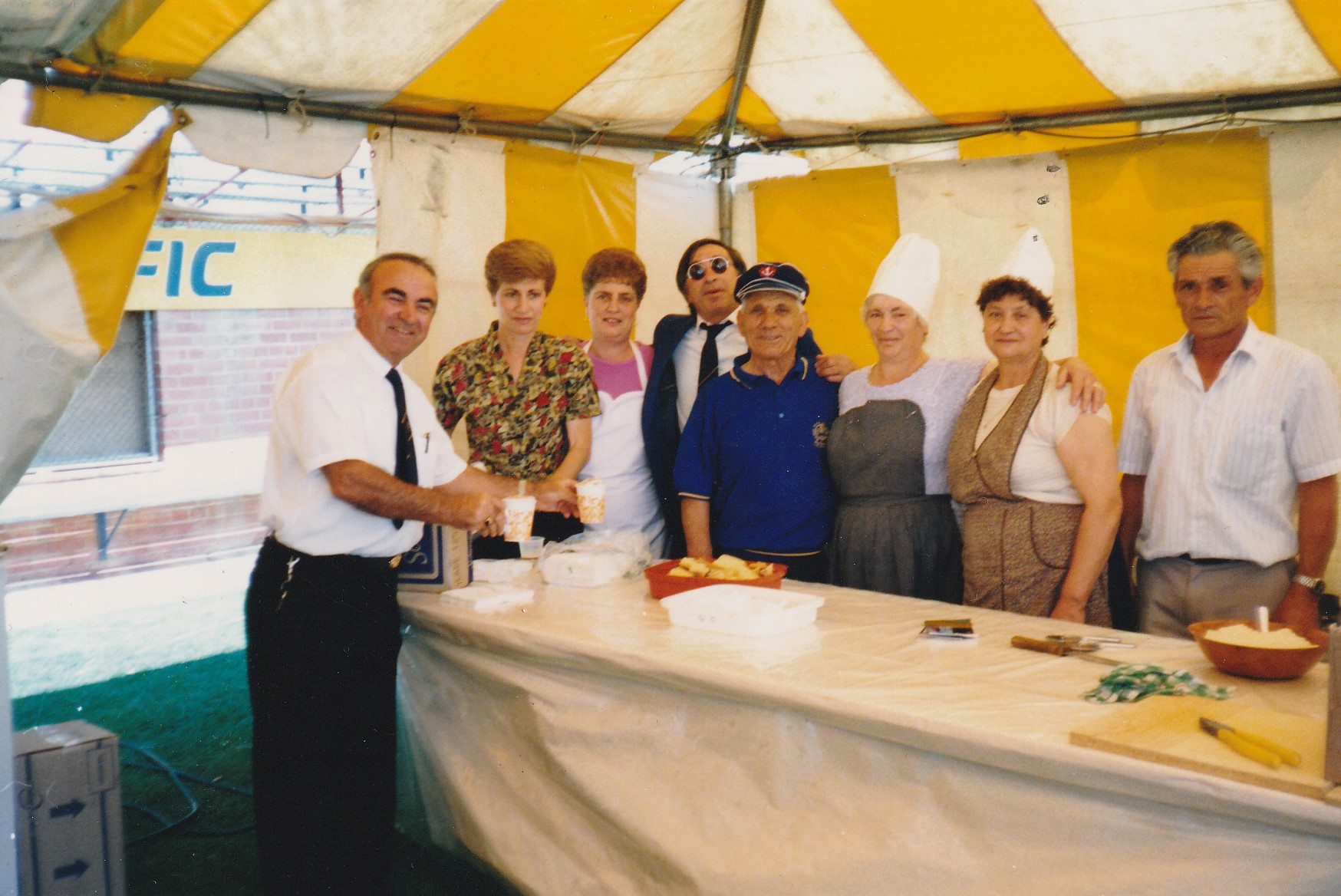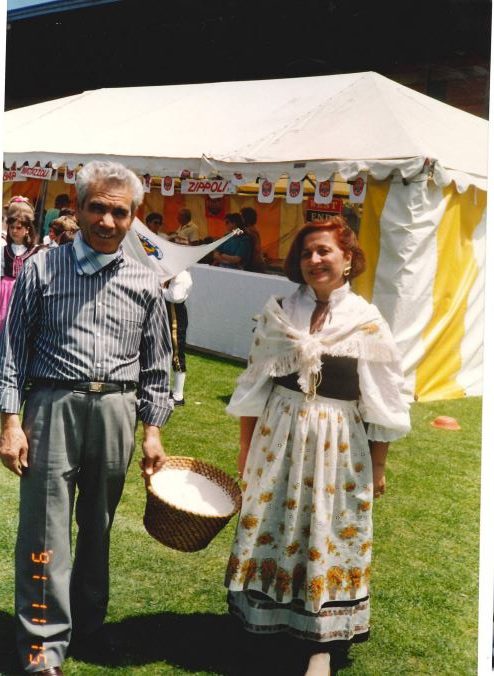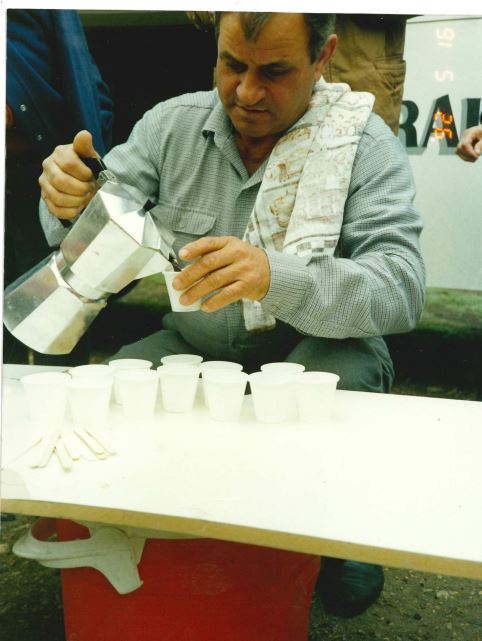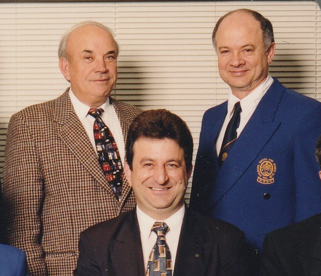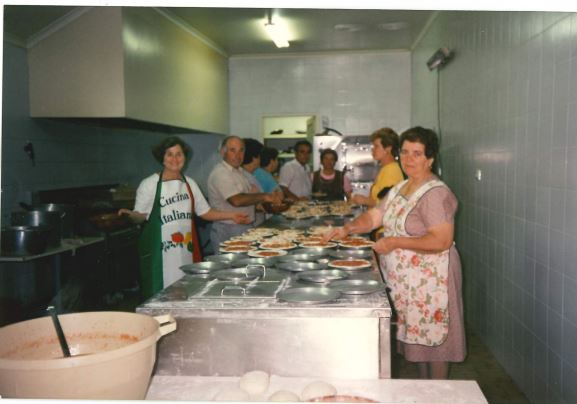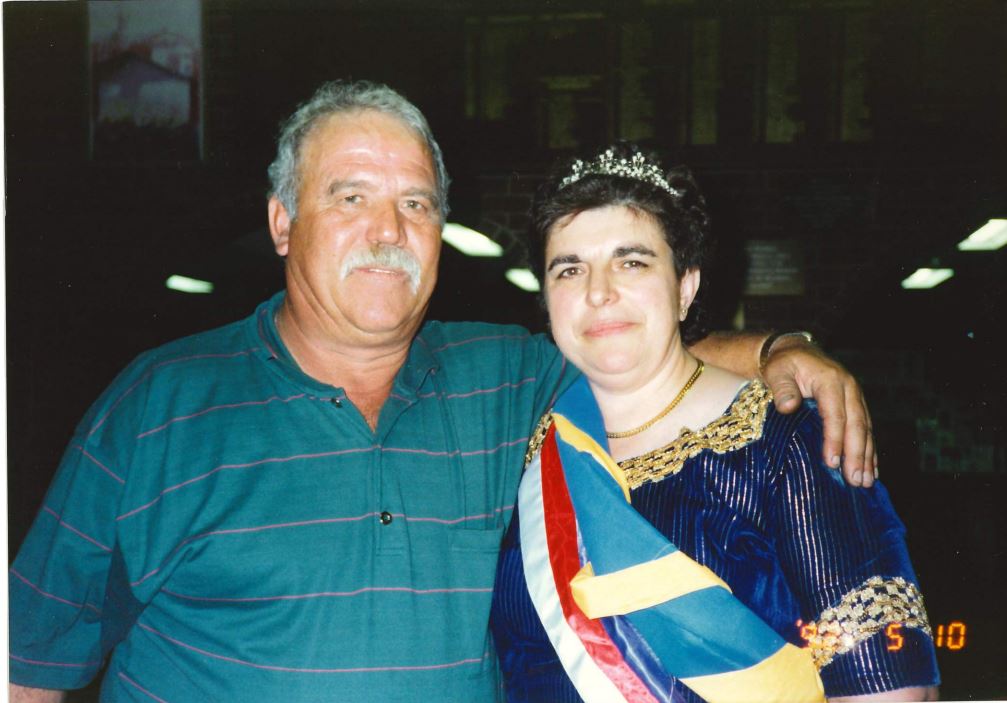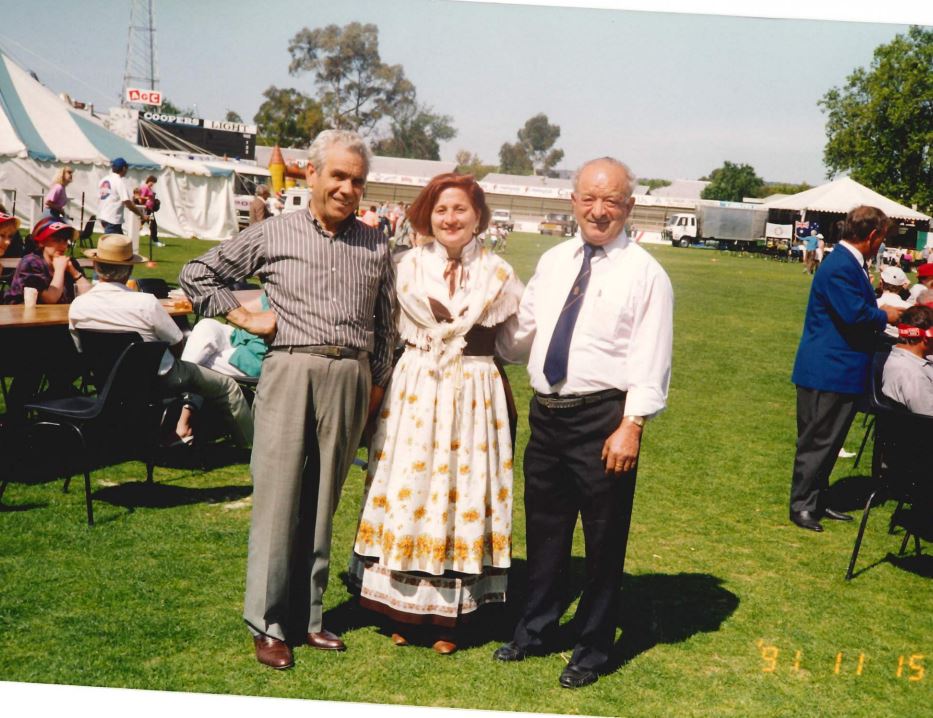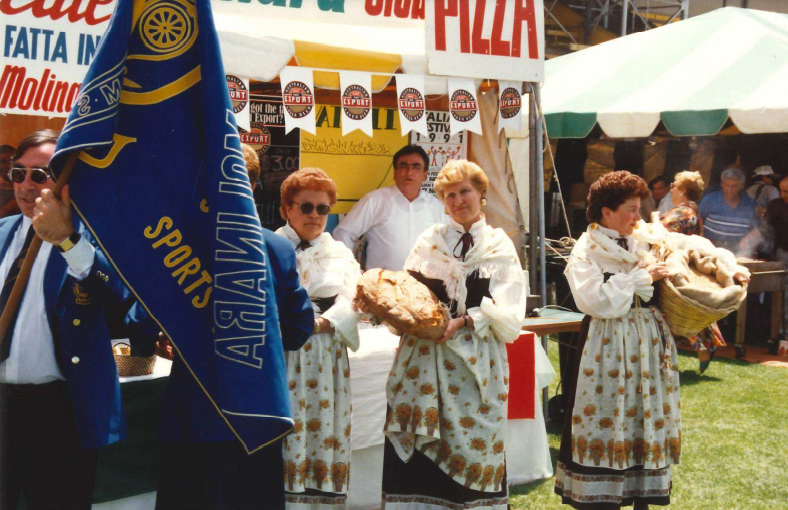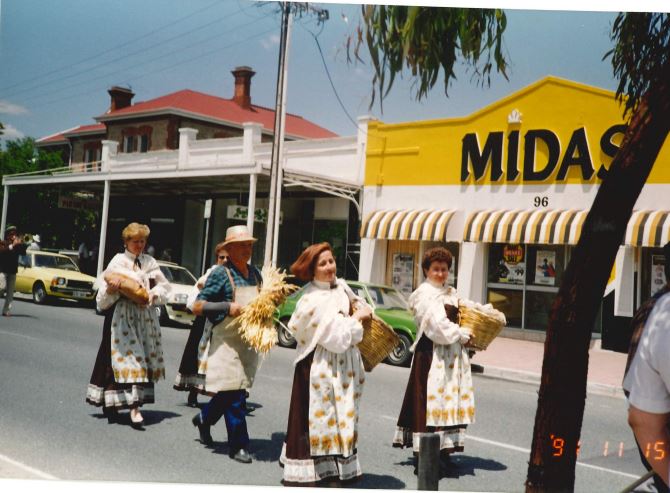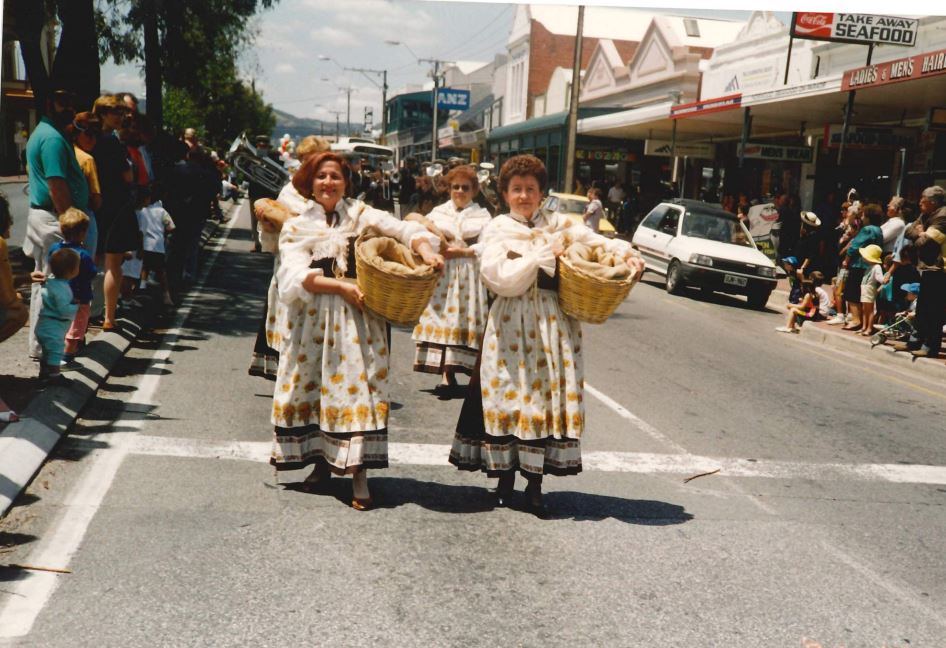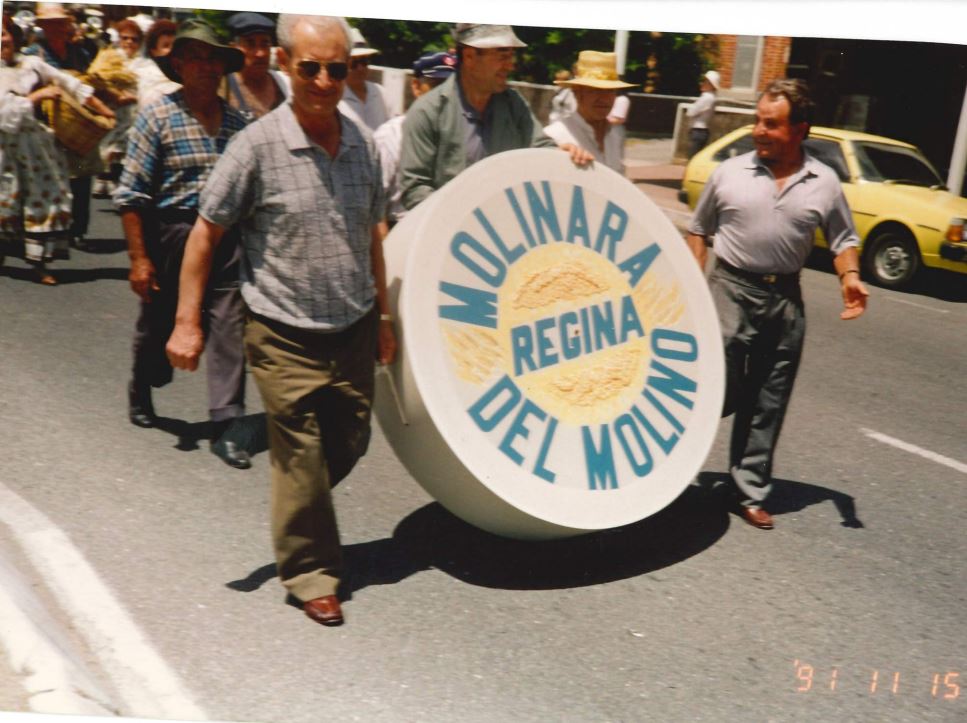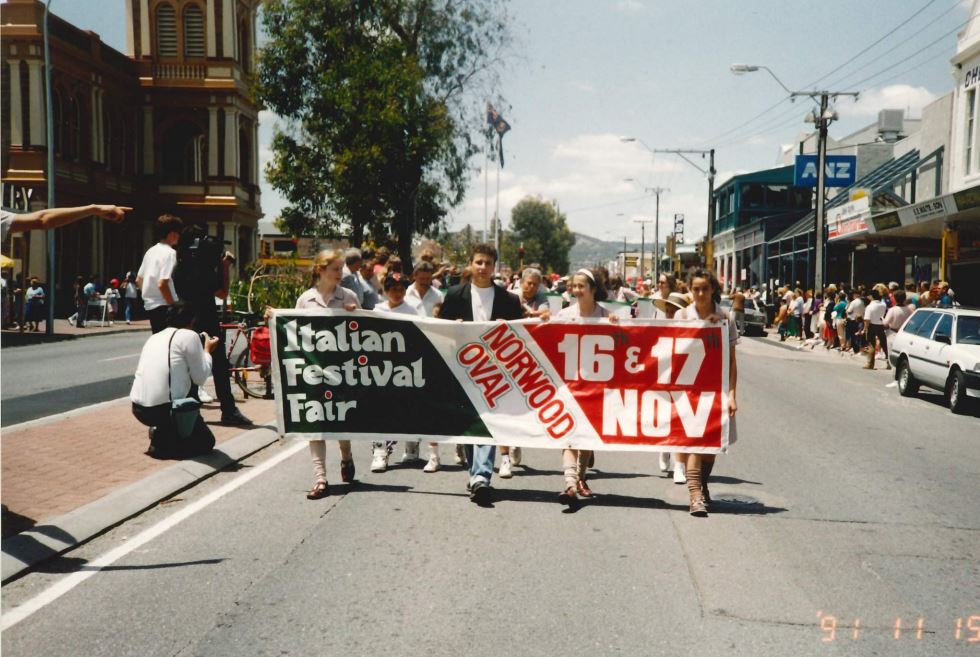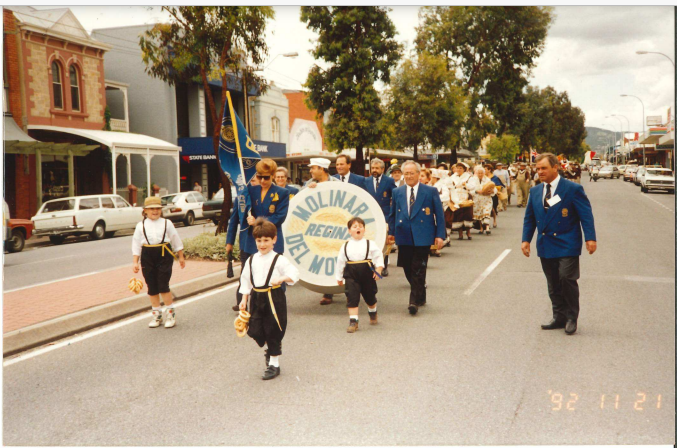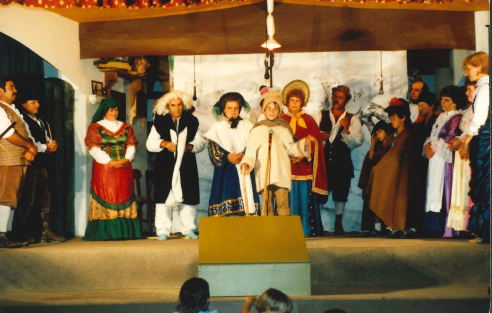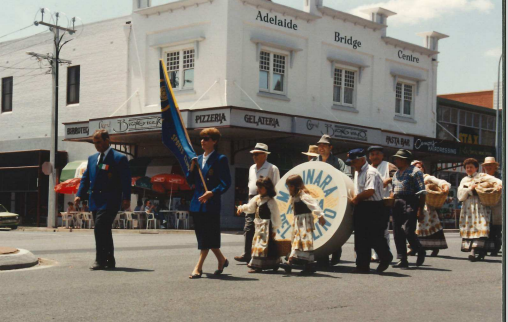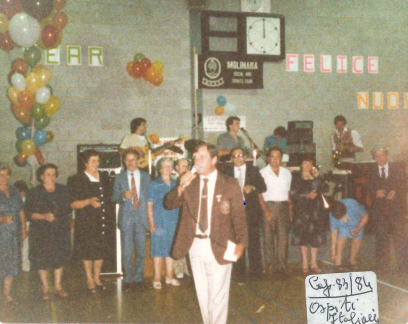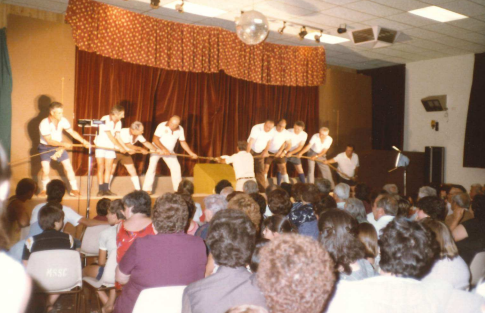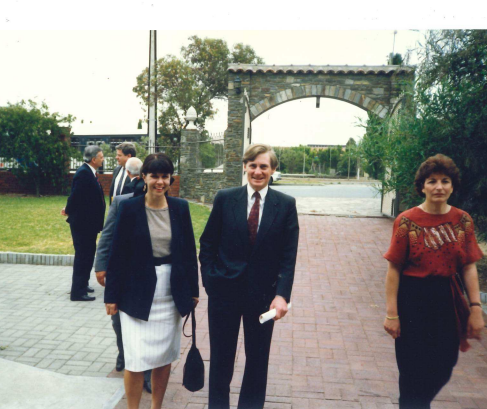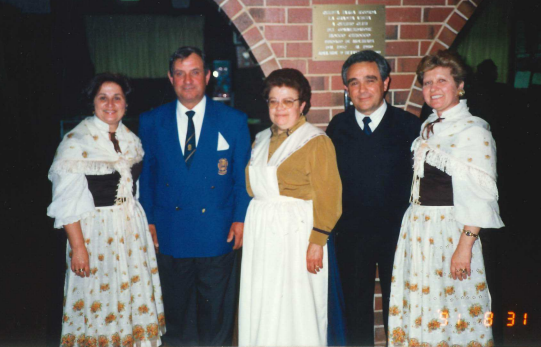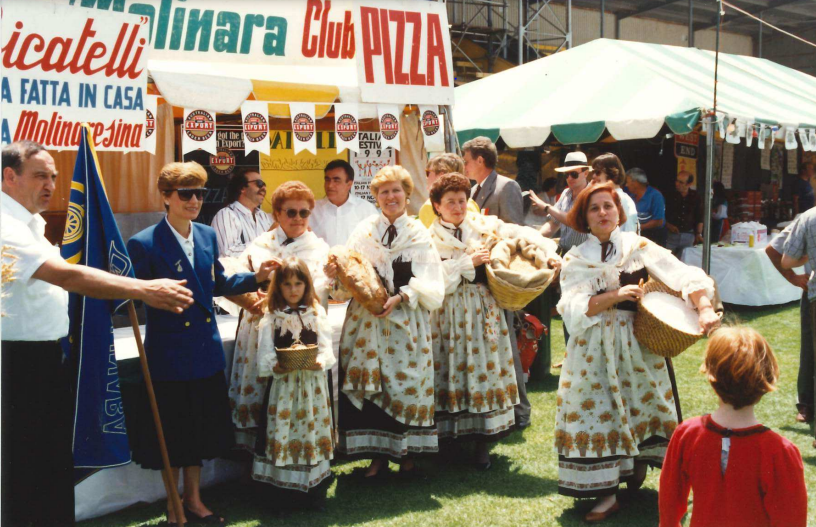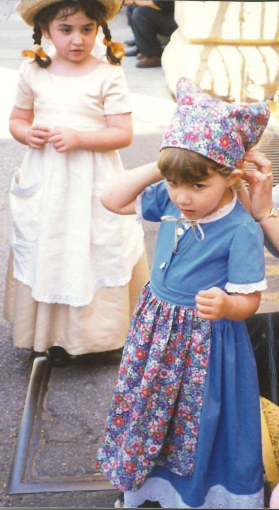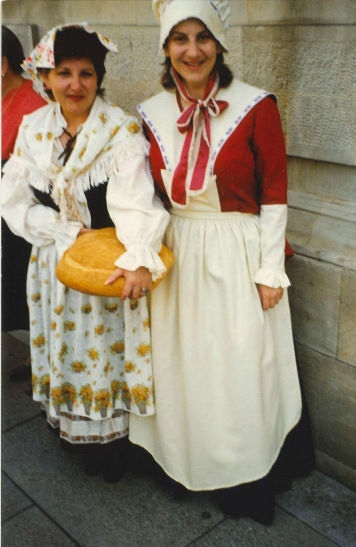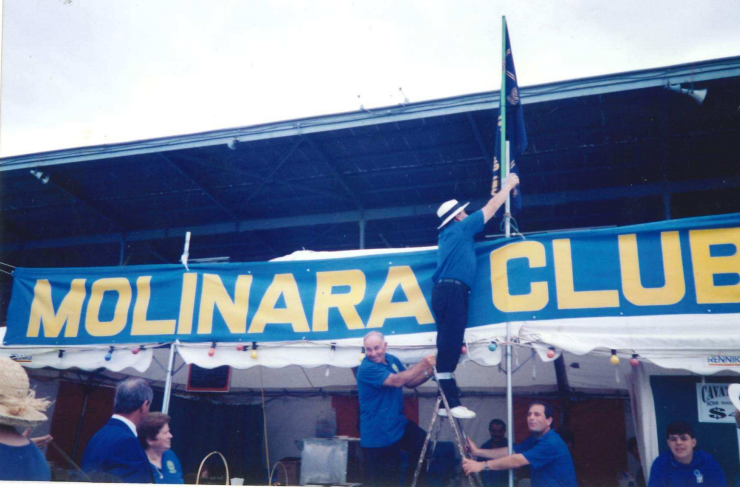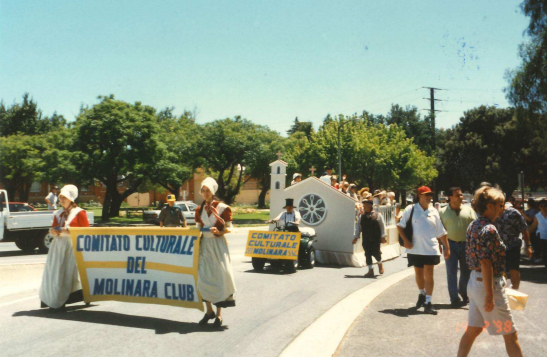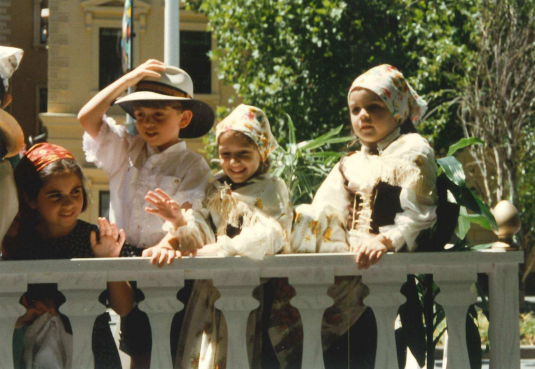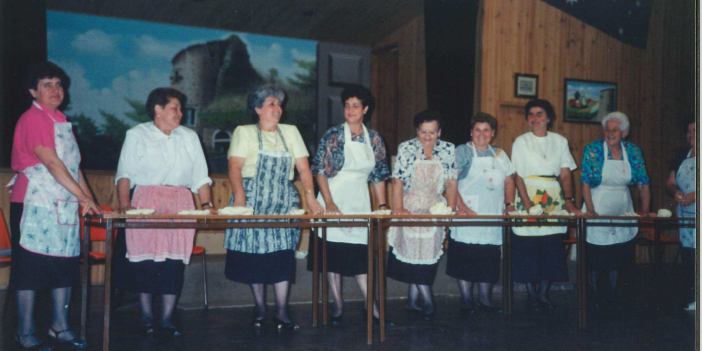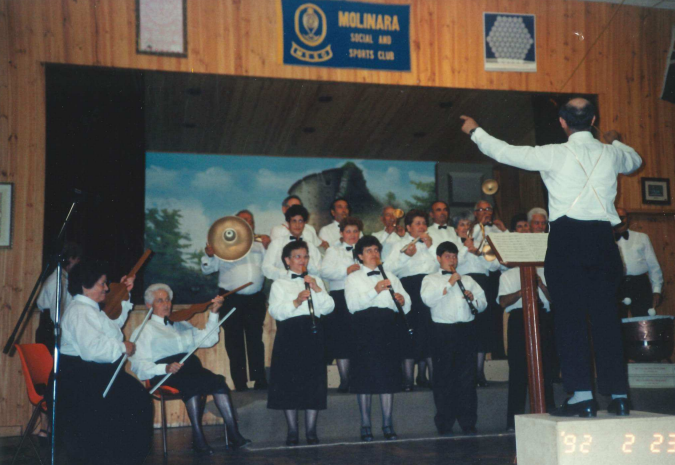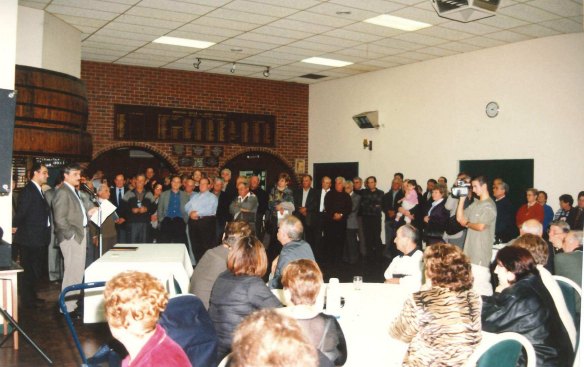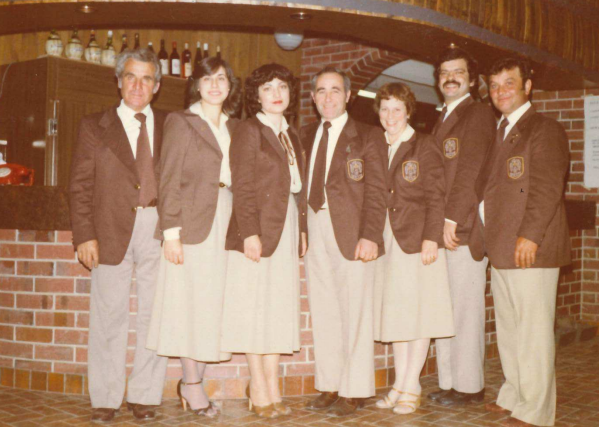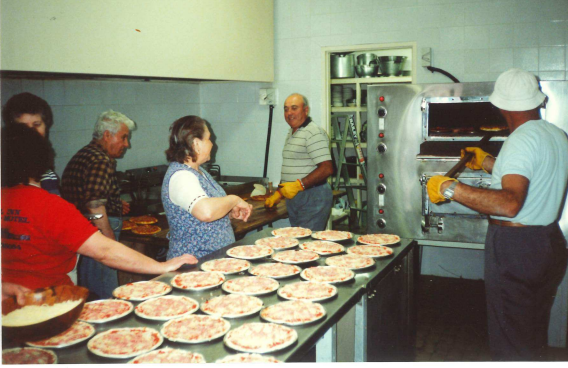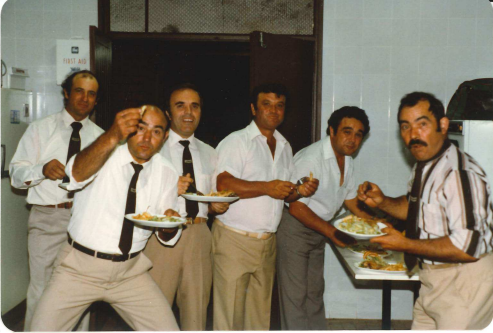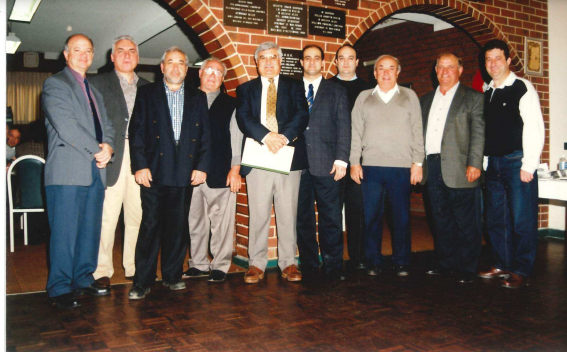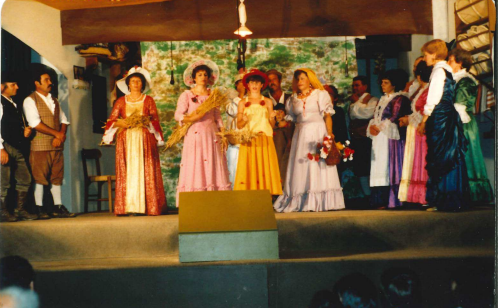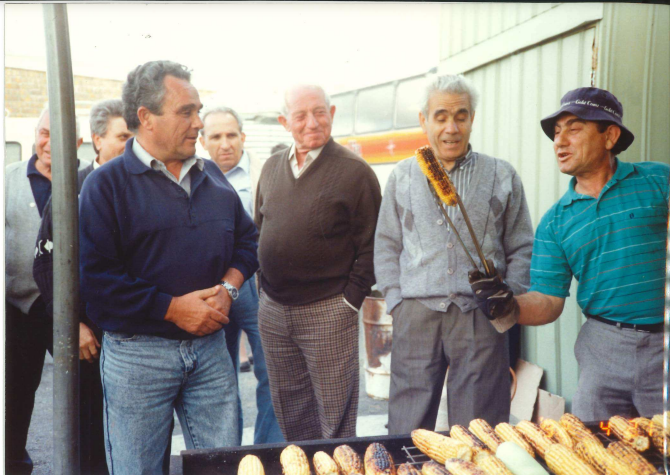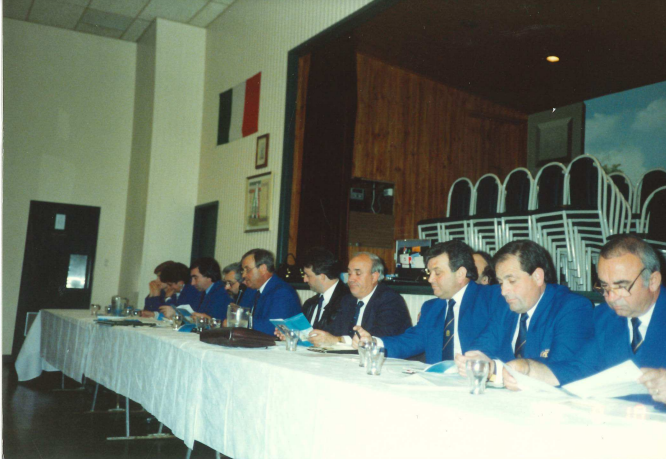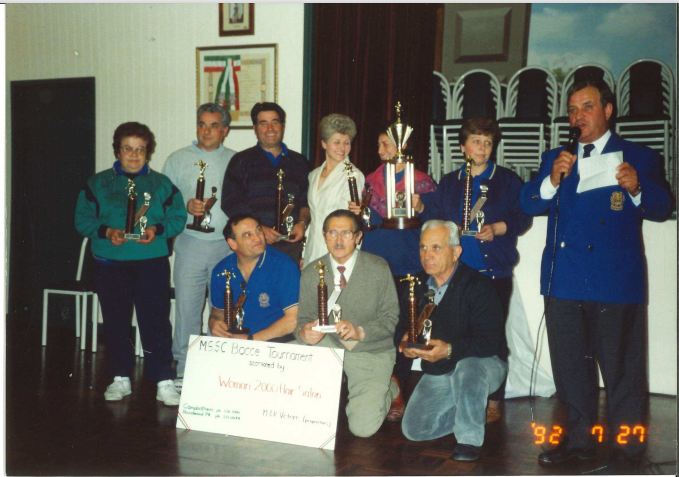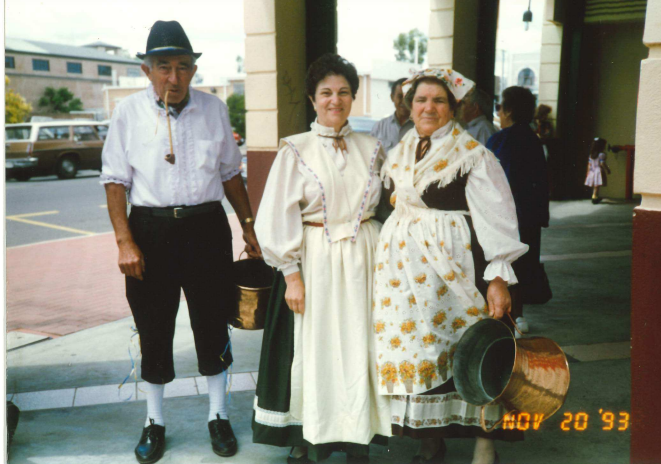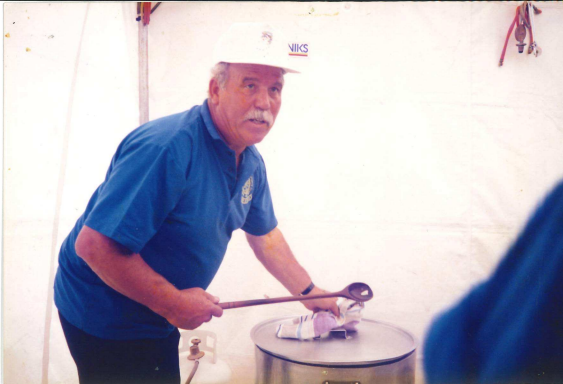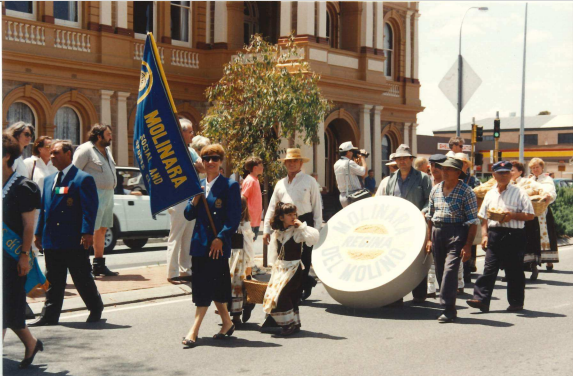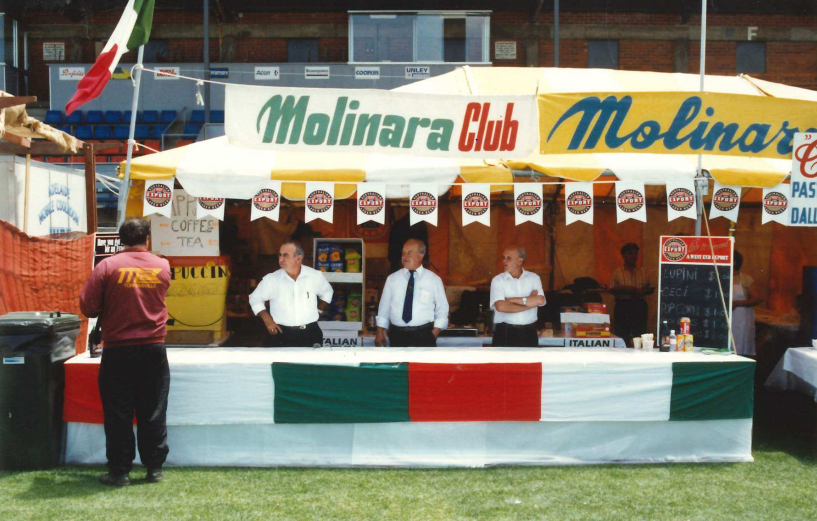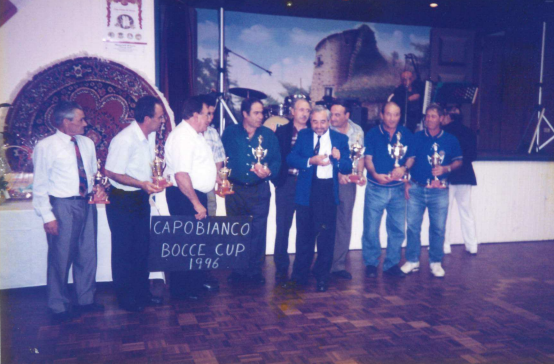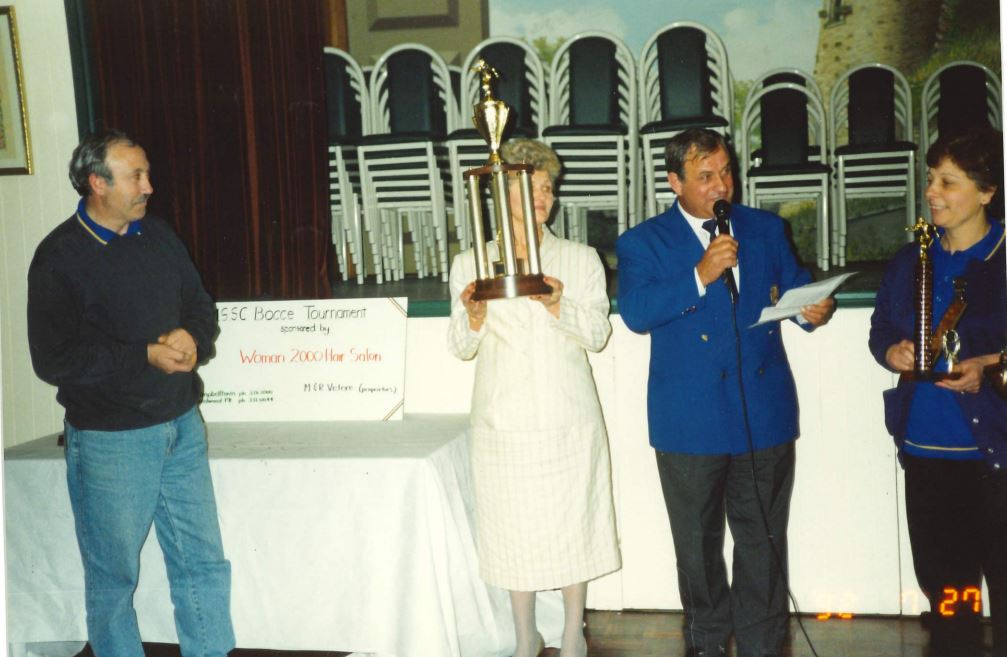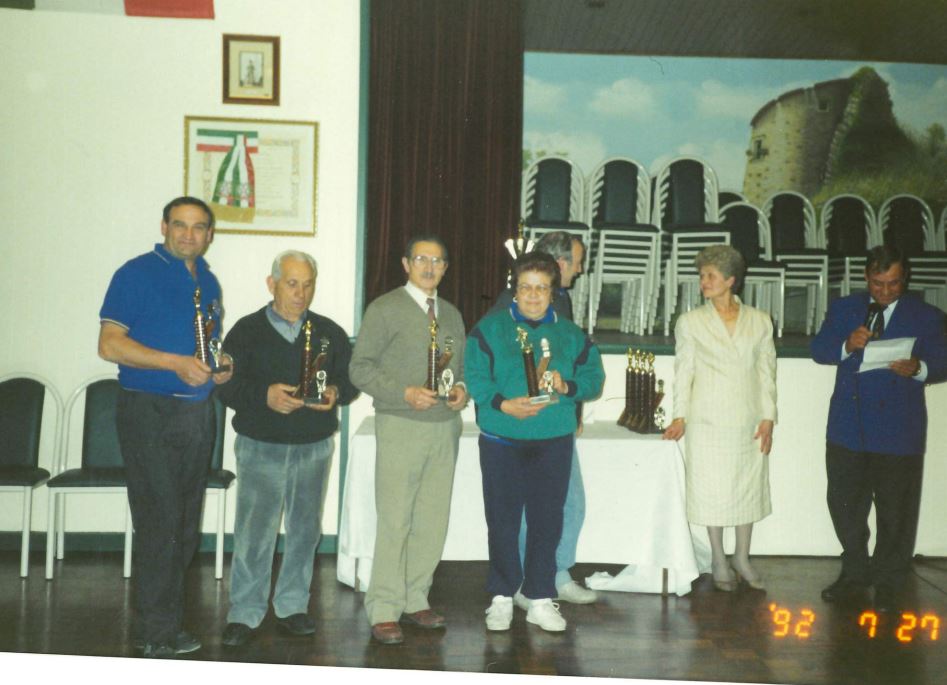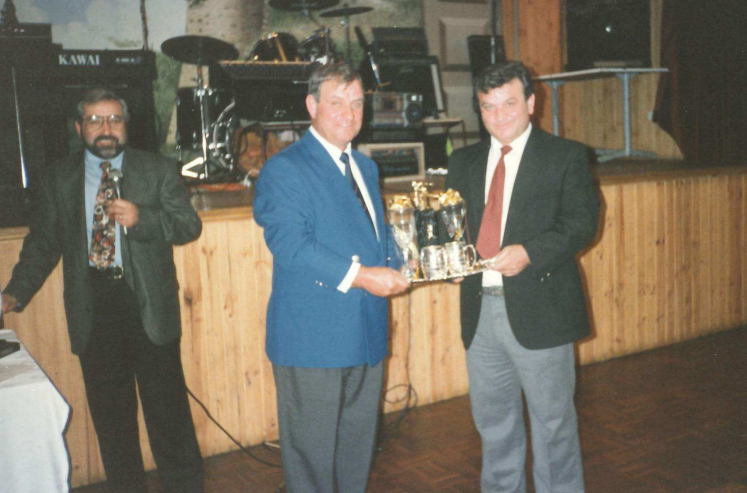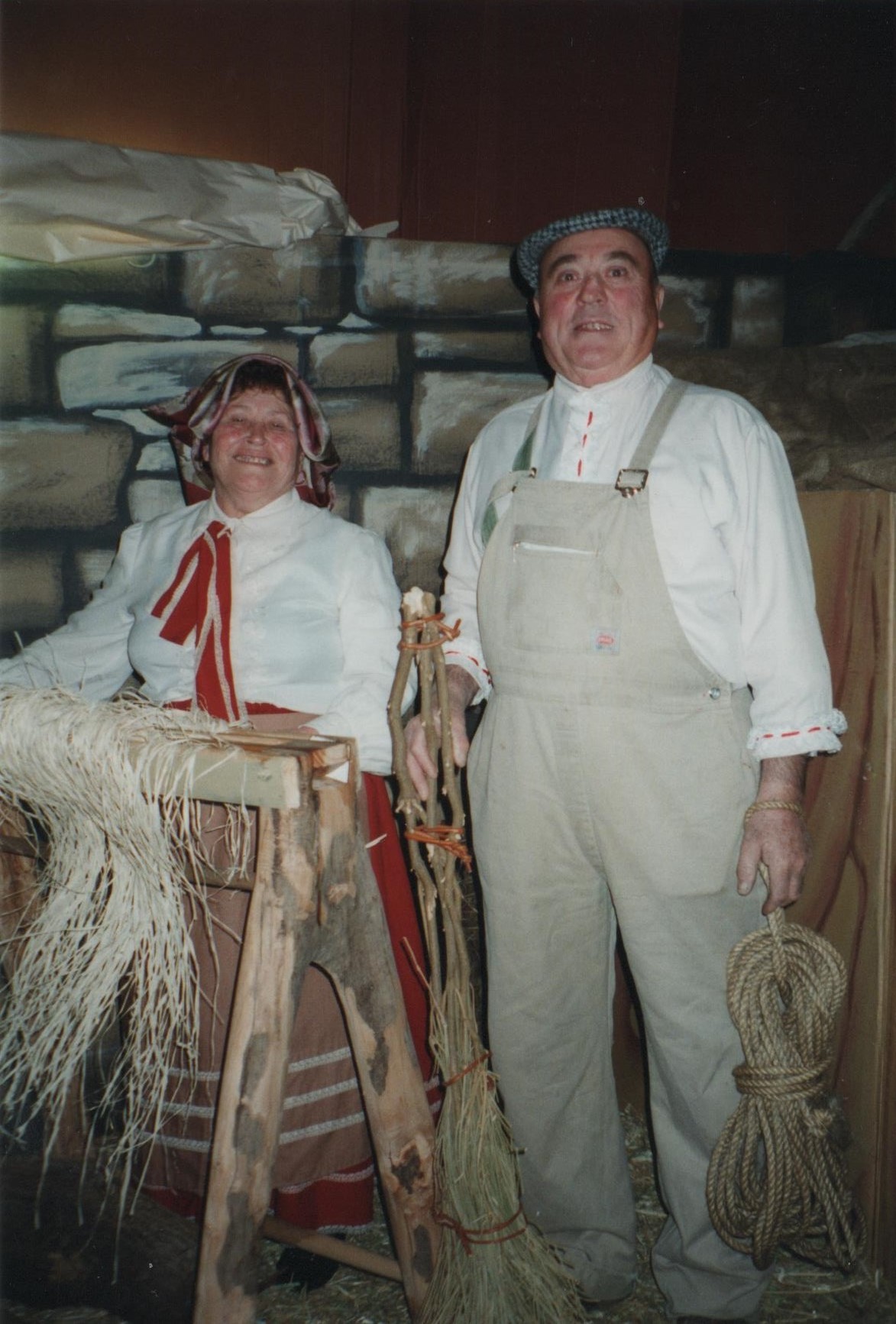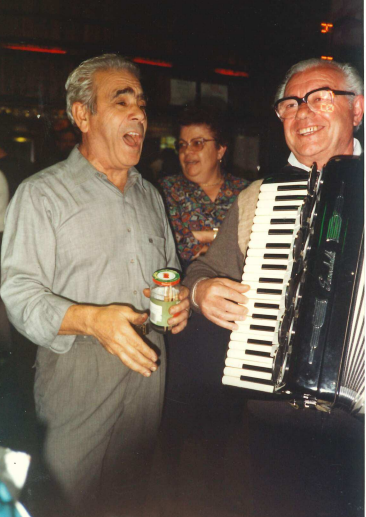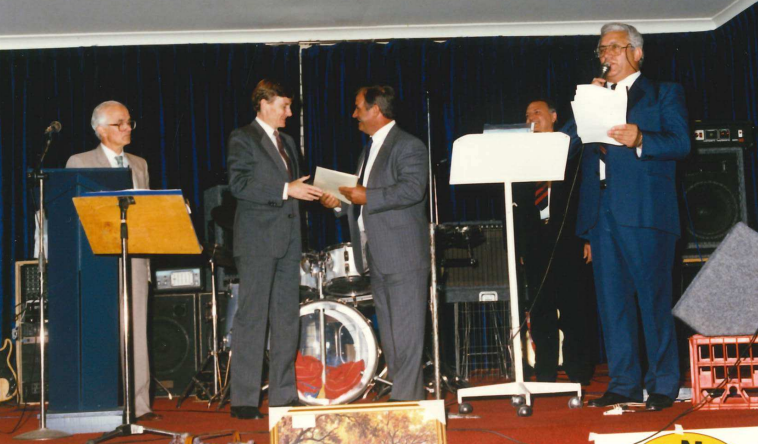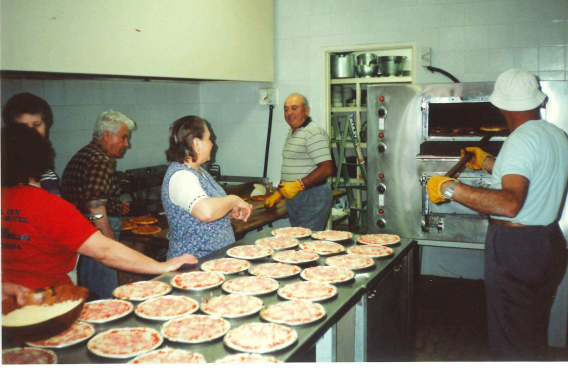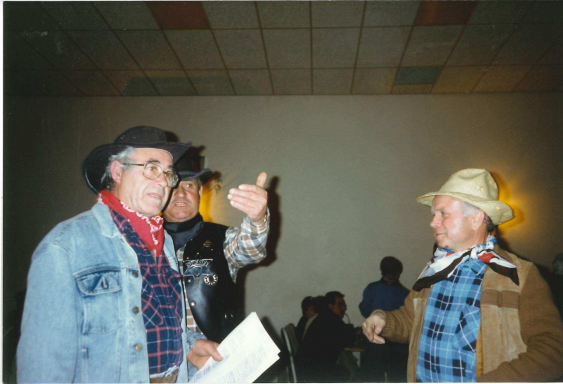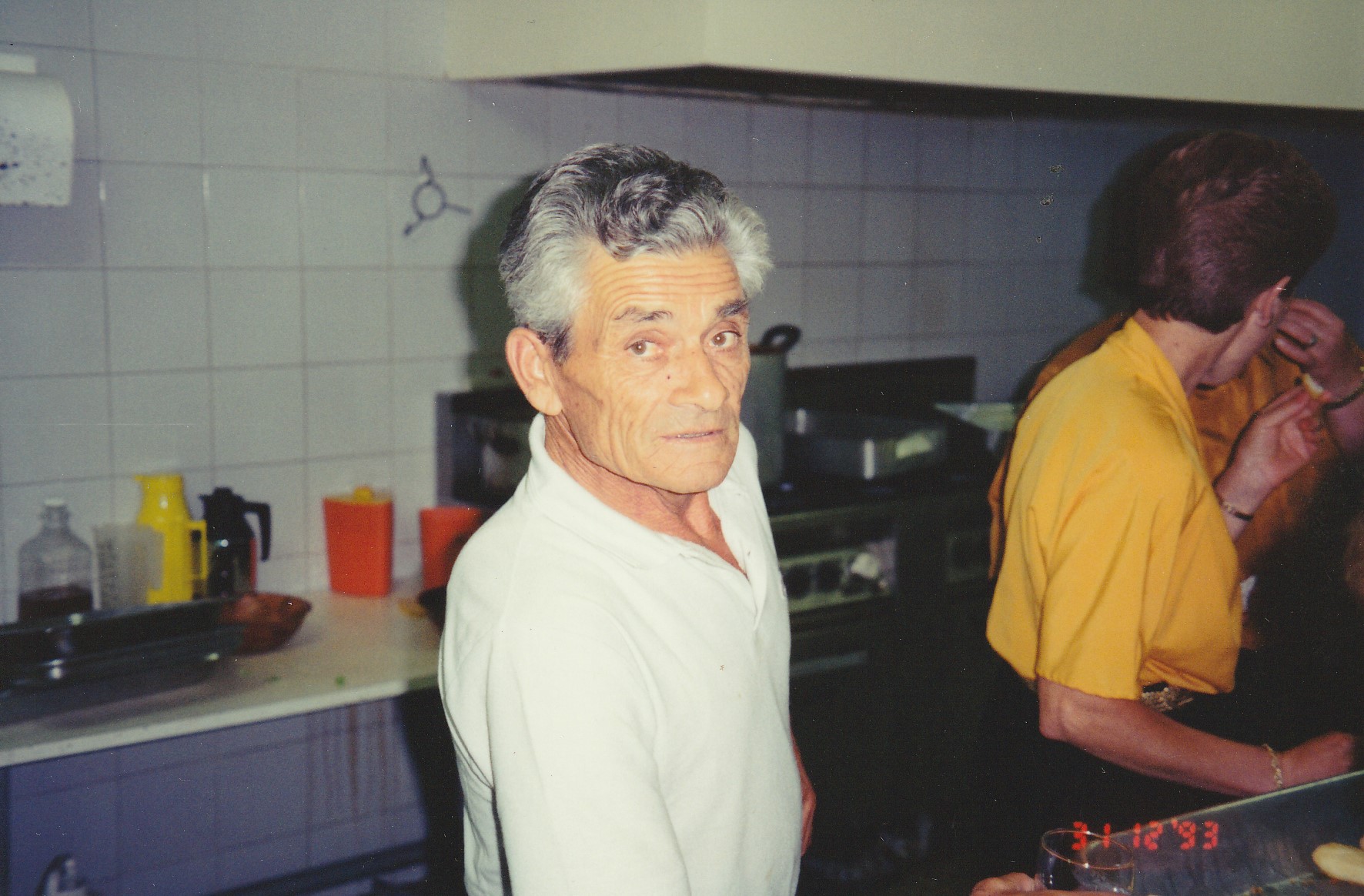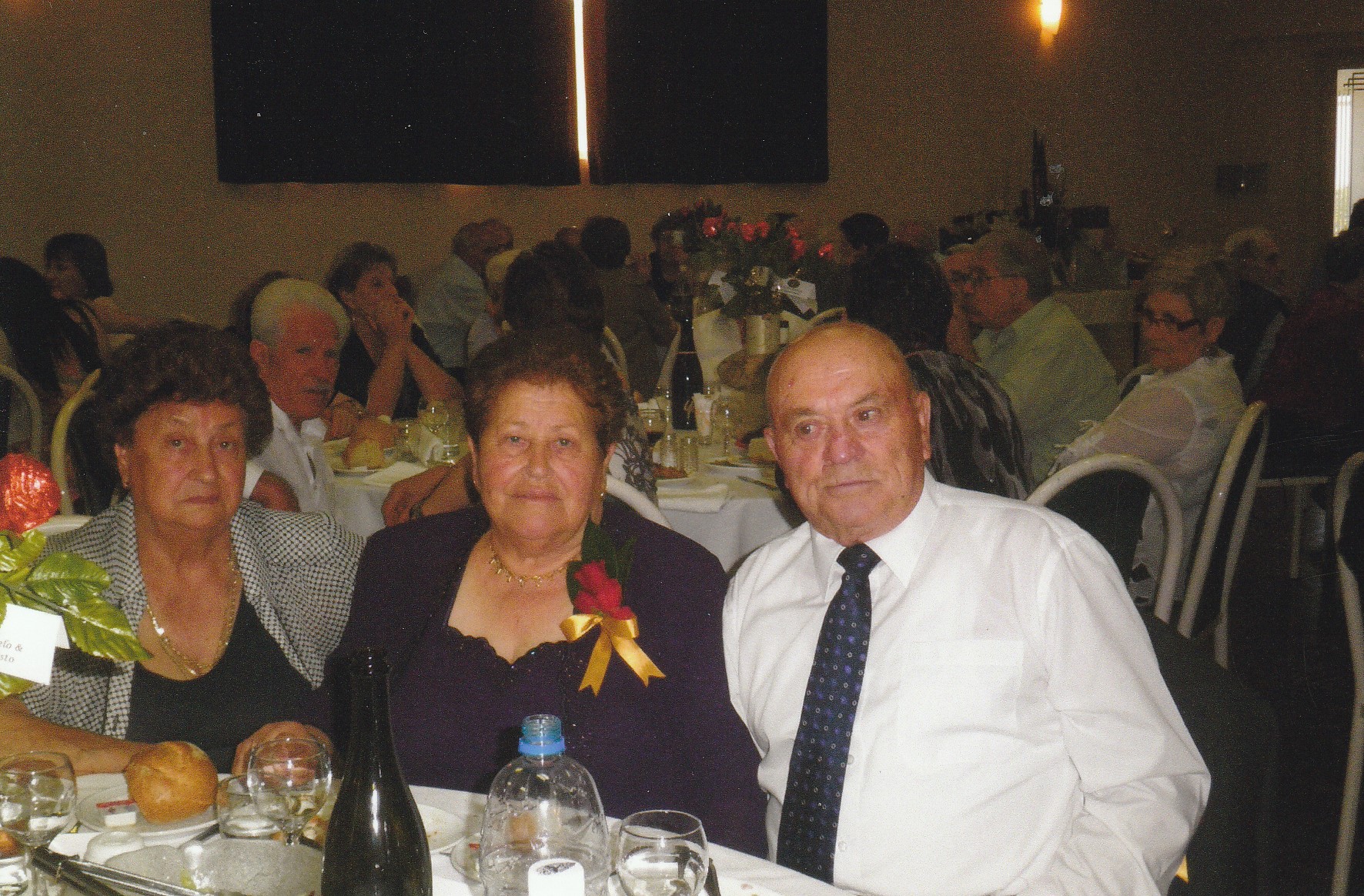Childhood memories of Molinara
Born in 1947 my first recollection relates to my experience being chased by a young ram, whilst looking after our small flock of sheep. My only escape, as I could not outrun it, was to climb the nearest tree and wait until my mother arrived to retrieve me. I must have been five years of age.
At some stage in the early fifties the municipality was abuzz with construction activity of some kind or other. I remember watching the hand operated dump bucket that was pushed on a railway line and when it came to the end of the line the bucket would tip its contents over the embankment below. My father had been lucky enough to be employed on this project and it was the first time he had actually received a wage.
I can recall my father coming home from work one day and bringing home a few small packets of something that looked like creamy cheese. This delicacy made my mouth salivate until I realised it was in fact individual serves of butter.
Another experience is one that I have regretted all my life. We lived in a two-storey stone house in the outer part of the main town proper. The house was situated in a small square surrounded by other homes. In the middle of the square stood a rather large straw stack, which must have belonged to another family to use as kindling to light their fire. One day (aged four) when playing with my cousin who was six months older, I found a box of matches in my mother’s upstairs bedroom hidden under her pillow. She would use these matches to light her candles as there was no electricity at the time.
My cousin and I decided to light this straw stack. We were both hugely excitedly as we watched the flames leap high into the sky. I do not recall being ostracised or receiving corporal punishment. I knew that my parents were not happy. I was fortunate that my cousin was older and sustained all the blame. As I grew older my mother would remind me that it took a lot of town people to put out the fire by filling up buckets from the nearby well and dousing the flames.
The owner wanted retribution and fortunately my grandmother had sufficient straw of her own and agreed to compensate the aggrieved owner. It took a number of days and many trips to return the straw. The only mode of transport was two donkeys.
Another memory is seeing the first push bike in our square and wondering how rich the owner must have been to own such a new contraption. The push bike was to play another part of my life when at Campbelltown in Adelaide, having only recently arrived, I would teach my mother how to ride a bike, so she could travel to work.
I was perhaps five and our family had built a small farmhouse a few kilometres from the town. The house had been built of stone and adjacent to it was a chicken coop and the roof consisted of rafters and terracotta tiles. Being partial to good protein I would collect an egg and make a small hole in it and suck the egg. I would then break the shell and place it in the roof between the rafters and the tiles. My mother could not for the life of her work out how the eggshells could be placed by a culprit hungry snake.
I eventually confessed, but I can not recall the punishment.
I need to mention another misdemeanour. At about the same time, we had a wooden cupboard in the kitchen and the front door was covered with small wire netting to keep the flies out. In it, was stored a number of food items including a homemade block of cheese which was placed there for maturing.
I would on a regular basis open the door and take a few morsels of cheese. I would pinch small pieces off with my fingers and enjoy the delicacy. My parents spent weeks trying to work out how the mouse got in, to eat the cheese. I have continued to love cheese all my life.
Journey to Australia
I can still recall my first trip in a car when my dad wanted to emigrate to Australia in 1954.
At the time it was a requirement that a medical examination be undertaken by all the family members. This was carried out in Naples. As we travelled at high speed, I can recall how the fence posts were flashing by in the opposite direction to that which we were travelling.
My father left for Australia in 1954 and my mother, my sister and I followed eighteen months later.
We set sail on 4 January 1956 on the Flotta Lauro owned passenger ship the “Surriento”. I was eight and a half years old at the time and had not seen the sea before. It was a scary experience. I can vividly recall travelling through the Suez Canal and being in awe of the unfamiliar scenery and people on the bank waving as we sailed by. This ship had been built in 1928 and had gone a number of refurbishments over this time. It departed from Genoa on 22 May 1949 on its first voyage to Fremantle, Western Australia. On the 30th of August 1956 it made its final voyage to Australia. The ship was decommissioned in 1966.
The thirty-day long journey on the “Surriento” was for me a very bad experience, being seasick for most of the time. The voyage was long, and the food was getting worse as the trip progressed. After the third week all I could put down was afternoon tea with dry biscuits. The daily pasta dishes were disgustingly foul, and I could no longer stand the taste. The ship was noisy and screeched all the time. We were aware that it was under terrible stress.
When the ship docked in Fremantle the temperature in the shade was 40 degrees Celsius. I was that keen for my feet to touch terra firma that I could handle the heat. The surrounding was harsh and dry with little greenery. The ship continued its journey to Port Melbourne where we disembarked on 2 February 1956. We then travelled by train to Adelaide. At my age everything was new and interesting. I have never regretted coming to Australia and the opportunities it has provided have been significant. My dad would say that making the decision to emigrate to Australia was not easy, but he knew that staying in Molinara would be difficult for him and the family and he had to look for a better life. He was so courageous.
Growing up in Adelaide
I can vividly recall my mother sending me off to the nearest school, about two kilometres from our first rented house in Newton. No drop offs in those days!. My first day at Campbelltown primary school with not one word of English, was a memorable however frightening experience. My home-made lunch consisted of salami and roasted capsicum sandwiches, wrapped in a kitchen cloth which I carried as a swag. No plastic lunch boxes known at the time. The other students were very inquisitive as to what I had in my swag. The smell coming from the capsicum must not have been encountered before.
I was fortunate that there were a number of other Italian boys at the school, and we soon became friends. They helped me significantly in the assimilation process and taught me how to deal with the racial comments being directed at us. We took it in our stride and the expression “sticks and stones may break my bones, but names will never hurt me” was our defence, however, when riled up my response would be to call the Australian boys “kangaroos without a tail”.
In the early years, my family found it difficult to grasp the English language but were fortunate that there was an Italian grocer nearby. In addition, the daily bread deliveries to our front door by an Italian baker was a welcome event, as was the monthly visit by the oil man. Everyone was paid in cash.
It soon became evident that I would become the translator, and I would be expected to accompany my mother for her monthly shopping trip to the city department stores. John Martin’s was the preferred store at the time. My task was to ask the shop assistant for discount! If this request was declined, I would request that the assistant check with the manager. This strategy worked in most cases. I have used this approach all my life. As some wise man taught me, if you were purchasing a significant item, you were entitled to 10% discount. I still practice this today.
Generally, the family assimilated fairly well and had good Australian neighbours. However, for many years the need to remain close with other Molinarese friends was very important. This was made easy by the monthly invitations to weddings and baptisms.
My parents made the right decision to come to Australia because they believed the new country would provide greater opportunities for the entire family. No longer relying on the prevailing bad agricultural conditions in Molinara, was the best reward for them. They expected their children to have a better life than they had. Gaining my university qualifications was a proud moment for them and me.
When my own family and I returned to Molinara in 1988, it felt to me that I was right at home. My aunties welcomed me as a long-lost child. We visited my birth house which still exists (photo attached) and the external stairs reminded me when just a few days before we were due to depart for Australia, my mother fell down these same stairs and during the whole of the trip she had to carry her left arm in a sling.
I again visited my favourite pear tree that I remembered as a child, climbed a ladder and managed to pick a few of the tiny pears. I felt as if I had never left all that time ago in January 1956. However, I had no desire to stay and live there. We were on holidays and knew that we must return to Adelaide.
In my work and business life I have not experienced any adverse treatment due to my Italian heritage. I have been very fortunate indeed.
Becoming a member of the Molinara Club from its early years reminds me of one significant event. I was working in the Franklin Street office of Southern Farmers in 1973 when I took a phone call from Cosimo (Jim) Cirocco. He wanted me to attend an auction at Windsor Gardens that same afternoon. The auction was for the current clubrooms which at the time consisted of an old church, which was being sold as surplus to their requirements.
Jim was successful with his bidding and the hammer fell at $44,100, a considerable amount knowing that the Club had limited funds. Two categories of Club membership were quickly established: Foundation and Life members. These new memberships raised sufficient funds, together with bank finance, to allow settlement of the property to take place. I became a Life Member at this time.
During my time at the Club, I recall the many dinner dances the Club held at the Saint Clair Youth Centre, catering for in excess of 1,000 people. The Club was innovative and saw a demand for this type of get together which many other clubs were not able to provide. In February 1974 we managed to secure the popular Italian singer Paolo Mengoli to put on a show at our dinner dance. He was a great success.
The attached photo taken on the night with Paolo Mengoli and his adoring fans.
The second photo depicts some of our invited guests the Hon Ian Wilson (Federal Member for Sturt and Mrs Wilson, the Honourable Italian Consul and his wife and myself and my fiancée Margaret Beltrame. We married in November 1975.
